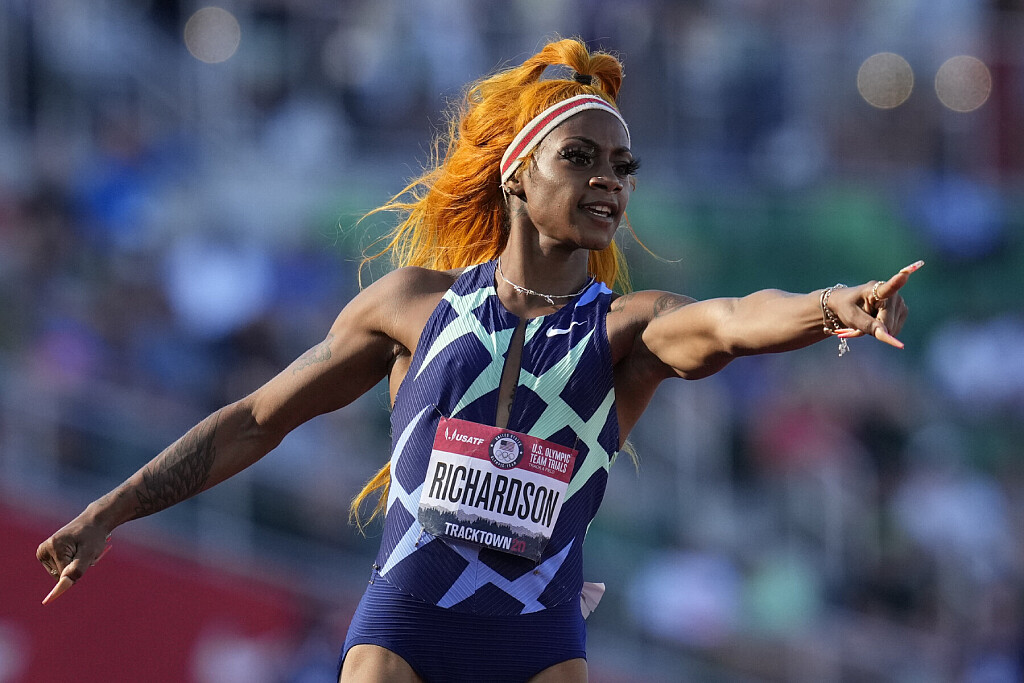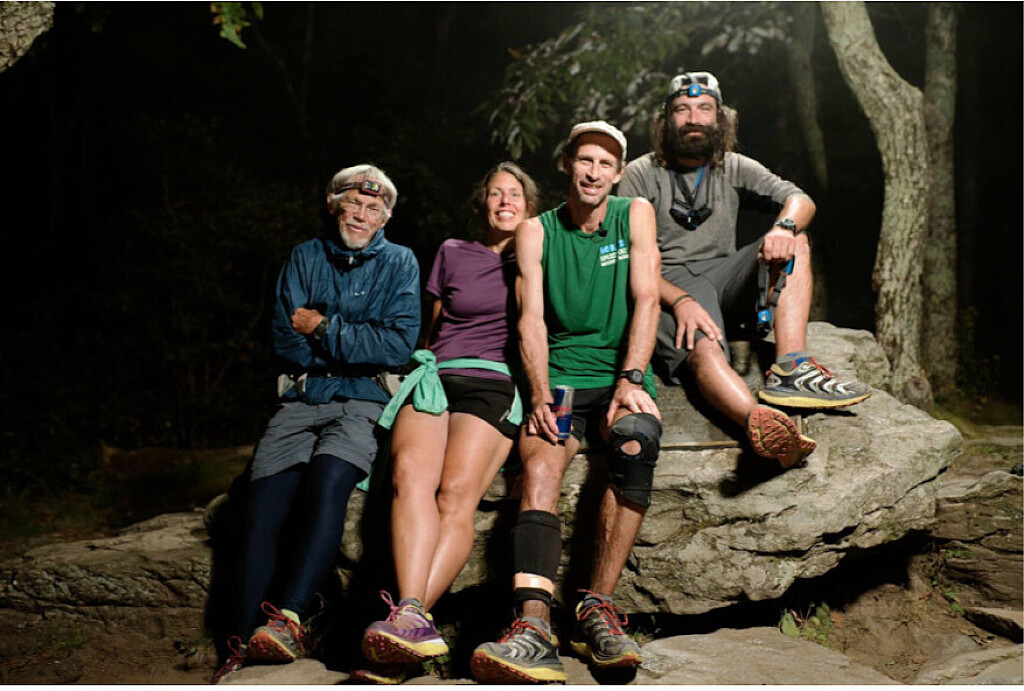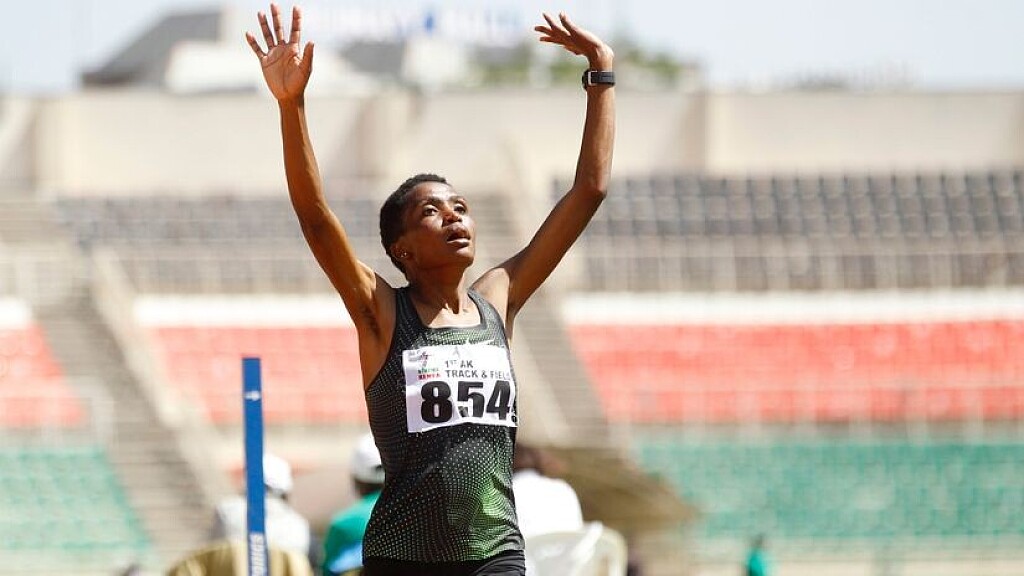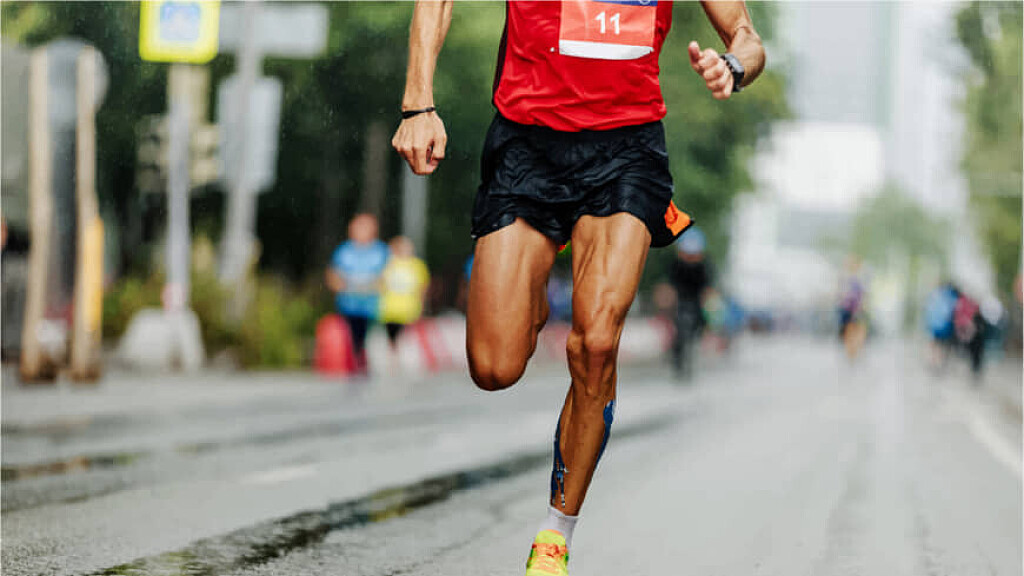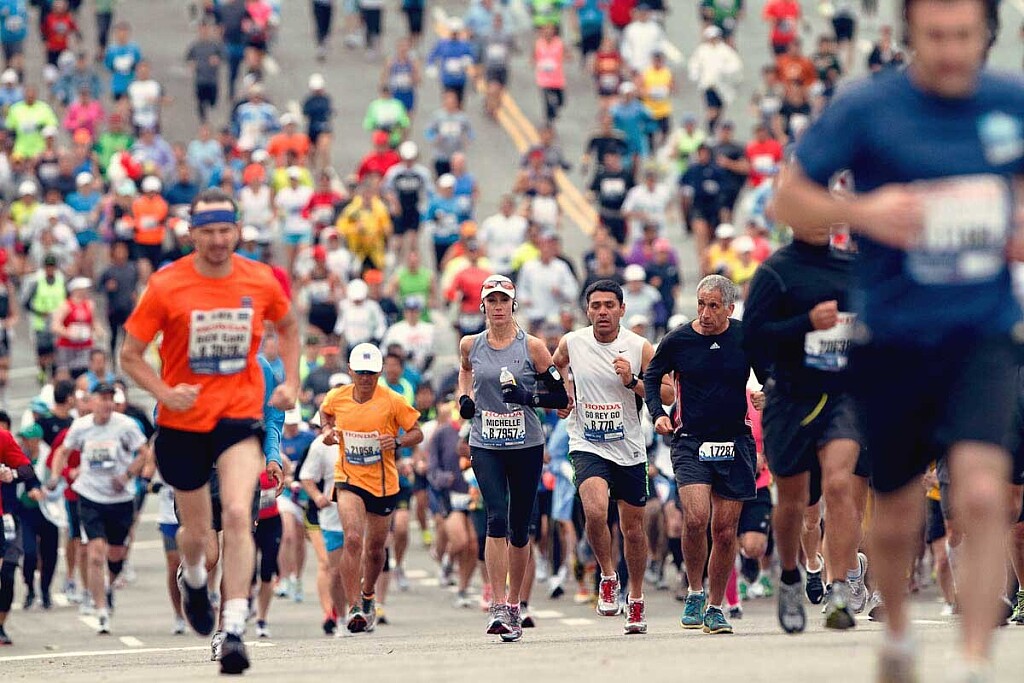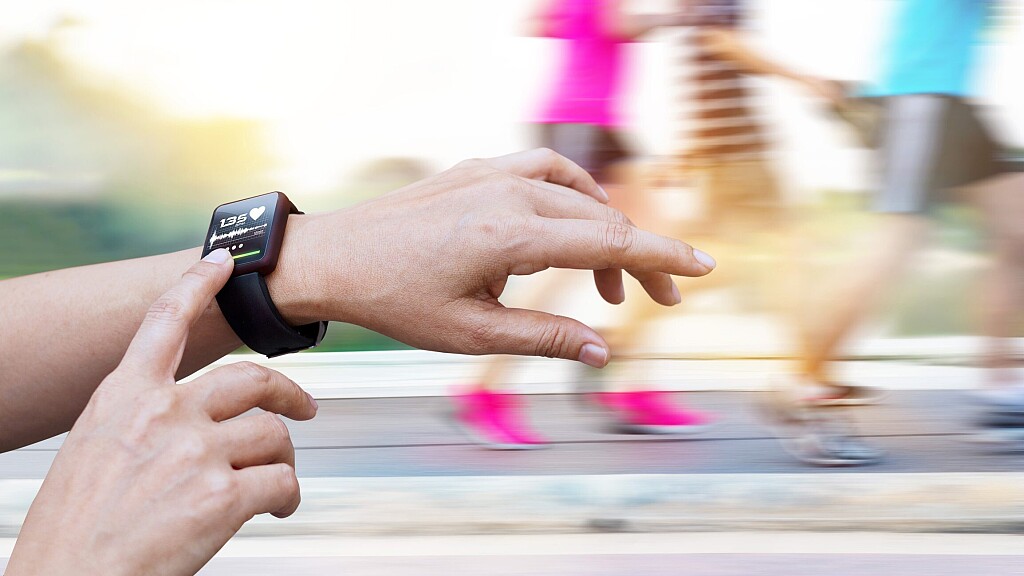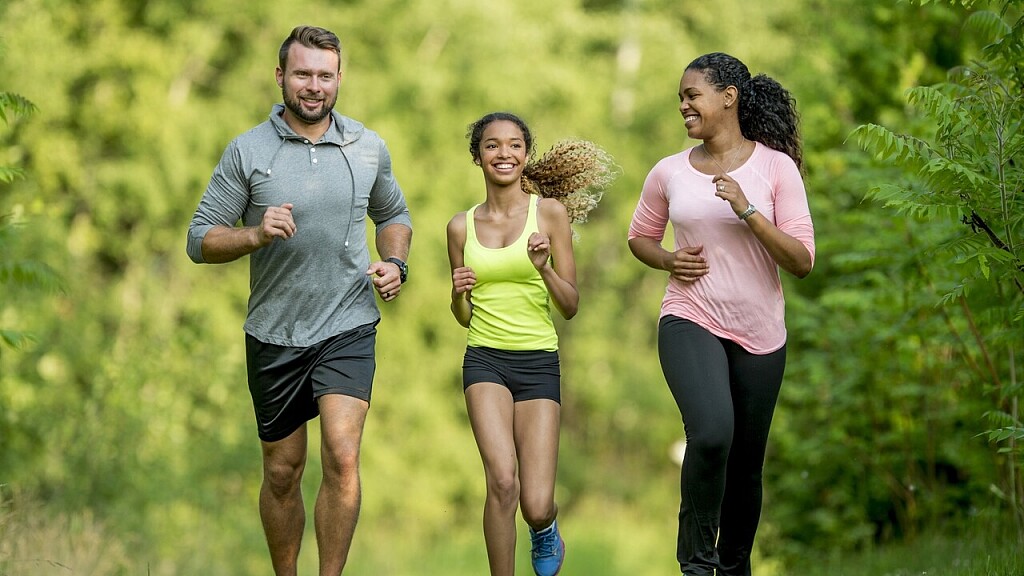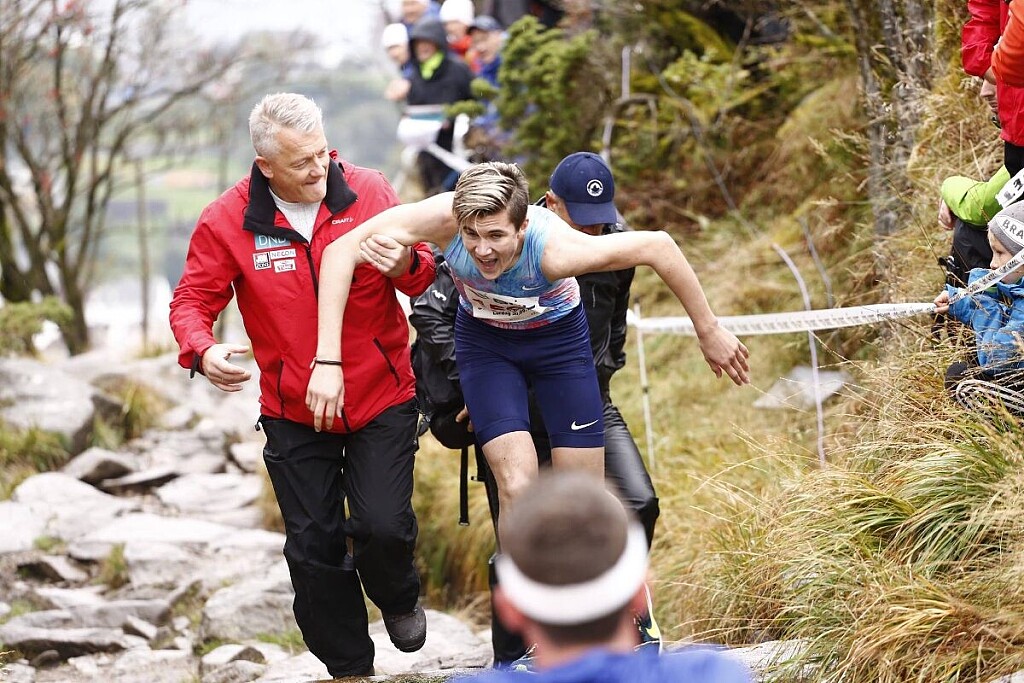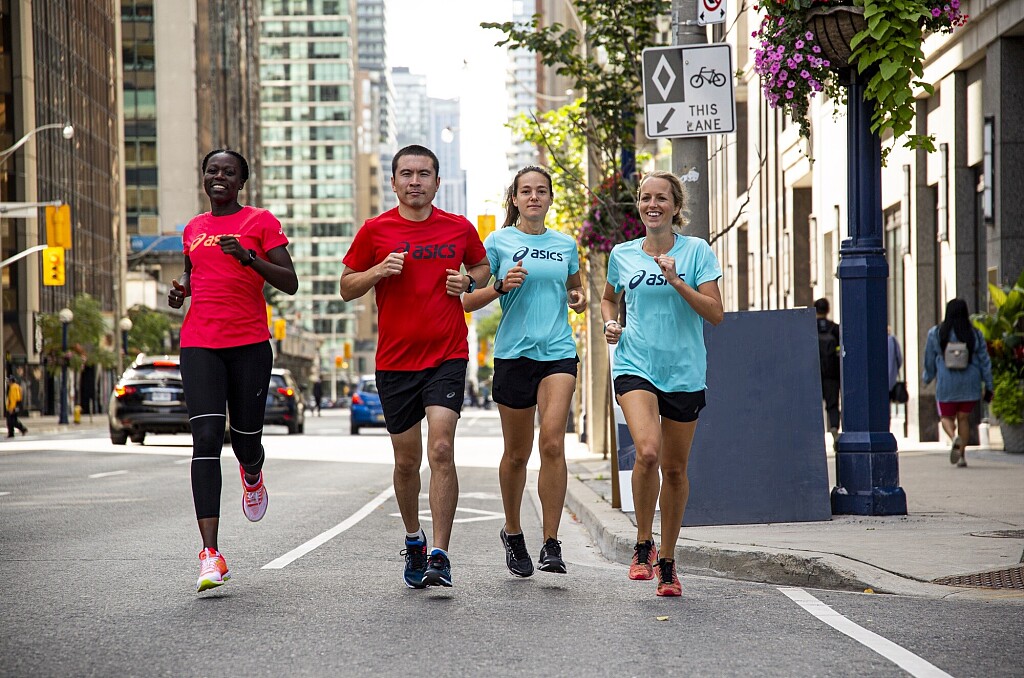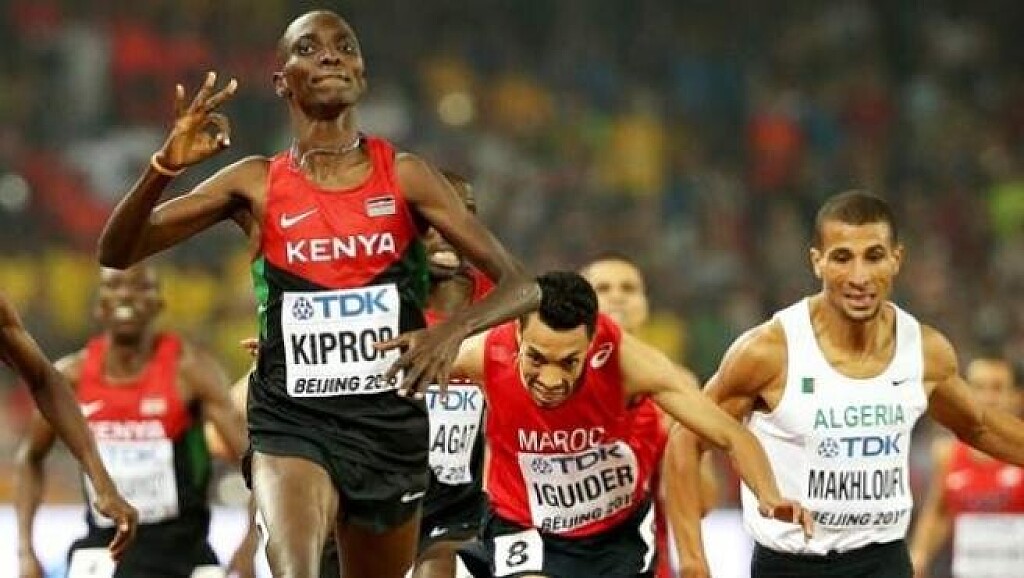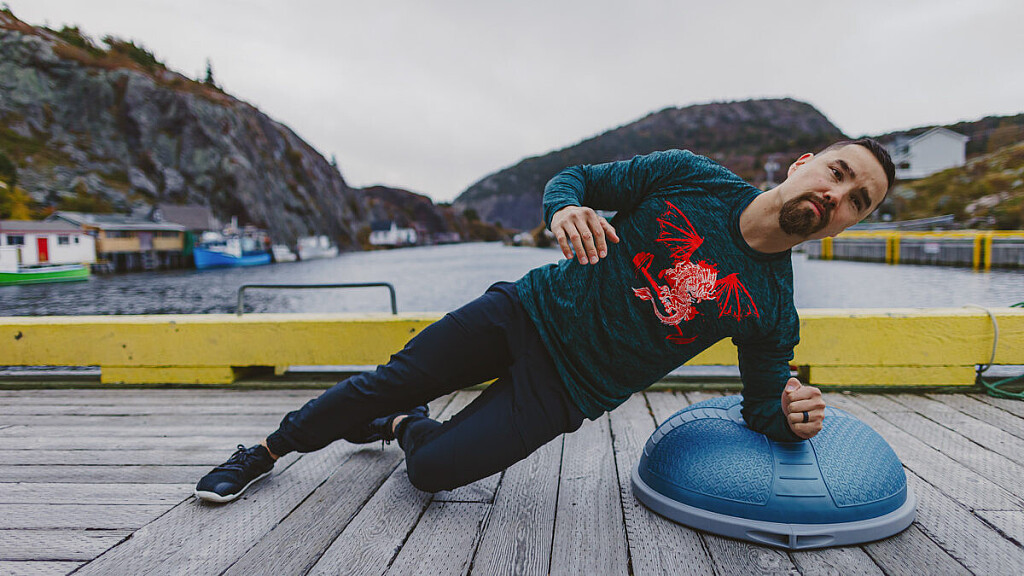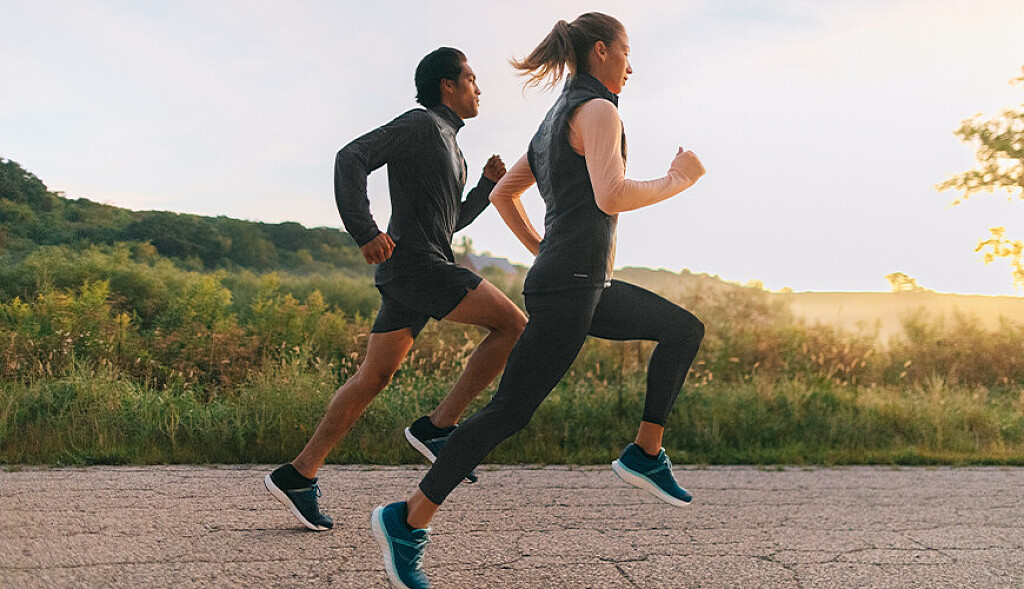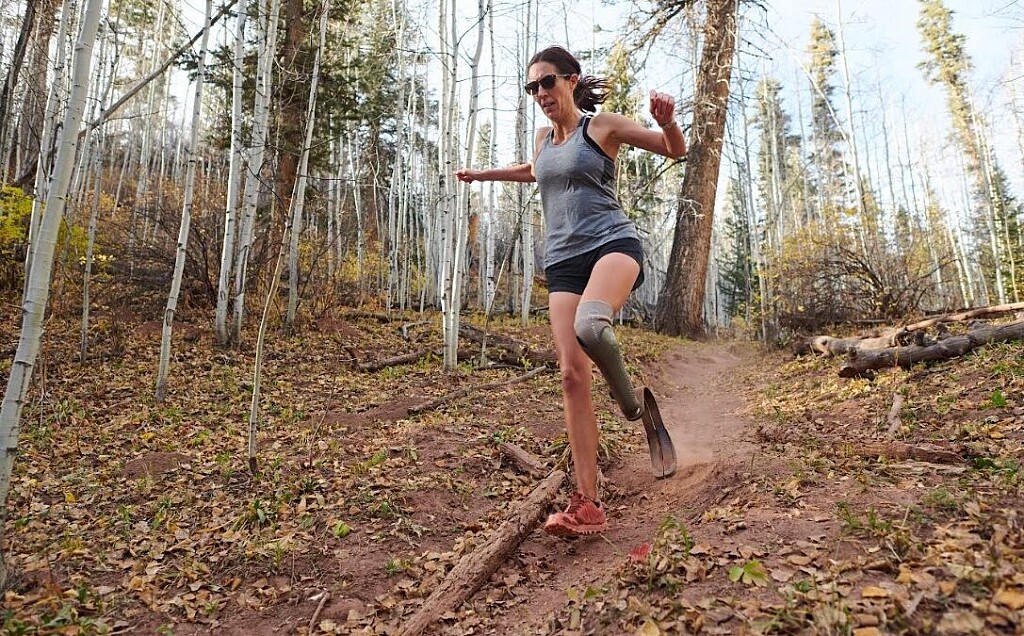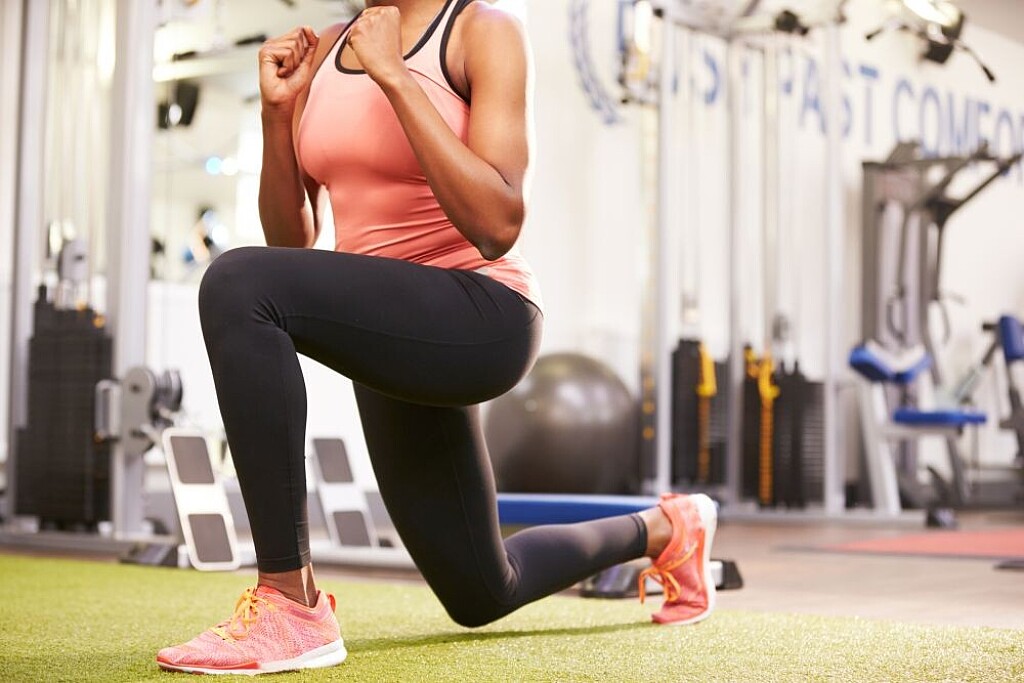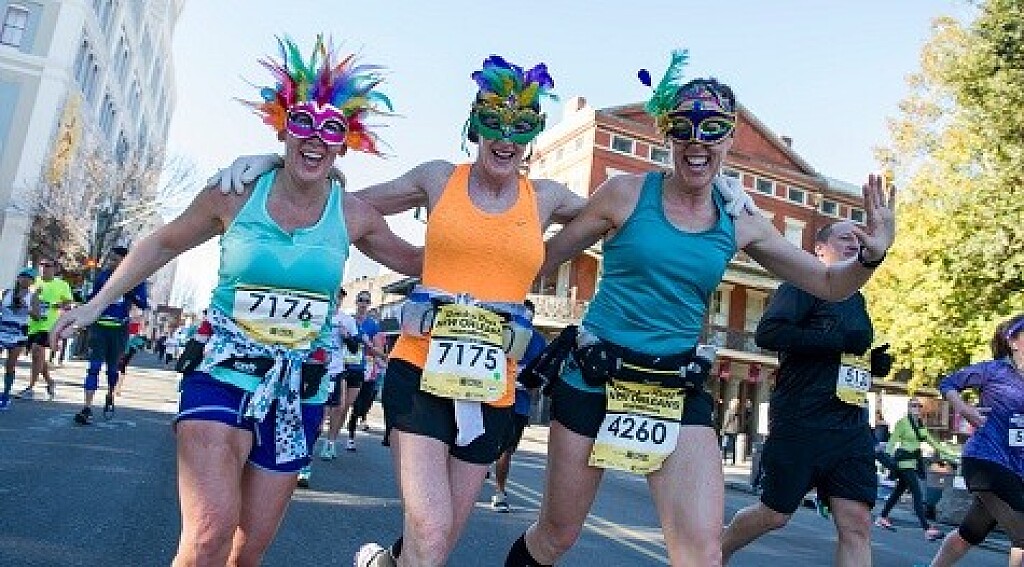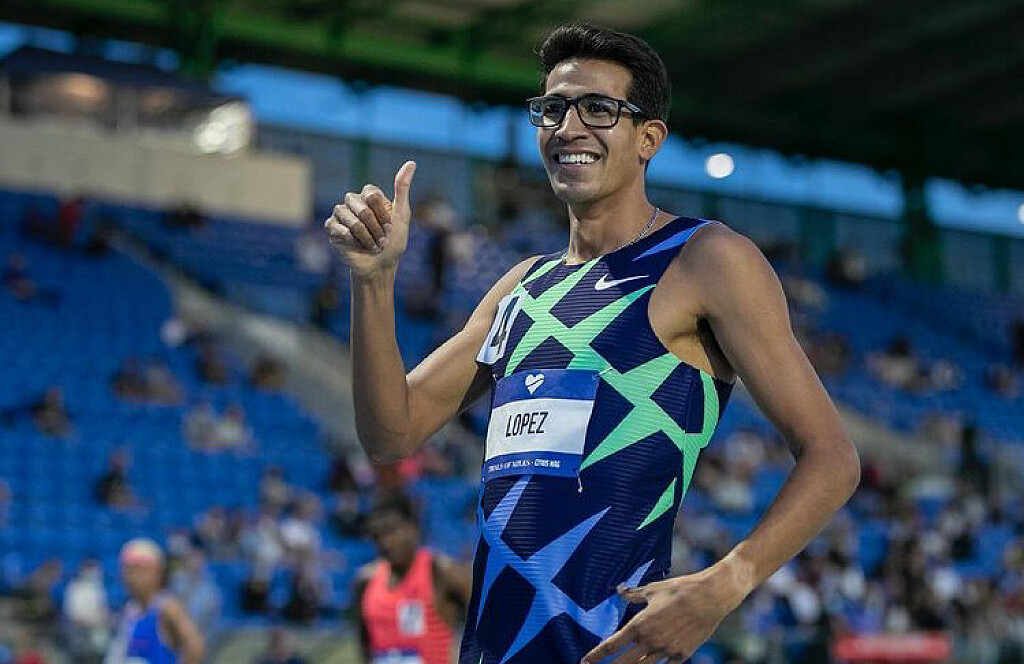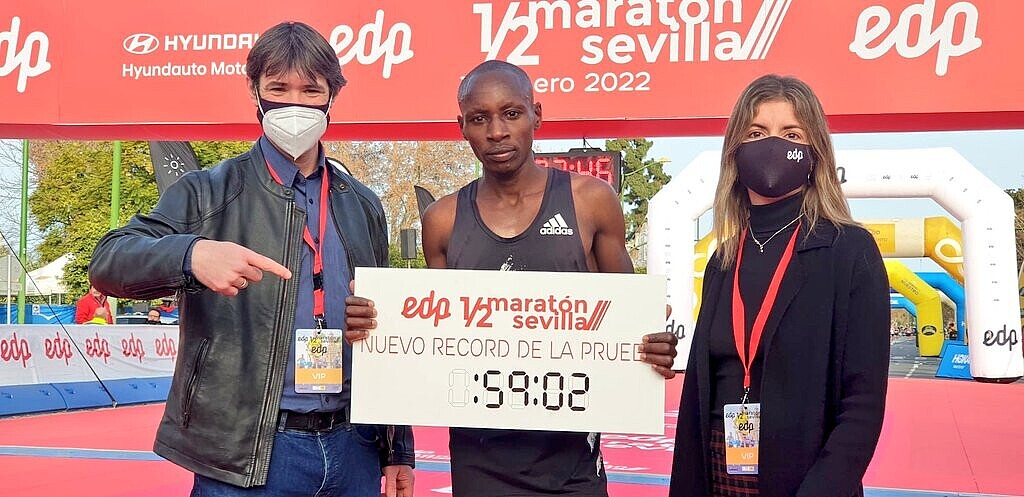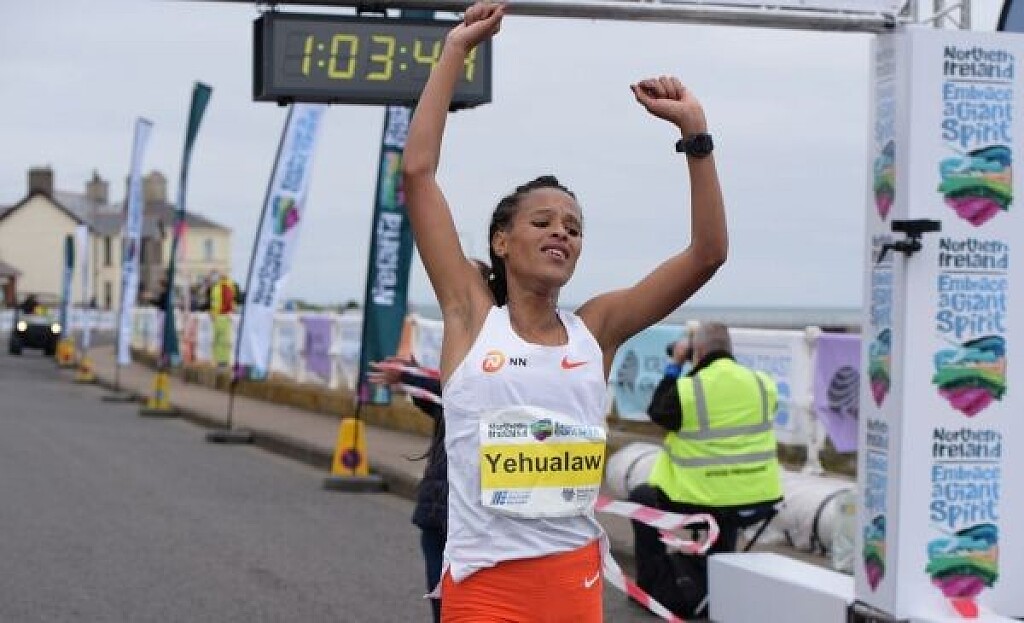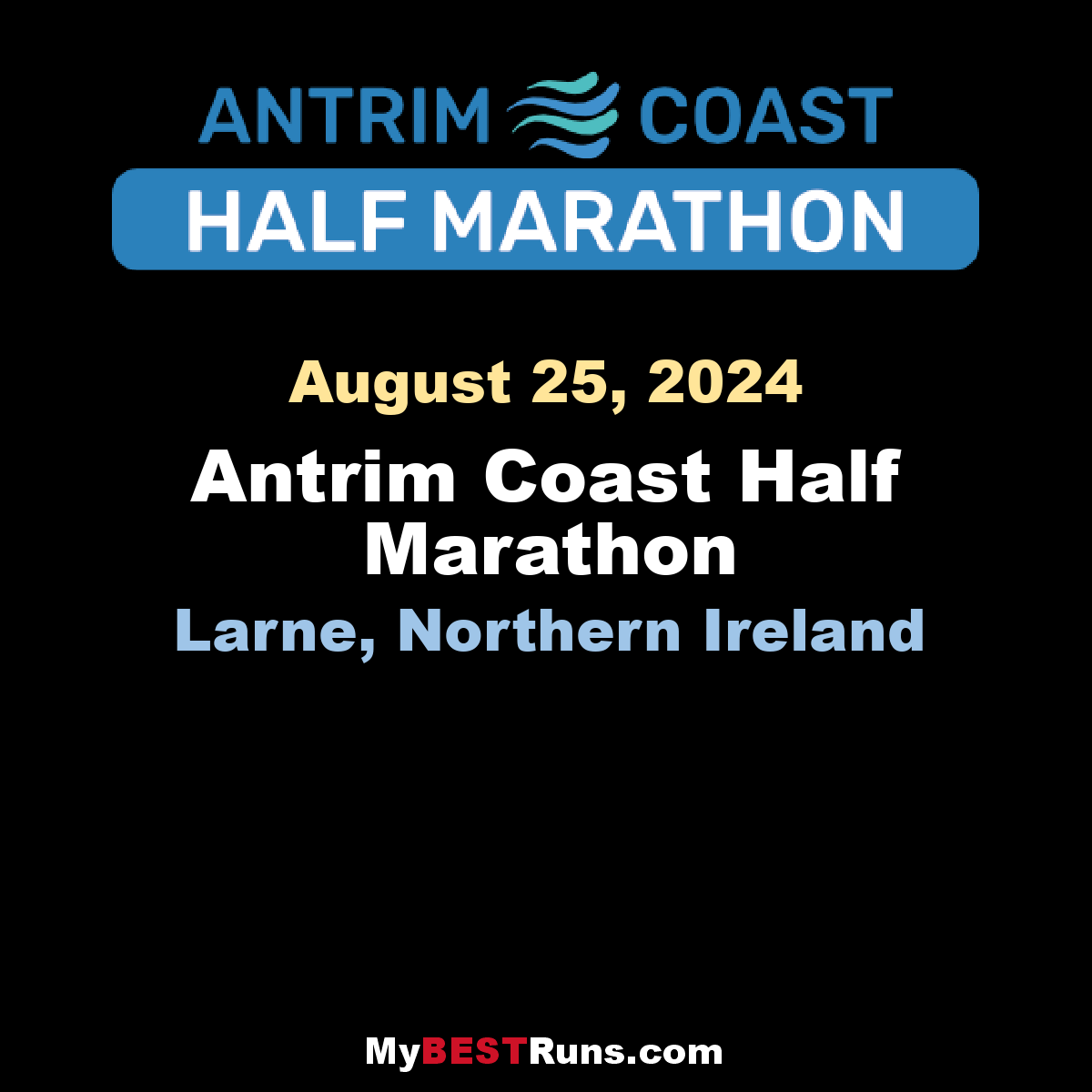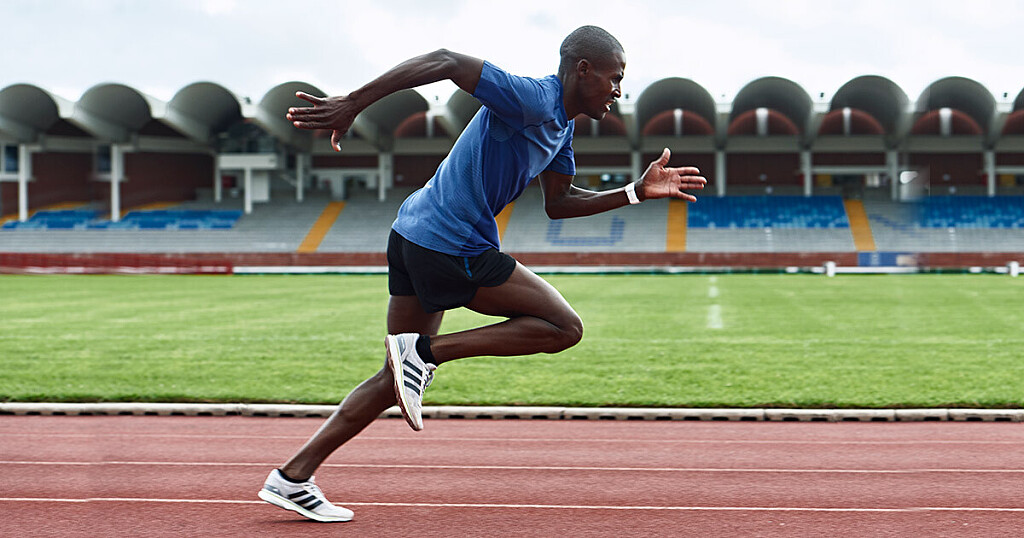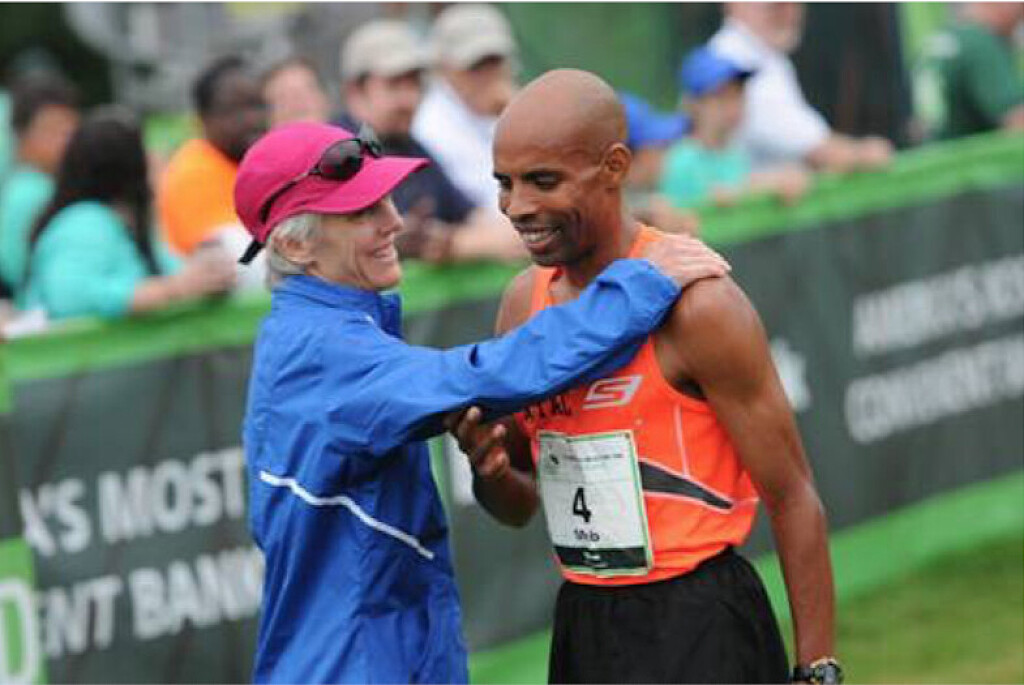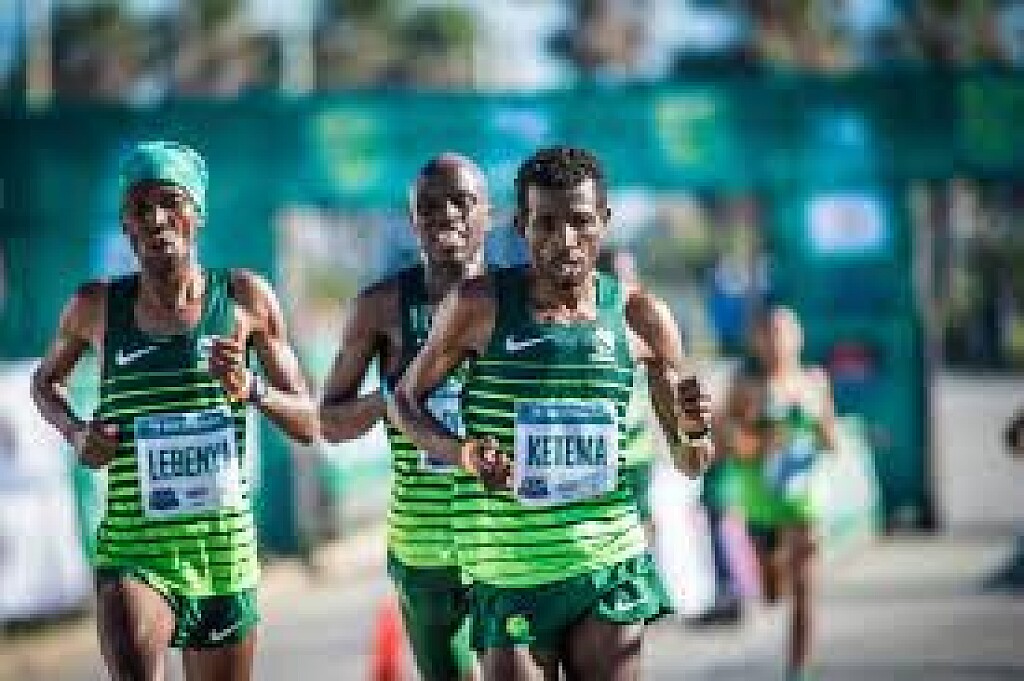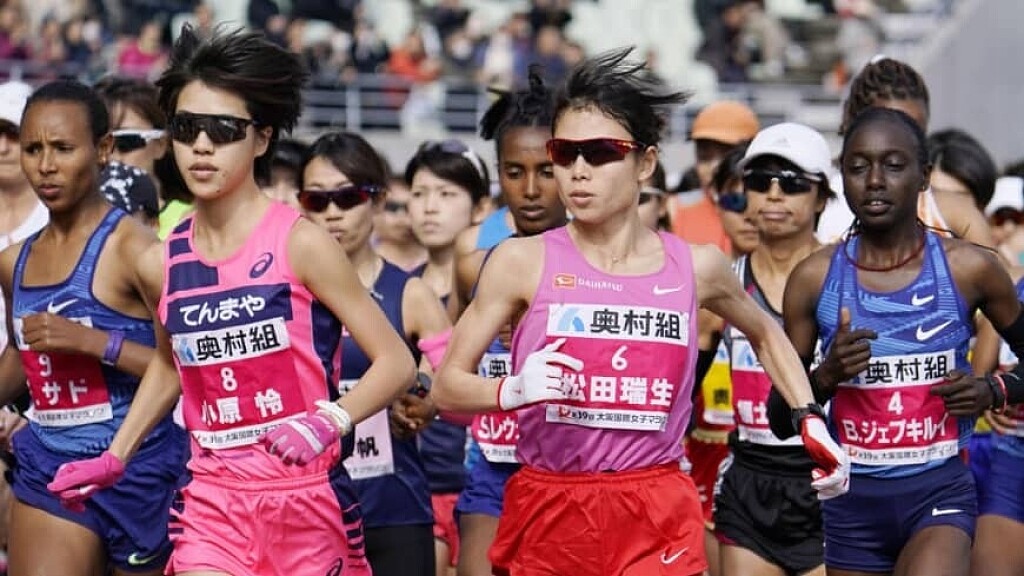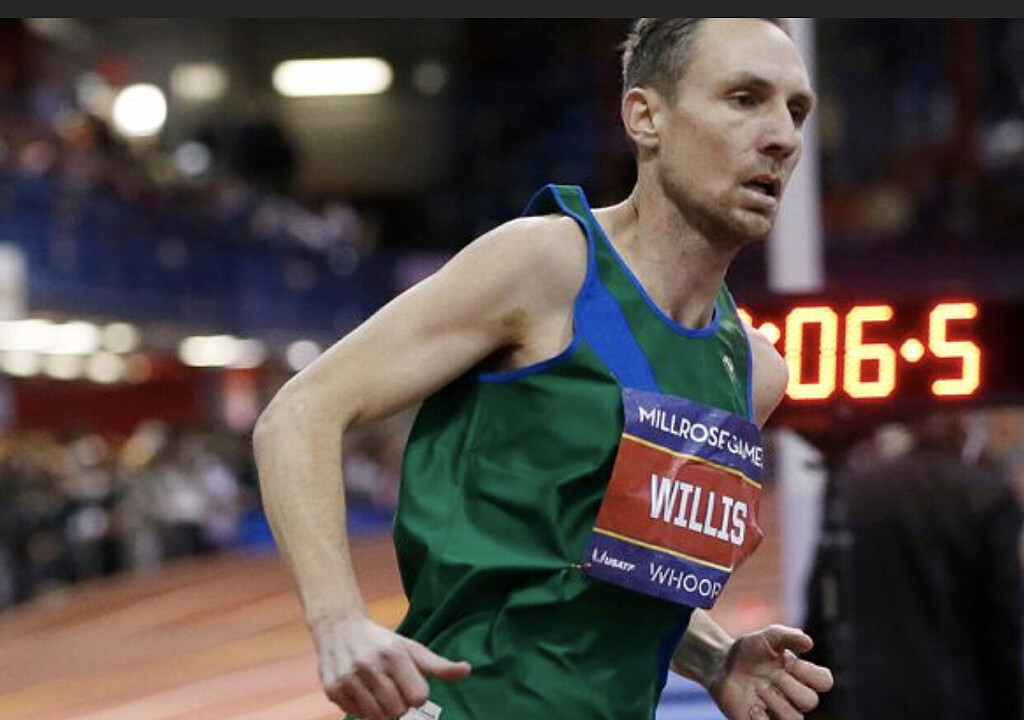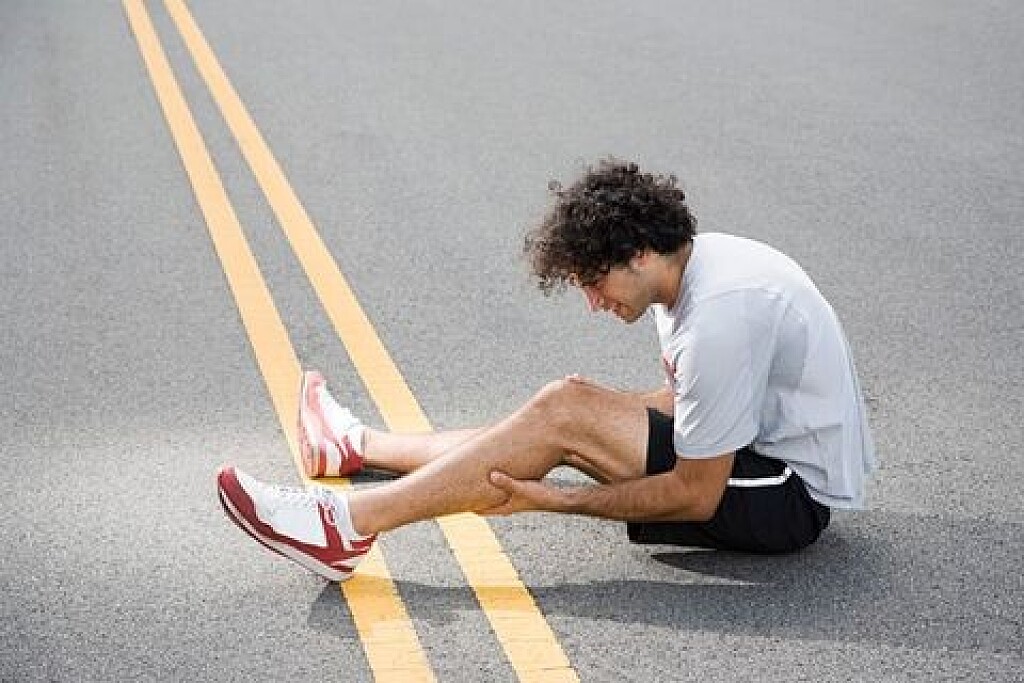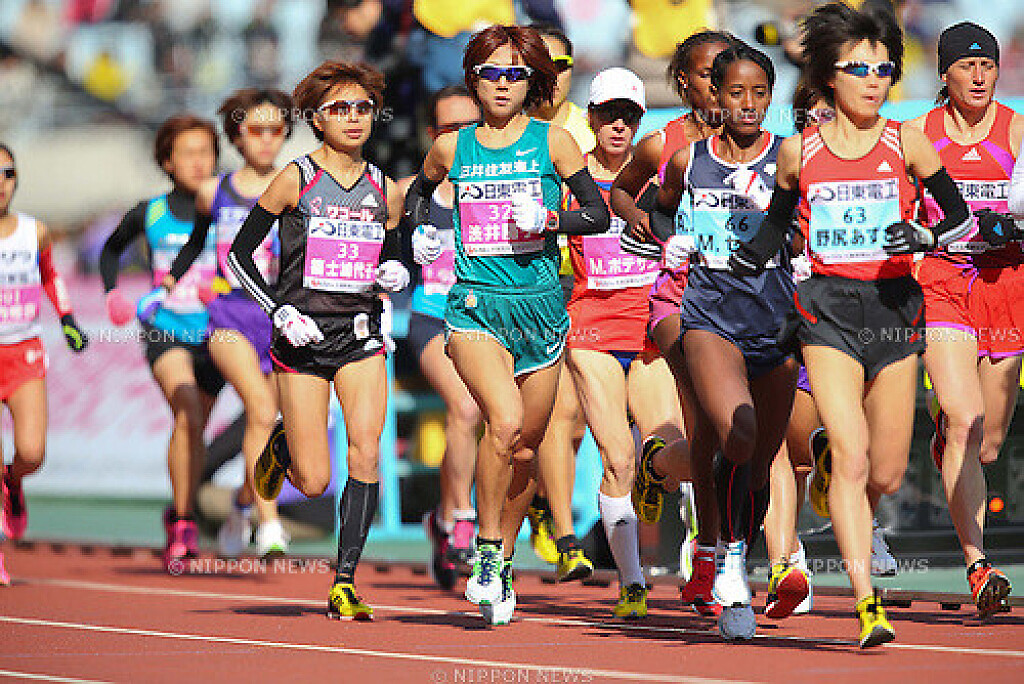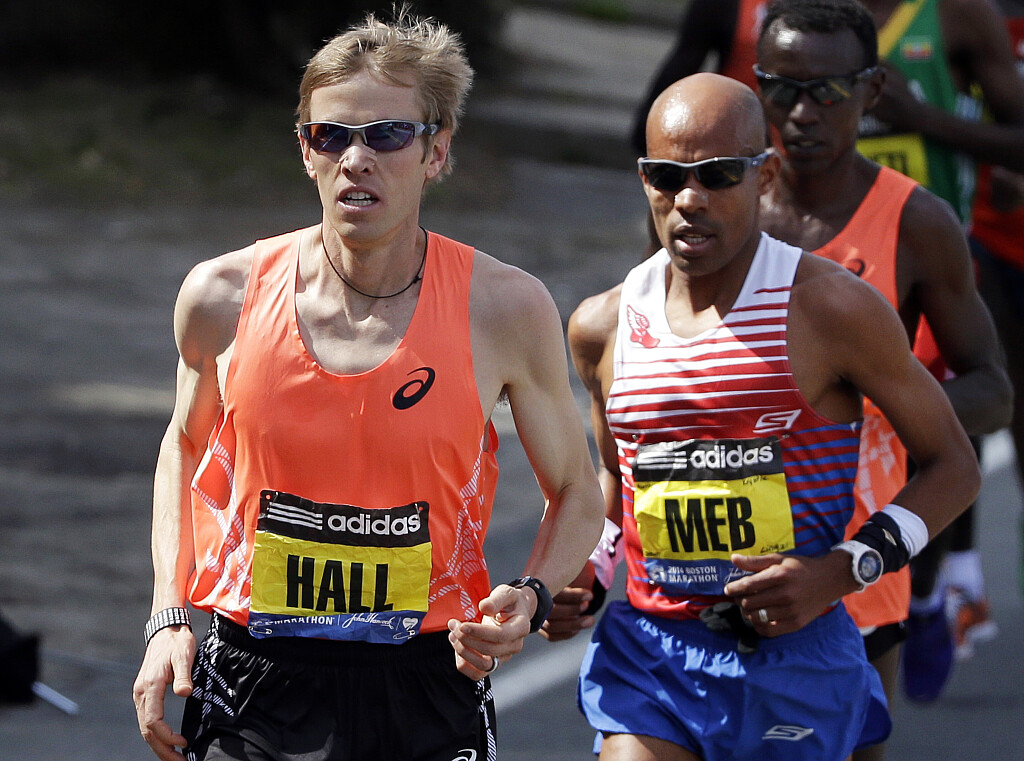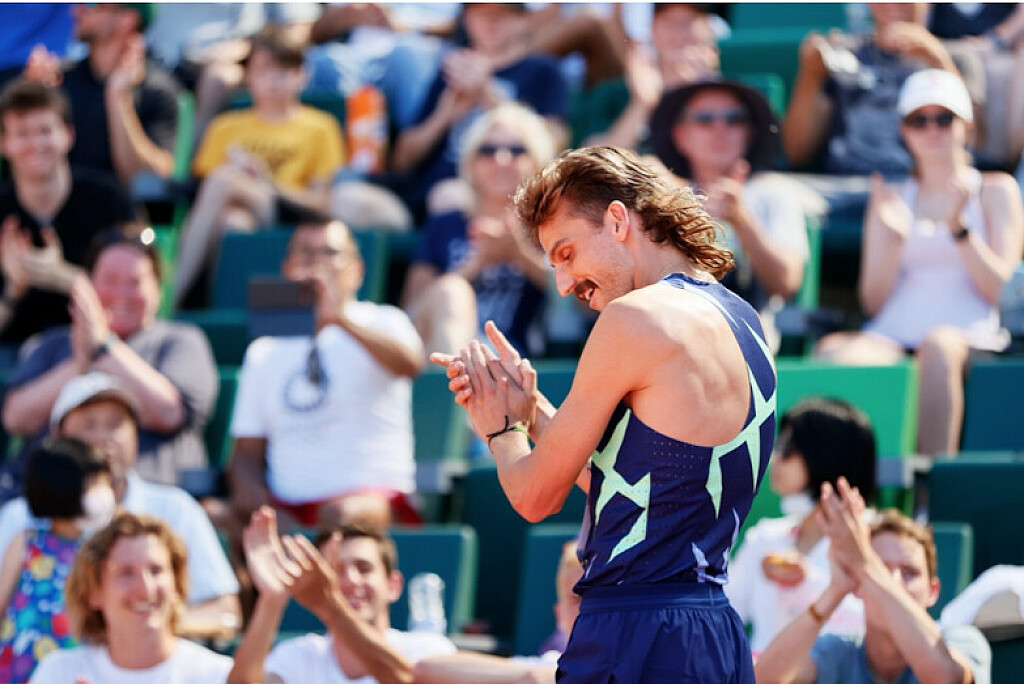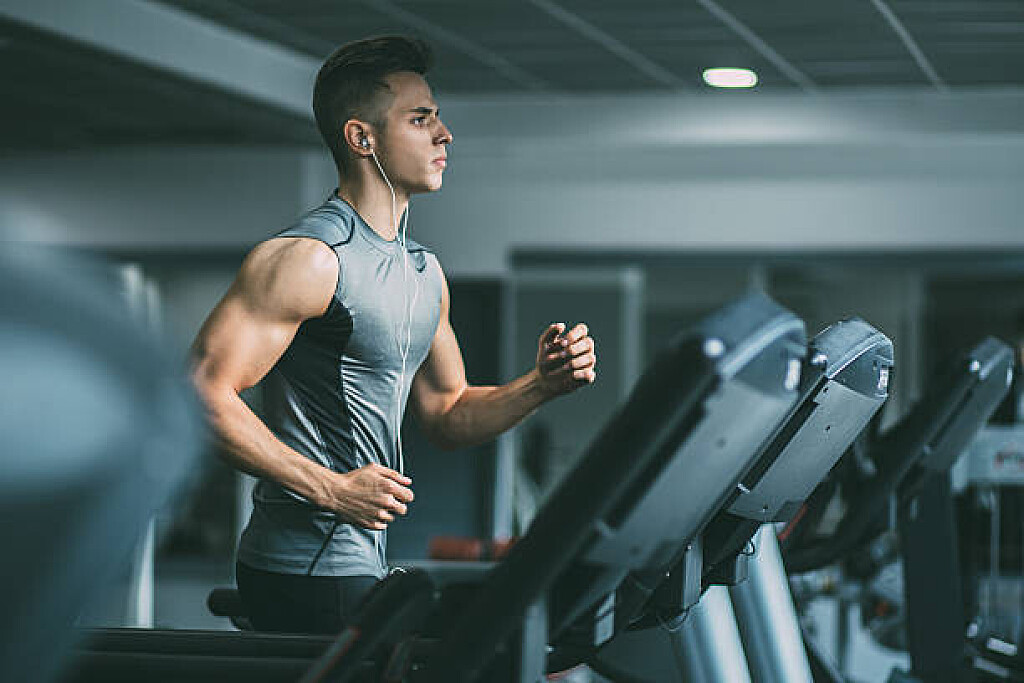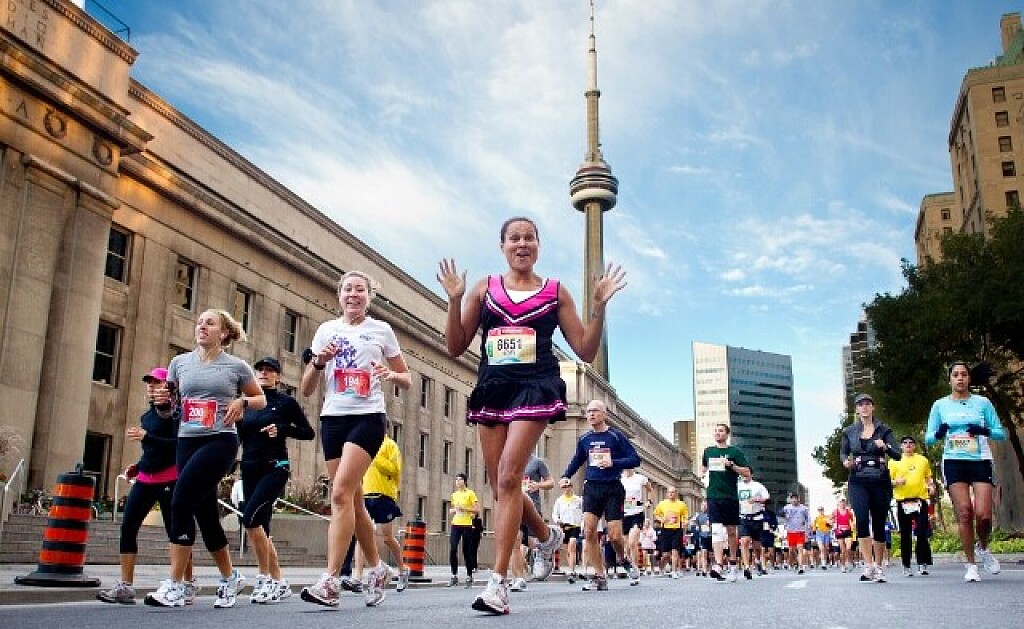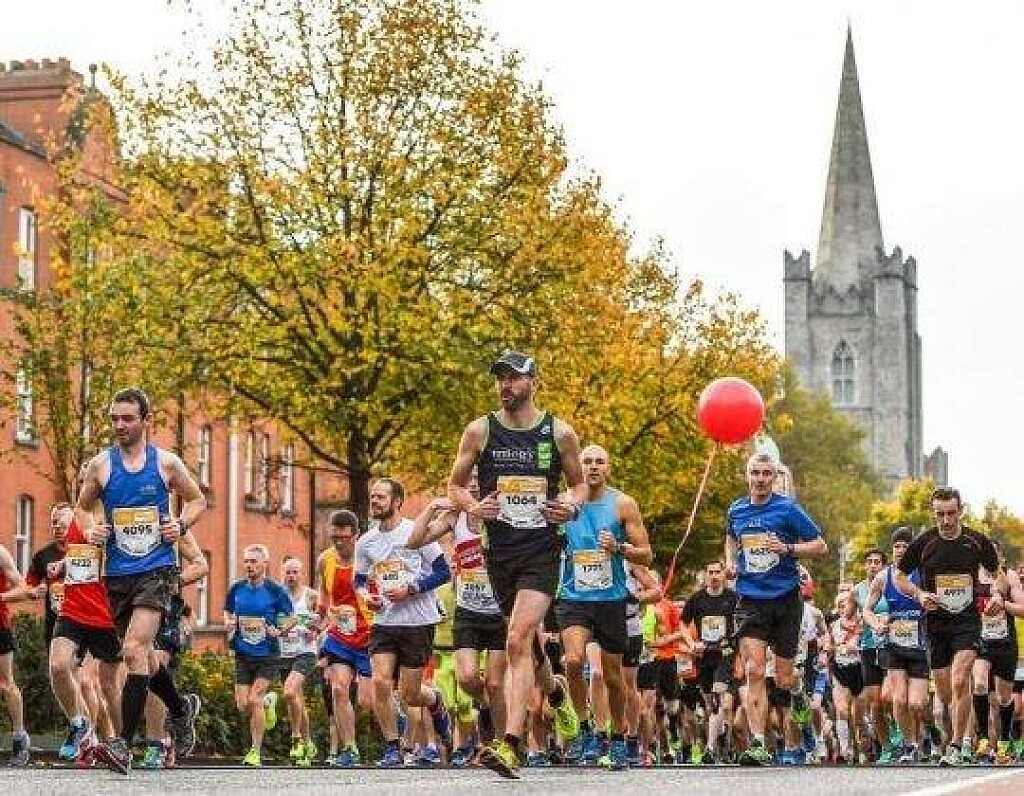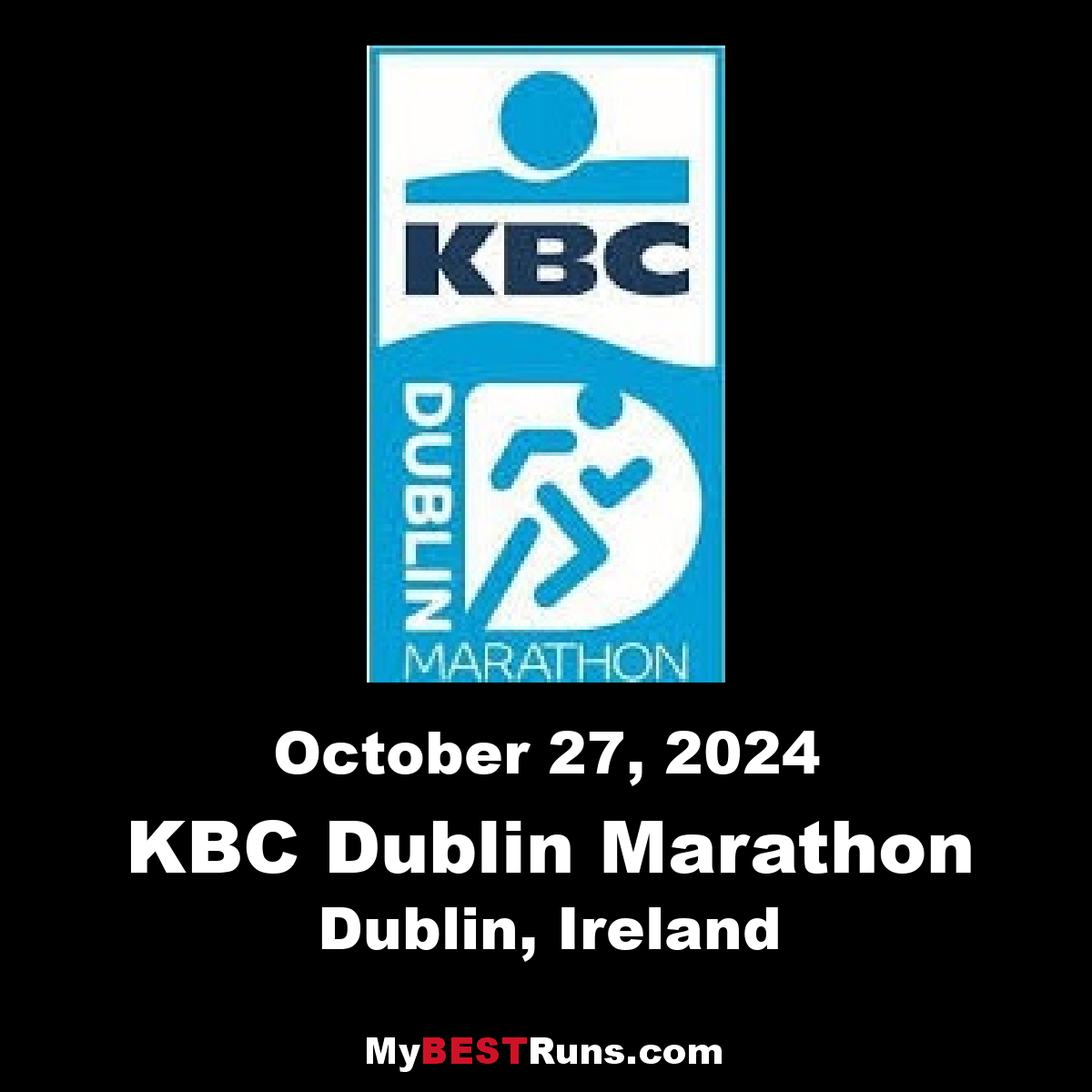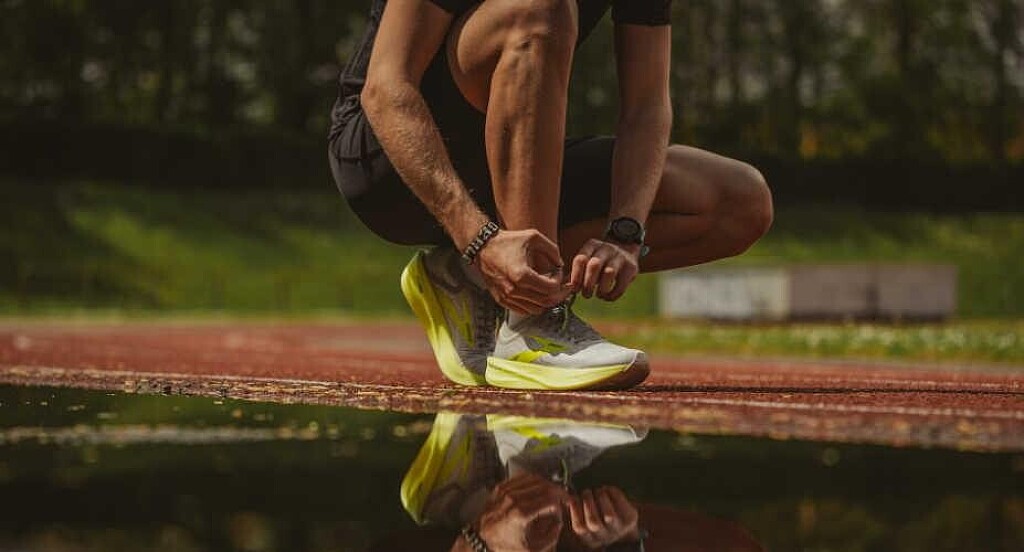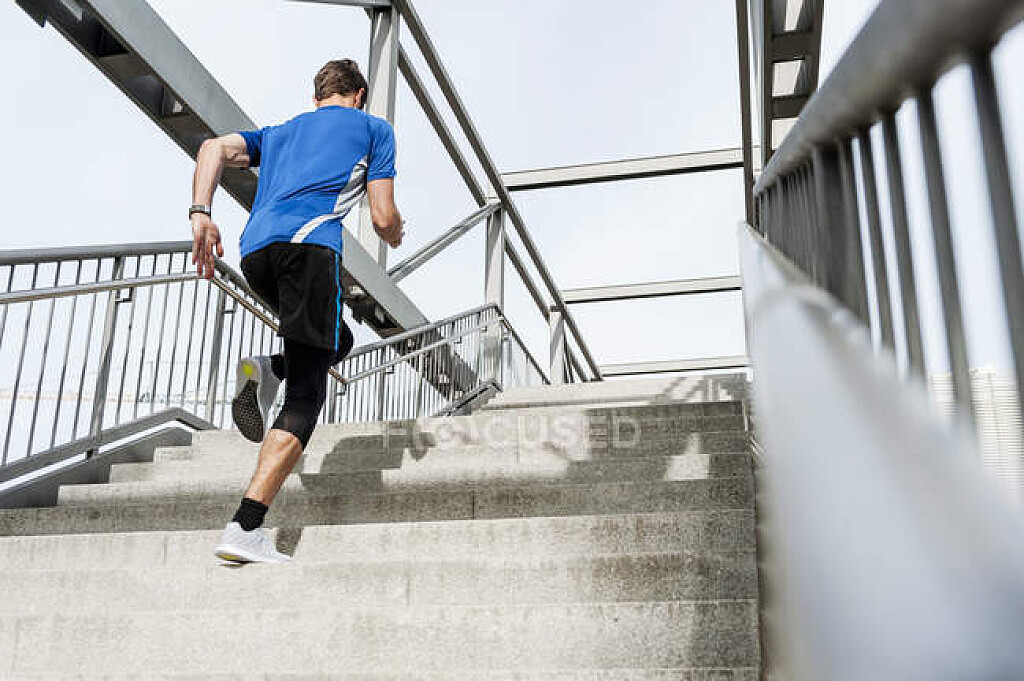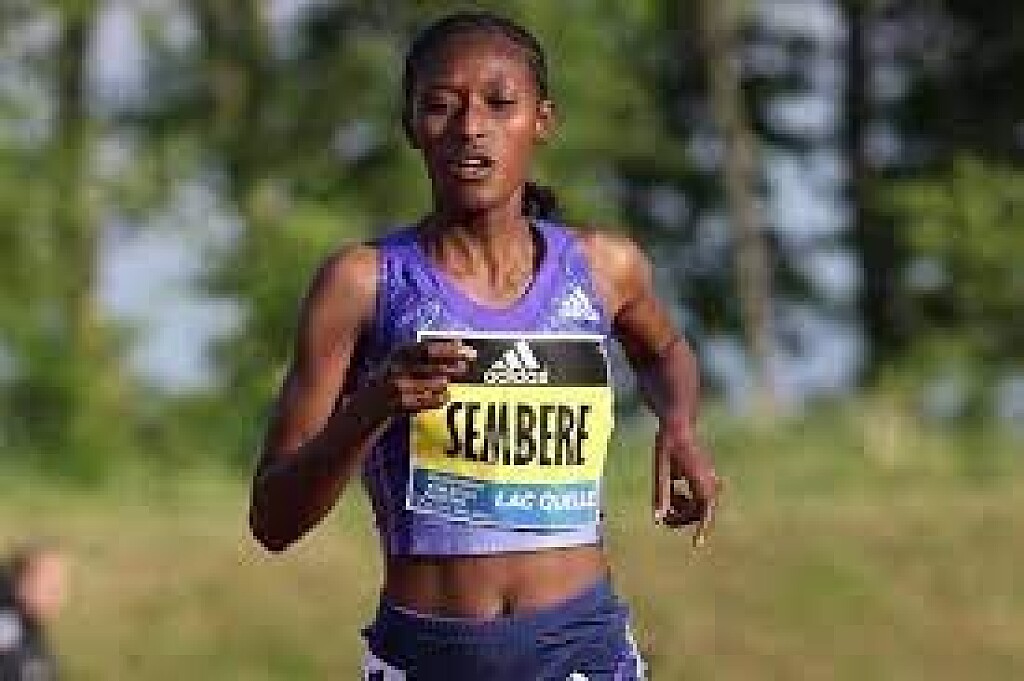Running News Daily
Running News Daily is edited by Bob Anderson in Mountain View, California USA and team in Thika Kenya, La Piedad Mexico, Bend Oregon, Chandler Arizona and Monforte da Beira Portugal. Send your news items to bob@mybestruns.com Advertising opportunities available. Over one million readers and growing. Train the Kenyan Way at KATA Running Retreat Kenya. (Kenyan Athletics Training Academy) in Thika Kenya. Opening in june 2024 KATA Running retreat Portugal. Learn more about Bob Anderson, MBR publisher and KATA director/owner, take a look at A Long Run the movie covering Bob's 50 race challenge.
Index to Daily Posts · Sign Up For Updates · Run The World Feed
Brooklyn resident runs shirtless in a blizzard
It turns out Canadians aren’t the only ones who know a thing or two about braving the cold. When a big winter storm hit New York City this weekend, one Brooklyn runner laced up his shoes and stepped out for a 10-mile (16km) run, but he left his shirt at home. The runner, Tim Zhou, was interviewed by a local news station, where he revealed this has become an annual tradition.
Zhou told the reporter that he’s been doing this for a couple of years, saying that he prepares himself by doing ice baths and cold showers. “You get used to the cold,” he said. “So you go out on days like these and you don’t really feel it.”
This tradition puts Zhou among the ranks of barefoot winter runners and these guys, who ran shirtless after a blizzard in Whiterock, B.C., and while he’s certainly a brave runner, it’s possible he’s part of the 20 per cent of the population who’s genetically resilient to the cold.
(02/05/2022) ⚡AMP
by Running Magazine
Sha'Carri Richardson documentary airs at Sundance Film Festival
One of the most polarizing figures in track and field throughout the past two years, Sha’Carri Richardson, has been featured in a documentary about her journey. The 24-minute film, entitled Sub Eleven Seconds, follows Richardson in the lead-up to the 2020 U.S. Olympic trials.
The documentary is produced by the late American fashion “OFF-WHITE” icon Virgil Abloh, who died in late 2021 from cancer. The film premiered online at Sundance 2022, which ran from Jan. 20-30.
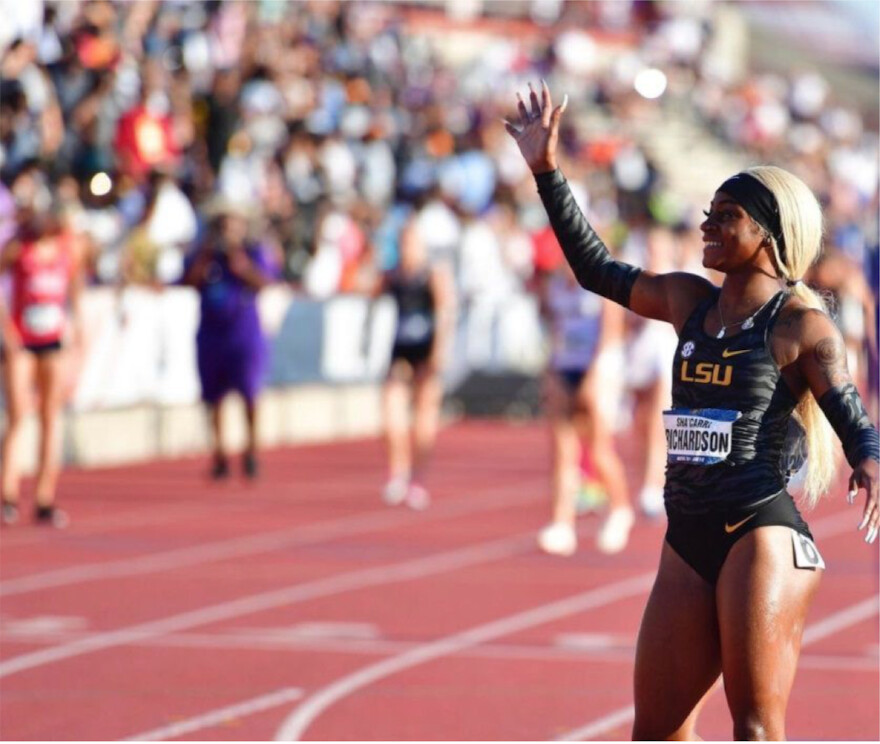
Richardson made headlines last summer after qualifying for the Olympic Games at U.S. trials, but was later disqualified when it was discovered she had used marijuana; the athlete said it wasn’t a regular habit, but that she had used it to cope with the recent passing of her mother. Her disqualification sparked plenty of debate and outrage among media outlets, athletes and celebrities.
The sprinter returned to Eugene to compete at the Diamond League after missing the Olympics due to her one-month ban. In a race that brought the second-fastest women’s 100m time ever by Jamaica’s Elaine Thompson-Herah, Richardson finished last.
Heading into a year with two major U.S. international competitions (the World Indoor Championships in March and the world championships in Eugene in July), Richardson has not announced when she will return in 2022.
(02/05/2022) ⚡AMP
by Running Magazine
The craziest active streaks in running
On Jan. 29, New Zealand’s Nick Willis ran another sub-4 minute mile at the NYC Millrose Games for the 20th consecutive year. This achievement is something only a few runners have come close to, which has sparked us to find the craziest active running streaks.
Nick Willis – 20 years of sub-4 minute miles


Willis first ran sub-4 during his undergrad at the University of Michigan in 2003 (3:58.15). At last weekend’s Millrose Games, Willis broke four minutes for the 63rd time in his career (3:59.71), which marked the 20th consecutive year he has run sub-4 miles. Willis is New Zealand’s only two-time Olympic medallist in the 1,500 metres, winning a silver medal in Beijing and bronze in Rio. In 2020, Willis passed his countryman, Sir John Walker, who previously held the consecutive sub-4 mile record of 18 years.
Simon Laporte – 46 years of running every day
At 46 years, the Notre-Dame des Prairies, Que. runner holds the longest active run streak in Canada. Laporte began his streak on Nov. 27, 1975, and hasn’t missed a day since. The 70-year-old run streaker has no plans to stop anytime soon, and he is planning for his streak to reach 50 in 2025. The longest active streak in the world is held by Jon Sutherland of Utah. Sutherland’s run streak of 52.7 years recently passed the legendary record set by Ron Hill (52.1) last year.
Streak Runners International (SRI) says for runs to qualify as a streak, they must cover at least one mile (1.61 kilometres) each day. The run may occur on the road, track, trails, or treadmill, but a minimum of one mile must be completed.
Lois Bastien – 41.8 years of running every day
Bastien holds the longest-standing women’s run streak record, at 42 years. She is now 79 and still runs every day in her home state of Florida.
Ben Beach – 54 consecutive Boston Marathons
Although Beach does not have the record for most Boston Marathon finishes (58), the 72-year-old marathoner does have the record for most consecutive Boston Marathons (54). Beach ran his first Boston in 1967 when he was 18. This year, Beach completed his 54th consecutive Boston Marathon, finishing in 5:47:27.
Allyson Felix – Five straight Olympic Games with a medal in track and field
U.S. sprinter Allyson Felix is one of the greatest female Olympians ever. She has not only represented her country at five straight Olympic Games, but she has also medalled at all of them (seven gold, three silver and one bronze) – a feat that no other female athlete has accomplished in track and field. Although Felix intended that Tokyo would be her last Olympics, her streak will remain active until Paris 2024, where Jamaican sprinter Shelly-Ann Fraser-Pryce will get the chance to equal her at five consecutive Olympics with a medal.
Karl Meltzer – a 20-year streak of winning a 100-mile race
Meltzer, 54, has been on the elite ultramarathon scene for more than 20 years. With his most recent win this year at the Beast of the East 100-miler, he has won a 100-miler for 20 consecutive years, bringing his career total to 45 wins over 100 miles. This is an unprecedented number, and the only person who can top it (for now, at least) is Meltzer himself.
(02/05/2022) ⚡AMPby Running Magazine
Kenyan Daisy Cherotich will be targeting personal best at RAK Half Marathon
Reigning Discovery Kenya cross country champion Daisy Cherotich hopes to lower her personal best when she lines up at the Ras Al Khaimah (RAK) Half Marathon to be held on February 19.
Cherotich has personal best of 66:15 clocked at the Lisbon Half Marathon while finishing second behind champion Tsehay Gemechu of Ethiopia.
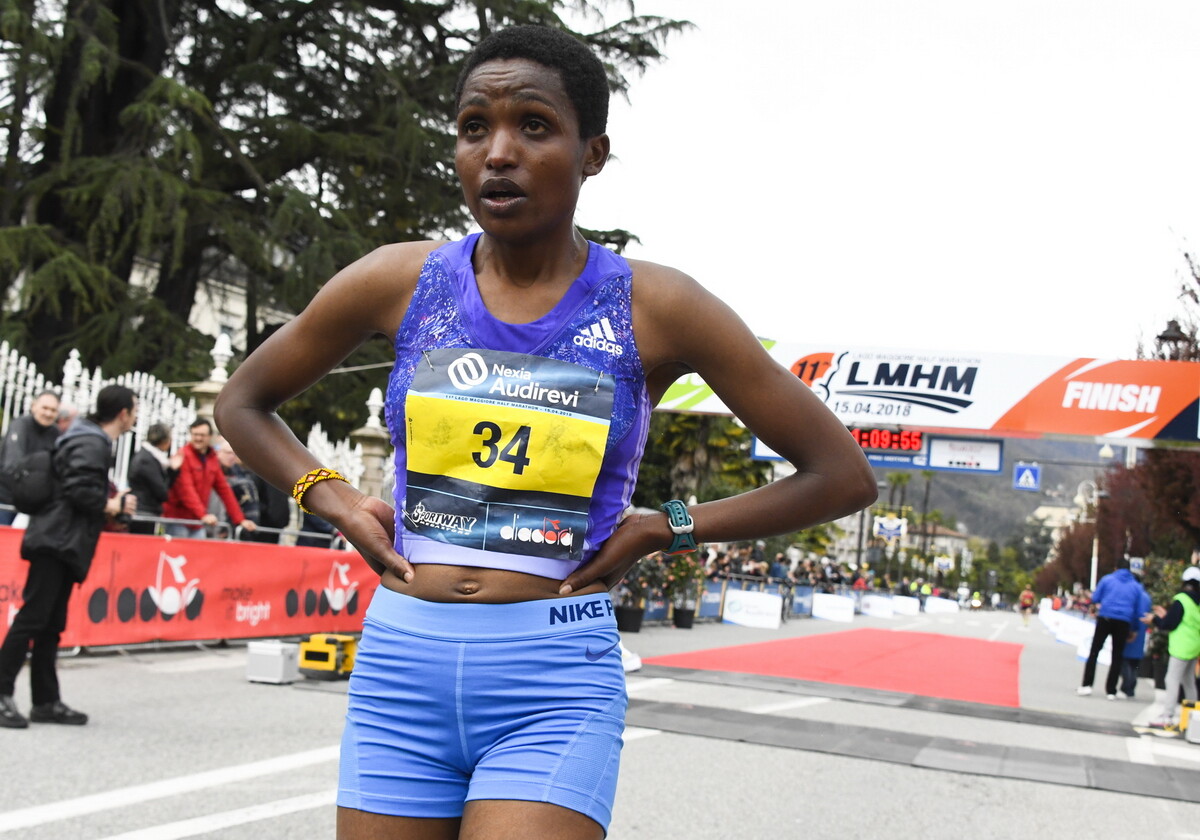
She said it will be a great achievement to win the RAK race with personal best.
“This has been in the pipeline for a long time and heading for the RAK Half Marathon, I want to make a difference in my career. I have not competed in many road races like my competitors but I believe I can pull a surprise,” said Cherotich.
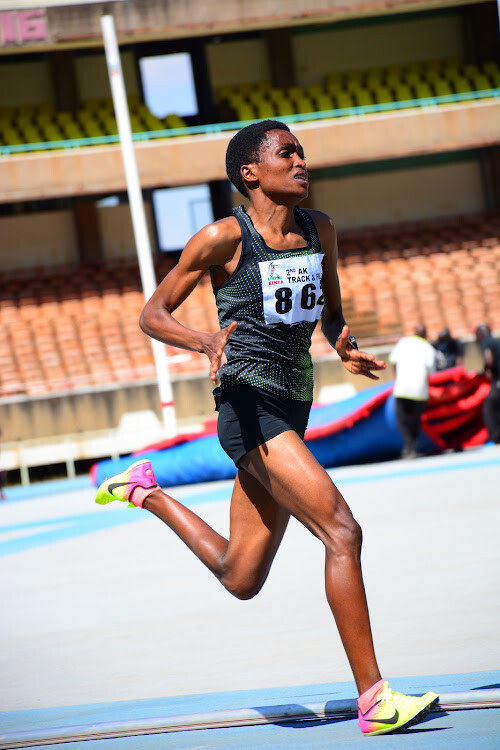
The Nandi-based runner, who trains alongside Eva Cherono, was a little-known athlete until she stunned top cream athletes to win the 2021 Discovery Kenya Cross Country championships held at the Eldoret Sports Club.
She made her half marathon debut at the Nexia Aidirevi Lake Maggiore Half Marathon timing 66:44 for the win after leading compatriot Leonida Mosop in a 1-2 podium finish.
“With my top-notch preparations, I am hoping to run a good race. As I expect good results and more so an improvement on my time because everybody,” she added.
RAK will be her fourth 21km and will be facing off with world marathon record holder Brigid Kosgei, Ethiopian Ababel Yeshane among others.
(02/04/2022) ⚡AMPby Emmanuel Sabuni
Three workout tips to make your execises more effective
Ever felt like you wanted to level up your workouts? No, not necessarily by logging more miles or doing more squats—we’re talking about incorporating smart, effective workout tips to get the most out of the moves or routines you’re already doing. In fact, these don’t have to be big changes: Small tweaks to your workout regimen can make a really substantial difference in helping you make the most out of every sweat session. Whether your aim is to build more muscle, improve your cardio fitness, increase your endurance, or just move about day-to-day life more easily and comfortably, incorporating these workout tips can help you hit the gym ready to crush your goals and get the most out of your time there.
SELF asked five top trainers for advice on how to get a super-effective workout every time. From easy mindset hacks, like hyping yourself with positive self-talk, to physical actions, like tapping your muscles for better activation, these workout tips can help you seriously up your fitness game.
1. Take a moment to just breathe.
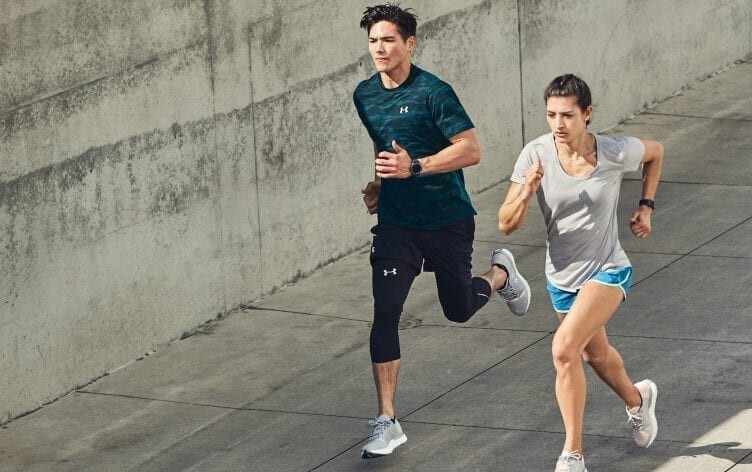
The first step to an awesome workout is getting in the right mindset. Really! If you’re thinking about your to-do list or the drama on last night’s Bachelor, you might not be focusing on putting in 100%. “Before a workout, I focus on my breathing to reduce any stress from work or my commute that may be sitting with me, giving me negative feelings before hitting the gym,” Equinox trainer and martial artist Phoenix Carnevale tells SELF. You can even do a quick breathing video exercise on your phone—anything to bring you into the present moment.
2. Hype yourself up.

Once you’re feeling focused, remind yourself that you’ve got this. “I start with positive self-talk to prevent myself from giving up or being overly critical,” says Carnevale. “I tell myself, ‘It’s my time now.’” You can also take a few minutes before your workout to think or journal about something you love about your body and what it can accomplish, Angela Mader, trainer and founder of Fitlosophy, tells SELF. Maybe it’s that your strong legs are capable of excellent squatting form, or that your core has progressed to being able to do a push-up with your knees off the ground. Whether you jot it down by hand, type something in the Notes app on your phone, or just repeat it to yourself a few times as a motto, this kind of thinking will start your workout on a grateful, positive note. And thinking positive thoughts may actually help you do better in your workout: Some research has indicated that positive self-talk leads to improved athletic performance.
3. Put on pump-up music.
Positive self-talk isn’t the only way to get in the right mindset. “It always comes down to music for me,” Amelia DiDomenico, CPT, owner of Amrose Fitness, tells SELF. One of her top workout tips is to repeat her favorite tracks a few times during her training session. Making a soundtrack of your most-loved jams won’t just put you in a good mood; it may also improve your workout performance. Various small research efforts have found positive associations here, such as a 2020 Perceptual and Motor Skills study, which concluded that people who listened to “preferred music” (music they liked) during their warm-up had improved exercise performance compared with listening to no music—but listening to nonpreferred music (music they didn’t like) did not boost performance.
(02/04/2022) ⚡AMPby Colorado Runner
2022 Miami Marathon will celebrate 20 years this weekend
One of the largest running events in the world is celebrating decades in South Florida.
“We had our sights on being a big race,” said co-founder Frankie Ruiz. Twenty years later, the Miami Marathon is one of the biggest in the running world.

From its inaugural with only 3,400 runners to now having an average of 25,000, its become an international renowned running event.
“Ninety-nine point nine percent of the people that run this race aren’t doing it for a living or a profession,” said Ruiz. “The rest are just like me who are just having a good time sharing community, sharing a common goal that day.”

There have been some big names running some record times here in the magic city. The best time so far was just over two hours.
Like many other events, the Miami Marathon is returning for its 20th year after going virtual last year due to COVID-19.
They are seeing the demand from their participants as the race sold out back in November.
“Now, what I think we have is all this pent up demand,” Ruiz said. “We deferred a lot of those entries of people that were registered, because a whole lot of people registered for 2021. We pushed those over to 2022, and I think there’s definitely a greater sense of health and well-being and wellness and so forth and that’s why we’re seeing the demand in the sport right now.”
Twenty-six miles of roads across South Florida will transform into one the best courses in the country.
(02/04/2022) ⚡AMPby Alex Browning
The Miami Marathon
Over the past 16 years of the existence of the current Miami Marathon, there was only just over 90 athletes who had run every single event. Before the inception of the Miami Marathon as we know it now (est. 2003), the race was originally known as the Orange Bowl Marathon which began in the late 1970s. One of our very...
more...This is why you should master distance before speed
If you are a new runner, it’s tempting to focus on building your speed from the get-go, but you may want to focus on improving your distance first. The best way to increase your aerobic capacity is to start building an endurance base. As you build up your endurance, your speed will naturally improve.
Once you have established some stamina over your goal distance, you can begin incorporating speed. Many runners will mix up their training routine by combining distance runs with shorter, faster workouts. The shorter workouts will help maintain your strong endurance base and ensure that you are getting the most out of your training.

The risk that comes with starting speed before endurance is the potential for injury. If you are pushing your body to the maximum effort without any prior training, the chance of injury is relatively high.
When you are ready to begin speed training, start with a few high-intensity intervals. For example, five reps of one minute fast and one minute slow jogging. This workout will get your heart rate up and allow you to test out top-end speed over a short duration.

Another thing beginners can incorporate early is strides. Strides are short accelerations or sprints that last for a total of 15 to 20 seconds or 50 to 100m. The idea is to run strides at about 90 per cent of your maximum effort while focusing on keeping the body upright and relaxed.
The key to doing strides is to slightly push yourself outside of your comfort zone without tensing up. Most runners will start to incorporate strides on their easy runs after a few weeks of building endurance.
(02/04/2022) ⚡AMPby Marley Dickinson
New study finds more nature exposure on a run improves the route
We know that the right running route can make or break your run, but new research published in The Journal of Urban Forestry suggests that greater nature exposure leads to greater perceived satisfaction and that runs with traffic lights are less satisfying.
Although it is no surprise to anyone that routes with too many traffic lights can ruin a run, previous research indicates that running in a natural environment can ignite feelings of revitalization, engagement and can decrease depression.
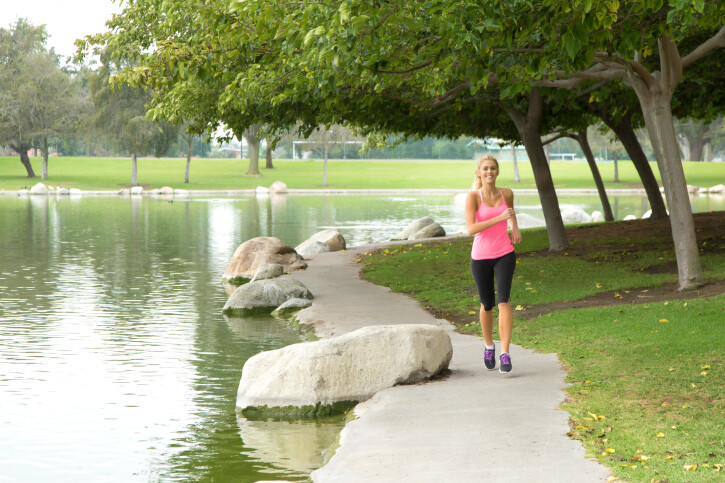
The connections to nature are several reasons why the sport of trail running has gained popularity in the past 20 years.
The study

The data was collected from 249 runners in Helsinki, Finland, then was assessed in terms of the correlations between running satisfaction and nature exposure. The analysis revealed that runners prefer and are often more satisfied when exposed to or surrounded by nature.
Runs with less nature and more traffic lights were found to break momentum and were inversely related to running satisfaction. The analysis also reported the participants experienced higher satisfaction running outdoors compared to indoors.
The positive impacts of nature exposure on running satisfaction further verify the connections between the environment and well-being.
(02/03/2022) ⚡AMPby Marley Dickinson
Team Ingebrigtsen head coach Gjert Ingebrigtsen steps down for health reasons
World-famous distance coach and father of 1,500m Olympic champion Jakob Ingebrigtsen, Gjert Ingebrigtsen is stepping down as his sons’ coach for health reasons, Norway’s Stavanger Aftenbladet reports. The Ingebrigtsens will continue coaching themselves as they prepare for the World Indoor Championships in March and World Championships later this year.
Over the years, Gjert has coached all seven of his kids through athletics, most notably, Jakob, who rose to become the Olympic 1,500m champion at age 20.
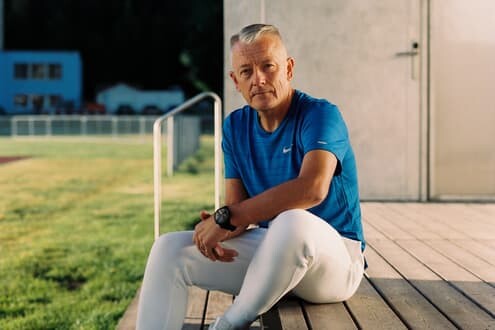
Gjert has famously coached three of his sons to three European 1,500m titles: Henrik Ingebrigtsen (2012 European gold), Filip Ingebrigtsen (2016 European gold), and Jakob (2018 European gold). The three boys all have personal bests for 1,500m under 3:32, with Jakob holding the Olympic record of 3:28.32, which he set in his gold-medal-winning performance at Tokyo 2020.
Gjert also helped lead Norway to European Cross Country gold at the 2021 European championships.
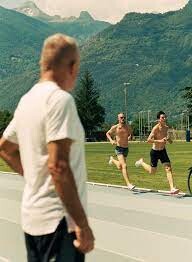
The Aftenbladet also reported that the brothers’ younger sister, Ingrid Ingebrigtsen, 15, who ran 4:42.04 over 1,500m, is taking a leave from athletics.
Jakob and Filip have both confirmed that they will be racing in the 1,500m at World Athletics Indoor Tour Gold meet in Lievin, France, on Feb. 17. Jakob will most likely have his eyes on the world indoor record of 3:31.04.
No further information on Gjert’s health has been released.
(02/03/2022) ⚡AMPby Marley Dickinson
Study says running can help ward off joint and muscle pain in later life
Want another reason to love running? A new study has shown that doing vigorous exercise such as running at least once a week helped to lower the risk of bone, muscle and joint pain in later life.
The University of Portsmouth study gathered data from 5,802 Brits aged 50 and above. It found that the key to staving off joint pain in ageing was vigorous activity as opposed to moderate exercise.
The study, ‘Associations Between Pain and Physical Activity Among Older Adults’, published in the Plos One journal, tracked participants over a 10-year period, and at the end of the research period around half said that they suffered with bone, joint or muscle pain.

Dr Nils Niederstrasser, who led the study, said that chronic pain is one of the most widespread and complex problems in the medical community. ‘It leads, for many who suffer with it, to a lower quality of life and poor wellbeing.
‘It’s well known that pain tends to be more common as we age, so it’s vital we look at what might help prevent and reduce it.’

The results found that any type of activity helped lower the chances of suffering from pain when compared to remaining sedentary, but high levels of physical activity in particular were linked to lower cases of musculoskeletal pain. ‘Activity needs to not only be vigorous, it needs to be done at least once a week,’ added Dr Niederstrasaser.
‘Vigorous’ can be classed as running, swimming or playing tennis, whereas dancing or walking was categorized as a moderate exercise and did not have the same results in terms of reducing joint pain.
(02/03/2022) ⚡AMPby Howard Calvert
Asics has become new brand sponsor of TCS Toronto Waterfront Marathon
Canada Running Series announced on Feb. 2 that the Japanese footwear brand Asics will serve as the official partner for three Canada Running Series races: the TCS Toronto Waterfront Marathon, 21K de Montréal and Vancouver Half Marathon.
Asics will serve as the official merchandise brand and will support athletes with exclusive personalized training programs through the Asics Runkeeper app.
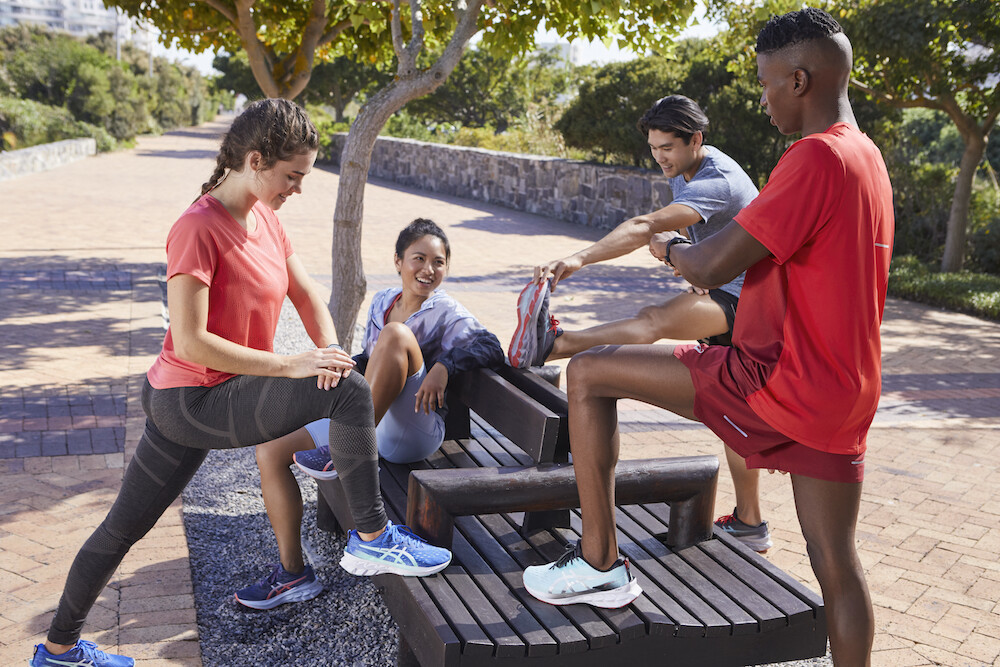
Canada Running Series will also continue using Race Roster, which is a world-leading race registration platform out of London, Ont. and a recent brand acquisition from Asics. Race Roster has been affiliated with hosting registration for CRS events since 2016 and was the title sponsor of Toronto’s High Park Spring Run-Off 8K between 2016 and 2019.
This five-year sponsorship deal will begin in 2022 and will see Asics expand the brand to various platforms and bring high-performance-running products to support each CRS race.

“We are immensely proud to partner once again with Asics and leverage their extensive knowledge of race technology to enhance race experience,” Charlotte Brookes, Canada Running Series’ national event director said in a press release. “The partnership between Asics and the Runkeeper app, plus Race Roster will allow us to continue driving positive change for both virtual and in-person racing.”
In-person and virtual registration is now open for all three Canada Running Series events. The 21K de Montréal will be held on April 23-24, 2022, while the Vancouver Half Marathon is set for June 26, 2022, and the TCS Toronto Waterfront Marathon will take place on October 16, 2022.
(02/03/2022) ⚡AMPby Marley Dickinson
TCS Toronto Waterfront Marathon
The Scotiabank Toronto Waterfront Marathon, Half-Marathon & 5k Run / Walk is organized by Canada Running Series Inc., organizers of the Canada Running Series, "A selection of Canada's best runs!" Canada Running Series annually organizes eight events in Montreal, Toronto and Vancouver that vary in distance from the 5k to the marathon. The Scotiabank Toronto Waterfront Marathon and Half-Marathon are...
more...Asbel Kiprop seeks track comeback as doping ban ends
Kenya's former Olympic and three-time world 1500m champion Asbel Kiprop has vowed to make a successful return to the track after his four-year doping ban elapsed on Wednesday.
Kiprop, 32, was suspended in April 2019 for taking the blood-boosting drug EPO but he has always protested his innocence.
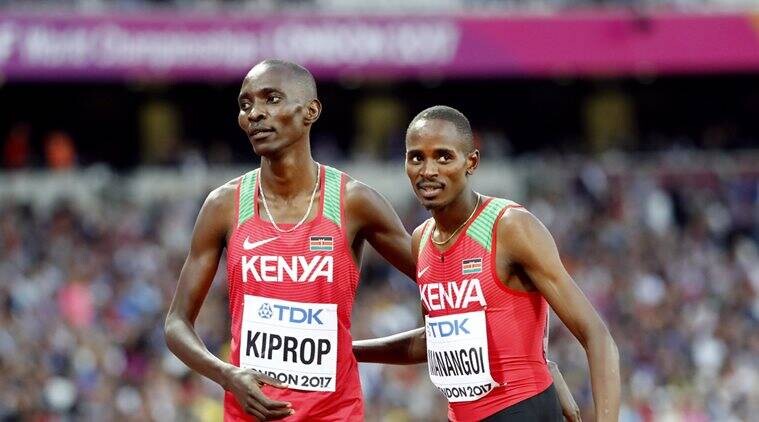
"I was falsely accused of doping. But I have accepted my fate, served my time and now I am ready to return to the track," he told AFP.
He said his main target was the World Championships at Hayward Field, Oregon in June.

Kiprop became the first Kenyan to win the 1500m gold at the world championships in Daegu, South Korea in 2011.
He went to win two more world titles in 2013 and 2015 to add to the 2008 Olympic gold medal he was awarded after the original winner, Rashid Ramzi of Bahrain, tested positive for doping.
Kiprop, a police chief inspector, said he will make his domestic return at the Kenyan police track and field championships in Nairobi on April 6, where he will seek selection for the national championships and the world athletics trials.
But he will skip the 1500m and instead compete in the 800m, which was his initial event as a junior athlete.
"I want to start small and win for my employers, the Kenya police, who diligently stood by me all the four years," said Kiprop.
"I want to begin like an amateur," he quipped. "It is going to be a hard time since I have to shed my weight by five kilogrammes (11 pounds). I want to post good times and progressively go up the ladder and qualify to represent Kenya again."
"I don't anticipate any opposition from the Kenyan athletics federation, which have in the past refused to accept athletes who have served major doping suspensions from competing for the country due to the negative publicity that accompanies them."
Kiprop said he has undergone four out-of-competition tests since December, and was happy to be back in the approved list of Anti-Doping Association of Kenya (ADAK) accredited athletes.
(02/02/2022) ⚡AMPby
Jake Wightman will lead strong 1500m line-up at Müller Indoor Grand Prix
Birmingham event on February 19 features Wightman, Neil Gourley, Piers Copeland, Charlie Da’Vall Grice and more
Olympic finalist Jake Wightman leads a strong British contingent in the men’s 1500m at the Müller Indoor Grand Prix – a World Athletics Indoor Tour Gold meeting – at the Utilita Arena in Birmingham on Saturday February 19.
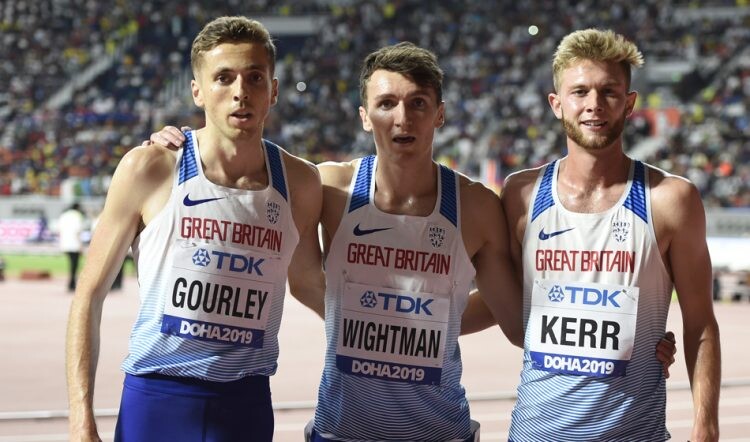
The European and Commonwealth bronze medalist was 10th in Tokyo and is the Scottish indoor 1500m record-holder (3:34.48). The British record, held by Peter Elliott since 1990, is 3:34.20.
In what promises to be an enthralling domestic showdown, Wightman, who opened his season with a 7:50.97 3000m PB at the BMC Grand Prix in Sheffield on January 9, is joined by Piers Copeland, Archie Davis, Neil Gourley, Charlie Da’Vall Grice, George Mills and James West.
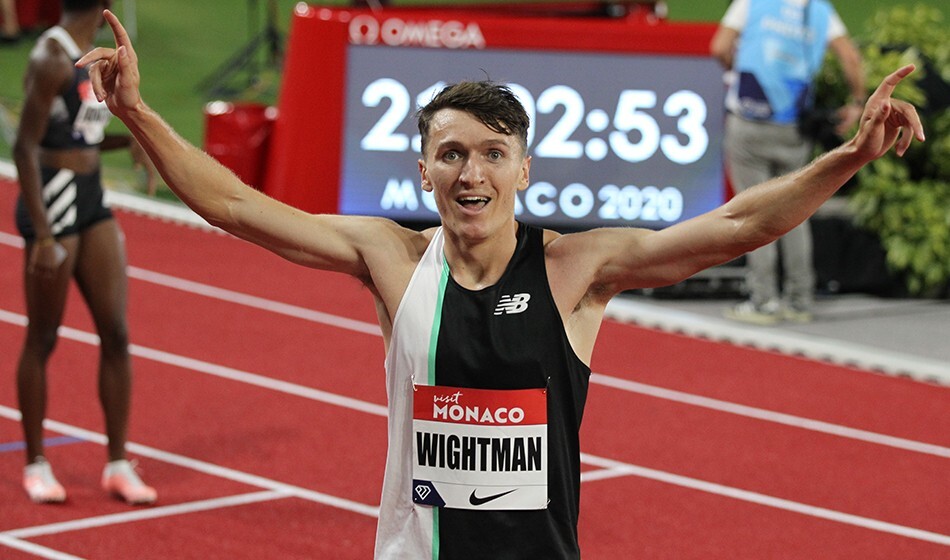
In-form Gourley, a World Championships finalist in Doha 2019, ran an outright 5000m PB (13:34.35) – the best indoor performance by a Scottish athlete over the distance – in Boston in December, and most recently clocked an impressive 7:48.94 3000m PB at the Razorback Invitational in Arizona on January 28. His 3:35.79 1500m best, which ranks him seventh on the Scottish all-time list, was achieved at the World Indoor Tour meeting in Toruń, Poland, 12 months ago.
Da’Vall Grice, Olympic 1500m finalist in Rio 2016, is the British indoor 1000m record-holder (2:17.20) with a 1500m PB indoors of 3:38.95, while Copeland is the Welsh indoor record-holder over 1500m (3:38.55). Both athletes are European Indoor Championships finalists, finishing fifth in 2015 and 2021 respectively.
West, who opened his season with a 7:59.96 3000m at the Millrose Games, has run 3:36.93; Mills is the reigning national indoor 1500m champion and has a best of 3:39.25; and Davis has an indoor 1500m best of 3:41.18.
“After running 3000m indoors, I’m looking forward to dropping back down to 1500m and hopefully challenging my Scottish record,” said 27-year-old Wightman.
“This is a special time for British endurance running and it’s a privilege to have the opportunity to compete against these guys in Birmingham. We’ve seen what’s possible by our athletes on the global stage and that provides us with inspiration every day to do even better. I hope we can deliver some fast times, possibly even a British record, and a great race for the home crowd.”
The Müller Indoor Grand Prix is the fifth meeting of the 2022 World Athletics Indoor Tour (Gold). There are seven ‘Gold’ level meetings across the series which started with Karlsruhe on 28 January and concludes in Madrid on 2 March.
Throughout the series, each athlete’s best three results will count towards their overall point score. The athlete with the most points in each scoring discipline at the end of the tour will be declared the winner and will be awarded a USD$10,000 bonus along with a wild card entry for the World Athletics Indoor Championships Belgrade (March 2022).
(02/02/2022) ⚡AMPby Athletics Weekly
Muller Indoor Grand Prix Birmingham
The Müller Indoor Grand Prix Birmingham is one of the leading indoor meetings in the world with world-class athletics as part of the World Indoor Tour Gold series. The event will be staged at its traditional home at Utilita Arena Birmingham setting the tone for what is set to be an incredible year of track & field. ...
more...Joel Ibler Lillesø breaks Ingebrigtsen’s European indoor U20 3000m record in Sollentuna
Reigning European U20 5000m champion Joel Ibler Lillesø from Denmark bettered one of Jakob Ingebrigtsen’s many European U20 records in Sollentuna, Sweden on Saturday (29) afternoon.
Only 18, Lillesø shaved three seconds off Ingebrigtsen’s European indoor U20 3000m record with a 7:48.34 clocking to erase the Norwegian’s previous record of 7:51.20 which was set in the heats at the 2019 European Athletics Indoor Championships in Glasgow.
Lillesø was ably paced in the early laps by world class 1500m runner Kalle Berglund before embarking on a tough last six laps single-handedly. His winning time was a qualifier for the World Indoor Championships in Belgrade and also puts the national senior record of 7:44.76 into view.
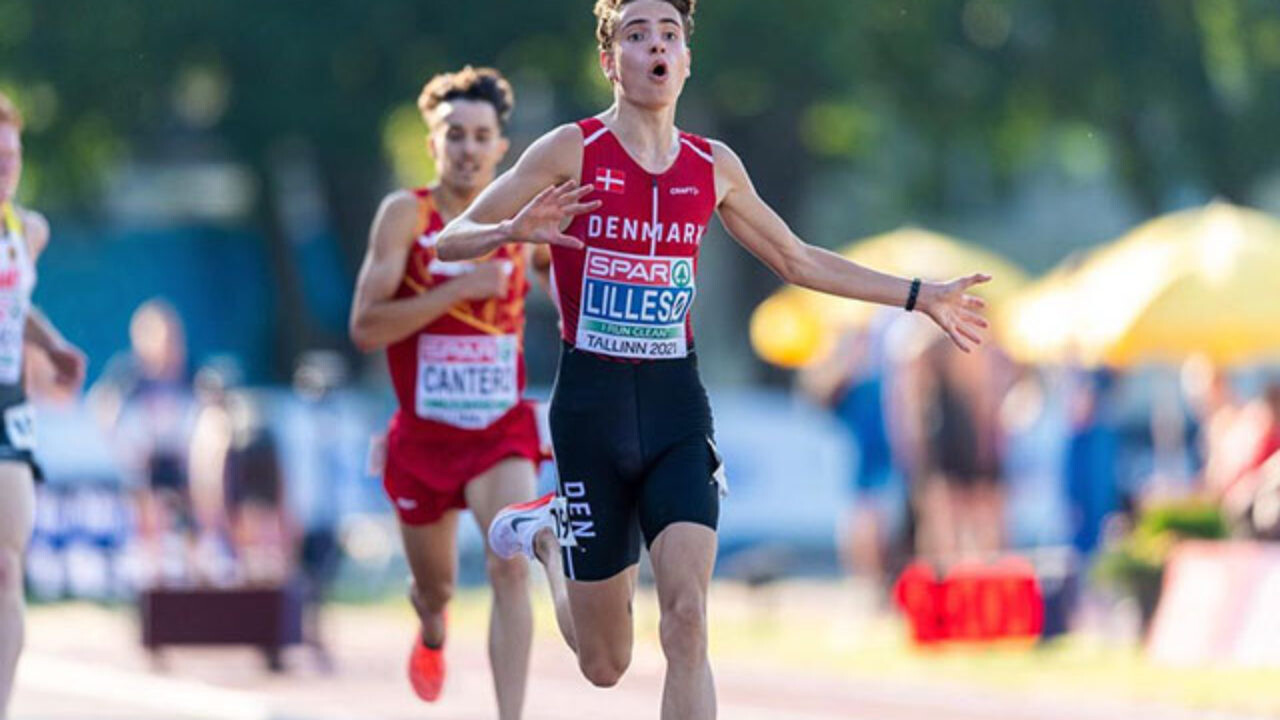
Lillesø is part of an emerging group of Scandinavian distance runners who are following Ingebrigtsen through the age-group ranks. After winning U20 5000m gold in Tallinn, Lillesø won individual bronze in the U20 race at the SPAR European Cross Country Championships behind Danish teammate Axel Vang Christensen and Norway’s Abdullahi Rabi to ensure a Scandinavian clean sweep.
Lillesø's next race will be on the roads in the Monaco 5km on 13 February.
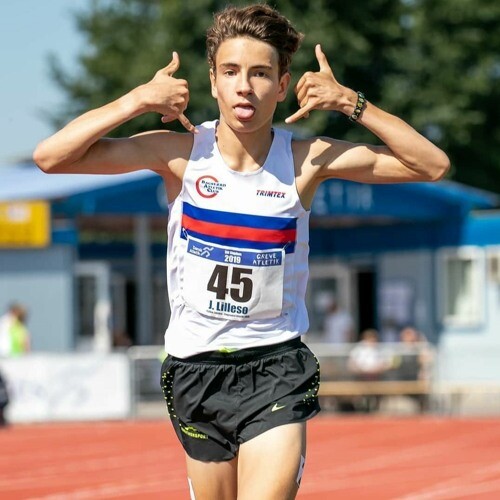
This was a particularly brilliant weekend for Danish athletics. As well as Lillesø’s European indoor U20 record, Benjamin Lobo Vedel set a Danish indoor 400m record of 45.95 in Baerum, Norway on Saturday and Ida Karstoft also clocked a Danish indoor 200m record of 23.36.
And two more Danish records were broken in Randers on Sunday (30). Kojo Musah shattered the Danish indoor 60m record on home soil with 6.56 to move to second on the 2022 European list and Mathilde Kramer also revised the Danish record in the women’s 60m with a 7.31 clocking.
Bekh-Romanchuk bounds out to 14.34m triple jump
Maryna Bekh-Romanchuk might be known first and foremost as a long jumper but the reigning European indoor champion made a hugely promising senior debut in the triple jump at the Ukrainian Indoor Team Championships in Sumy.
Contesting the event for the first time in nine years, Bekh-Romanchuk bounded out to a European leading mark of 14.34m off an abbreviated approach as well. Her winning effort was also accompanied by four more jumps in excess of the 14 meter-line.
At the Top Perche Plus pole vault meeting in Nevers on Saturday, Menno Vloon from the Netherlands cleared 5.86m before three attempts at 6.02m which would have equalled Mondo Duplantis' world lead from Karlsruhe on Friday evening. Belarus' Iryna Zhuk won the women's competition with a 4.60m clearance ahead of former world champion Yarisley Silva from Cuba with 4.52m.
Ahead of the DNA International match in Glasgow on Saturday, Molly Scott equalled her Irish 60m record with 7.27 before breaking it outright with 7.23 in Athlone on Saturday while European U23 cross country silver medallist Darragh McElhinney won the 1500m in 3:42.89.
In Apeldoorn on Saturday, Isayah Boers clocked a fast 46.36 in the 400m and Taymir Burnett won the 60m in 6.62.
(02/02/2022) ⚡AMPby European Athletics
Improve your balance, mobility and core with this Bosu ball workout, to put your body through strategic movements that complement your running and posture
In the January 2022 issue of Canadian Running, strength and conditioning coach Jon-Erik Kawamoto presents a challenging new workout focused on mobility and core for runners, using a BOSU Balance Trainer. This routine is designed to put your body through strategic movements that complement your running as well as the day-to-day sitting posture.
If you’ve ever been to a physiotherapy clinic, chances are you are familiar with the half-ball platform device commonly referred to as a Bosu, which is used to challenge your balance. The ball can provide good cushioning for core exercises and is useful as a prop for certain mobility exercises, such as split stance squats and single-leg balance exercises.
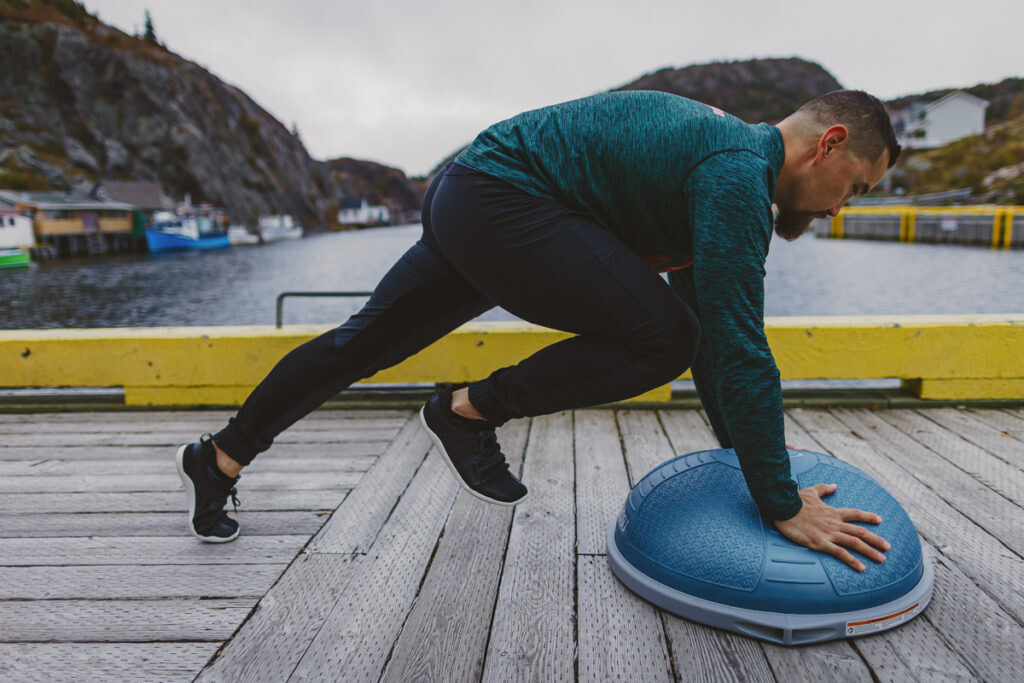
If you do not have a Bosu ball, you are likely to find one at your local gym, or you can find one at your local fitness shop or online.
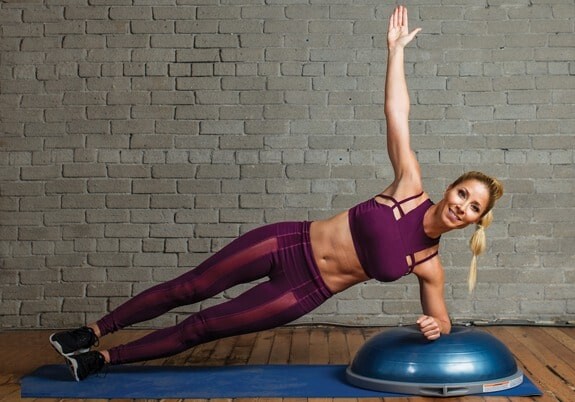
Training mobility, improving posture and performing movements outside the running pattern not only improve your body’s movement literacy (i.e., your athleticism) – they also create a more resilient body, allowing you to get through your running season with less risk of overuse injury.
Do this routine once or twice a week, completing two to four sets. Take minimal rest between exercises and a 90-second rest between sets.
(02/02/2022) ⚡AMPby Marley Dickinson
Try this 5K progression run to build your speed, add some variety to your training with this endurance focused speed workout
When training for a goal, we choose to do certain workouts to develop our top-end speed and long runs to help our endurance – but what if there is a workout that can do both? The progression run is a gradual workout that involves a mix of speed and endurance. Its purpose is to boost your aerobic system while still running at a high-intensity effort.
Progression runs tend to start at an easy pace and gradually build up to paces around your goal 5K pace or faster.

The 5K progression workout
To start, base the workout off your previous 5K time (if you have a 5K PB of 25:00 – you’ll want to start the first kilometer around 6:00 per/km).
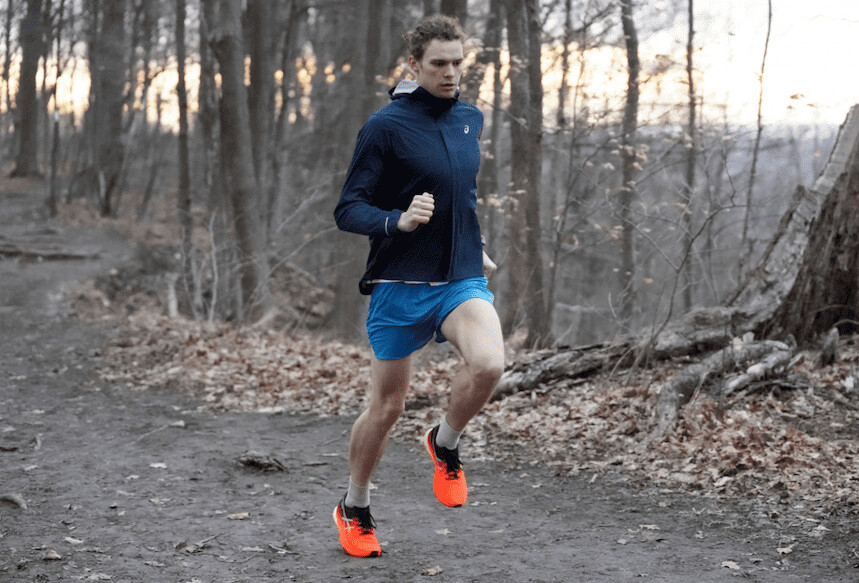
After the first kilometer, increase the pace by 15 seconds (using the 25-minute PB as an example, 5:45/km) for the second kilometer. Do the same for the third and fourth kilometers, until you eventually get down to your race pace on the fifth.
As the workout evolves your body will get tired, which will make it tougher to increase the pace. It is important to make sure that you hit the pace on the first two kilometers. If you start too fast or slow, it will be hard for your body to perform at your aerobic capacity on the fourth and fifth kilometers.
This workout can be a fun way to add some variety to your training and a confidence booster if you can hit your race pace heading into a 5 or 10K race.
(02/01/2022) ⚡AMPby Marley Dickinson
Bladerunner Jacky Hunt-Broersma, is aiming to complete 100 marathons in 100 days
This year, Jacky Hunt-Broersma is looking to add another record to her name. The multiple-time ultramarathon finisher and world record-holder has committed to running 100 marathons in 100 days, to break the Guinness World Record for most consecutive marathons.
Broersma got the idea after she saw Alyssa Clark of Vermont set the record last year at 95 days. Clark had been aiming to hit 100 marathons but was forced to cut her challenge short after contracting COVID-19. “This got me thinking, maybe this is something I could take on and it would be a great way to start the new year and help me build up a great base for The Moab 240 race in October,” says Broersma.
Being an experienced ultramarathoner, Broersma is well-equipped to handle a challenge of this magnitude. She finished a 100-mile race at the beginning of January, and although she says she hadn’t fully recovered by the time she started her marathon streak, she says this challenge is more mental than physical. For this reason, staying positive through each of her runs has been the most important key to her success thus far.

When we first spoke with Broersma, she had completed 10 marathons, and by the time of publishing that number had grown to 14. She tells us her biggest challenge is getting enough sleep to recover. “I am amazed at how incredible our bodies are,” she says. “The first five marathons were tough because my body was adjusting to the distance, but slowly my body started adapting.” She adds that her shin is hurting and her knee feels a bit sensitive, but her stump is holding out very well.
Broersma says she’s taking each day as it comes and trying her best to listen to her body. “Some marathons are slower than others and some are faster, it just depends on how my body feels in the morning,” she says. “I am making sure I use my massage gun every day on any tight muscles, eating well so I can recover and icing my stump if it is needed.”

Running for a reason
Aside from trying to break the Guinness World Record, Broersma is using her challenge to raise money for Amputee Blade Runners, an organization that provides running blades for amputees. She explains that running-specific blades can cost between $10,000 and $20,000, and in the United States they’re not always covered by health insurance so many amputees don’t have the opportunity to run the way she has.
“When I became an amputee one of the biggest challenges for me was accepting the way I looked and it can be a really tough journey,” says Broersma. “Running changed that for me, it gave me confidence in my body and confidence to be who I am. Running makes me feel strong and fearless and grateful for the body I have, even when part of it is missing. This is what I want for all amputees.”
So far, Broersma says she has had incredible support from around the world, with people sending messages of encouragement every day. She’s also received messages from people with disabilities who’ve been inspired by her to start running and hiking, which was her ultimate goal to begin with. “I hope by doing this that it will inspire people to get out of their comfort zones, even if it is to have the courage to take on their first 5k race,” she says. “We are always more capable than we think.”
If you’d like to support Broersma and follow along with her journey, you can keep up-to-date with her on her Instagram or Twitter pages where she posts daily updates, and you can donate to her cause on her GoFundMe page.
(02/01/2022) ⚡AMPby Brittany Hambleton
Boost running performance with plyometrics, adding jumping exercises into your strength training routine can improve your running performance
Incorporating plyometrics into your strength training routine is an effective way to improve running performance, but they aren’t for everyone. Curious to know if they’re right for you, and how they can benefit your running performance? Consider this “plyometrics 101 for distance runners.”
What are plyometrics?
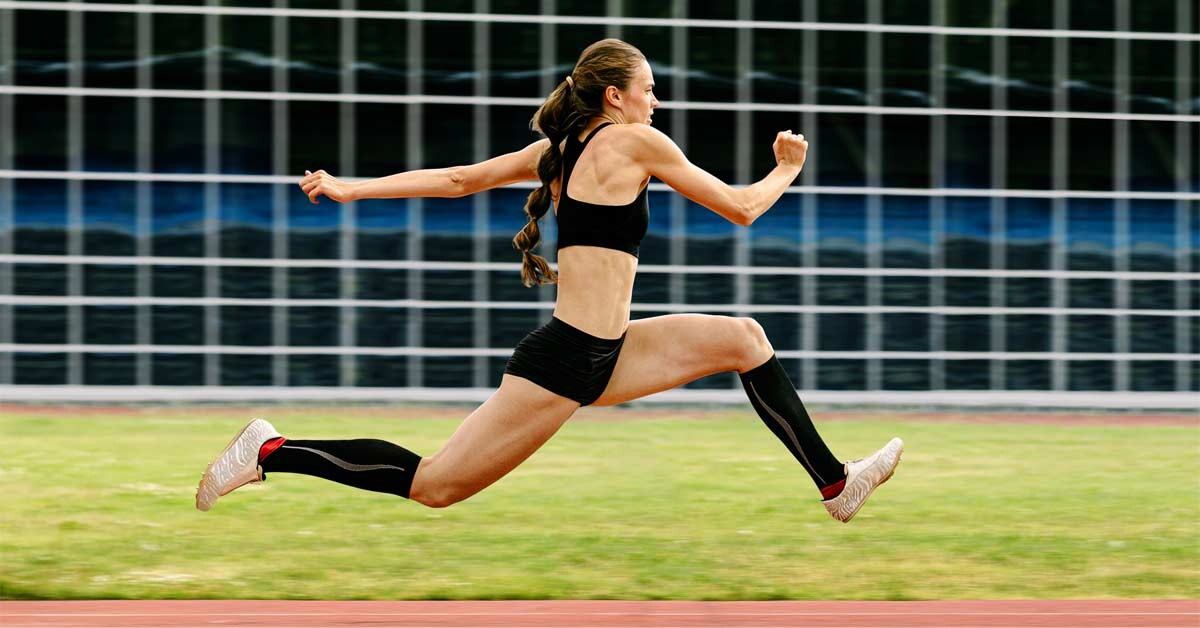
Another term for plyometrics is jump training. It’s a type of training that incorporated exercises in which your muscles have to exert maximum force for short periods of time. In other words, it’s a very fast, explosive style of strength training. Athletes of all different disciplines use plyometrics in their training to improve their power, strength, quickness and overall speed. Although distance running is a slower, less explosive sport than other track and field events like sprinting or jumping, endurance athletes can still gain a lot from doing plyometric training.
What are the benefits of plyometrics?

To answer that question, you first have to understand how you create propulsive energy when you run. To do this, your body absorbs and briefly stores energy from impact (like your foot striking the ground), then releases that energy to push you forward. You may hear this referred to as “elastic energy.”
By improving your muscles’ ability to store elastic energy, you can become a more efficient runner. Put differently, having more stored elastic energy allows you to maintain a faster pace for longer — sounds great, doesn’t it?
Various studies have also shown that plyometric training improves the VO2 max of beginner and recreational runners, which means your body will require less oxygen at the same effort level. Again, this will make you more efficient and therefore, faster. Interestingly, studies have not found plyometric training to increase the VO2 max of elite runners, presumably because they’re already training optimally and already have very high VO2 maxes. It does. however, still seem to improve their running efficiency from at the muscular level.
Are plyometrics right for me?
In theory, plyometrics are beneficial for every runner, but due to their high-impact, high-intensity nature, they’re not a good place to start for beginners. Most experts recommend following a lower-impact, basic strength training routine for eight to 10 weeks before adding plyometrics into their plan if you’re new to strength training. More experienced athletes may be able to shorten that timeframe to six weeks. It’s also very important that you perform plyometrics with proper form to prevent injuries.
Examples of plyometric exercises
The following list is just a few of the many different plyometric exercises you could incorporate into your strength training routine.
Keep your legs straight and use only your ankles to jump in the air, being careful not to bend your knees or hips. Do 10-20 hops.
Stand on one leg with the foot of your opposite leg resting behind you on something sturdy, like a bench. Lower yourself into a lunge, then jump up, driving your front knee into the air. Do your best to land softly after every jump, repeating 10-20 times on each leg.
Skips for height
Skip across the ground with the goal of getting as much height as you can. Try to land as softly as you can, and don’t worry about how far you’re getting with each skip. Do 10-20 skips.
Frog jumps
Unlike the high skips, frog jumps are more about distance than height. With both feet planted on the ground, lower yourself into a three-quarter squat position, then quickly jump forward. Try to land softly, and immediately jump again (there shouldn’t be any standing time between jumps). Repeat 10-20 times.
Box toe touches
Stand in front of a short box, about one foot away from it. Alternating your arms and legs, touch the top of the box with your toes as quickly as possible. Aim for 20-30 toe touches.
Single-leg bounding
This is a very advanced exercise. Standing on one leg, bend your knee slightly and jump, driving your knee into the air and landing back on that same foot, trying to land as softly as you can. See the video above for a modified version that can get you ready for full single-leg bounding.
(02/01/2022) ⚡AMPby Brittany Hambleton
The 2022 Rock ‘n’ Roll Running Series New Orleans Returns Feb. 5-6
The 2022 Rock ‘n’ Roll Running Series New Orleans returns to the Big Easy on Saturday, Feb. 5 and Sunday, Feb. 6. Race weekend kicks off on Friday, Feb. 4 with the Health & Fitness Expo at the New Orleans Morial Convention Center. On Saturday, Feb. 5 race day returns with the 5K and on Sunday, Feb. 6, the participants will take on the half marathon and 10K distances all starting and finishing at the University of New Orleans.
Elite runners from around the world will contest the Rock ‘n’ Roll Running Series New Orleans , Anne-Marie Blaney (USA), Megan O’Neil (USA) and Maura Tyrrell (USA) in the women’s field, and Wilkerson Given (USA), John Börjesson (SWE) and Mo’ath Alkhawaldeh (JOR), who most recently took the overall win at the 2021 Rock ‘n’ Roll Washington D.C. Half Marathon, in the men’s field.
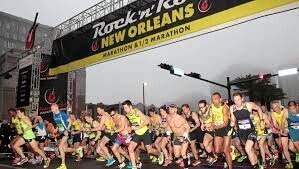
Schedule:
Friday, Feb. 4
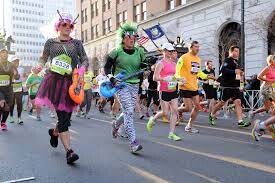
12:00 p.m. – 7:00 p.m. – Health & Fitness Expo – New Orleans Morial Convention Center
Saturday, Feb. 5 – Race Day
9:00 a.m. – 4:00 p.m. – Health & Fitness Expo – Phoenix Convention Center
7:40 a.m. – 5K – University of New Orleans
Sunday, Feb. 6 – Race Day
7:40 a.m. – 10K Start – University of New Orleans
7:40 a.m. – Half Marathon Start – University of New Orleans
9:00 a.m. – 1:00 p.m. – Encore Entertainment – James Martin Band – University of New Orleans
*All times listed are in CST
(02/01/2022) ⚡AMPRock N Roll New Orleans
Want a fun and brag-worthy way to burn off all that king cake and booze you’ll be consuming this Mardi Gras season? Rock ‘n’ Roll is a fun race for all levels, from the elite athlete to the tutu-wearing, beer-chugging walker. So, whether you’re doing it for the glory, for the medals, or for the free shots and mimosas along...
more...Alberto Salazar’s permanent ban from SafeSport was for alleged sexual assault, new report finds
Just last month, former Nike Oregon Project coach Alberto Salazar had his permanent ban from the sport upheld by the U.S. Center for SafeSport. A new report from the New York Times on Monday revealed it was because an arbitrator found that he more likely than not had sexually assaulted an athlete on two different occasions.
The famed running coach Alberto Salazar, who helped top Americans be more competitive in track and field before he was suspended for doping violations, was barred from the sport for life last month after an arbitrator found that he more likely than not had sexually assaulted an athlete on two different occasions, according to a summary of the ruling reviewed by The New York Times.
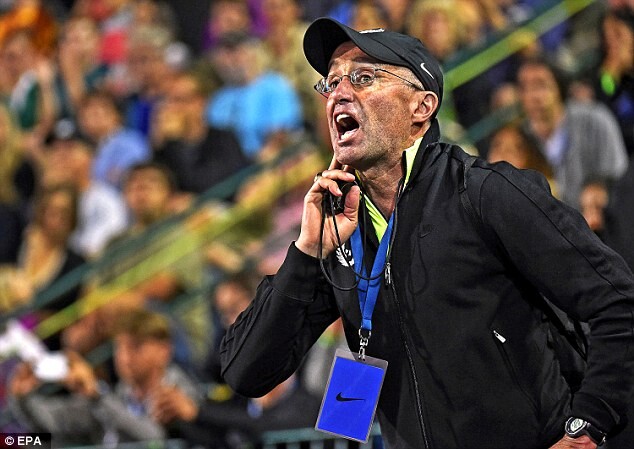
The case against Salazar was pursued by the United States Center for SafeSport, an organization that investigates reports of abuse within Olympic sports. SafeSport ruled Salazar permanently ineligible in July 2021, finding that he had committed four violations, which included two instances of penetrating a runner with a finger while giving an athletic massage.
Salazar asked for an arbitration hearing, where he denied the accusations and said he did not speak with or see the runner on the days in question. The arbitrator did not find Salazar’s explanation credible, and accepted his accuser’s version of events.
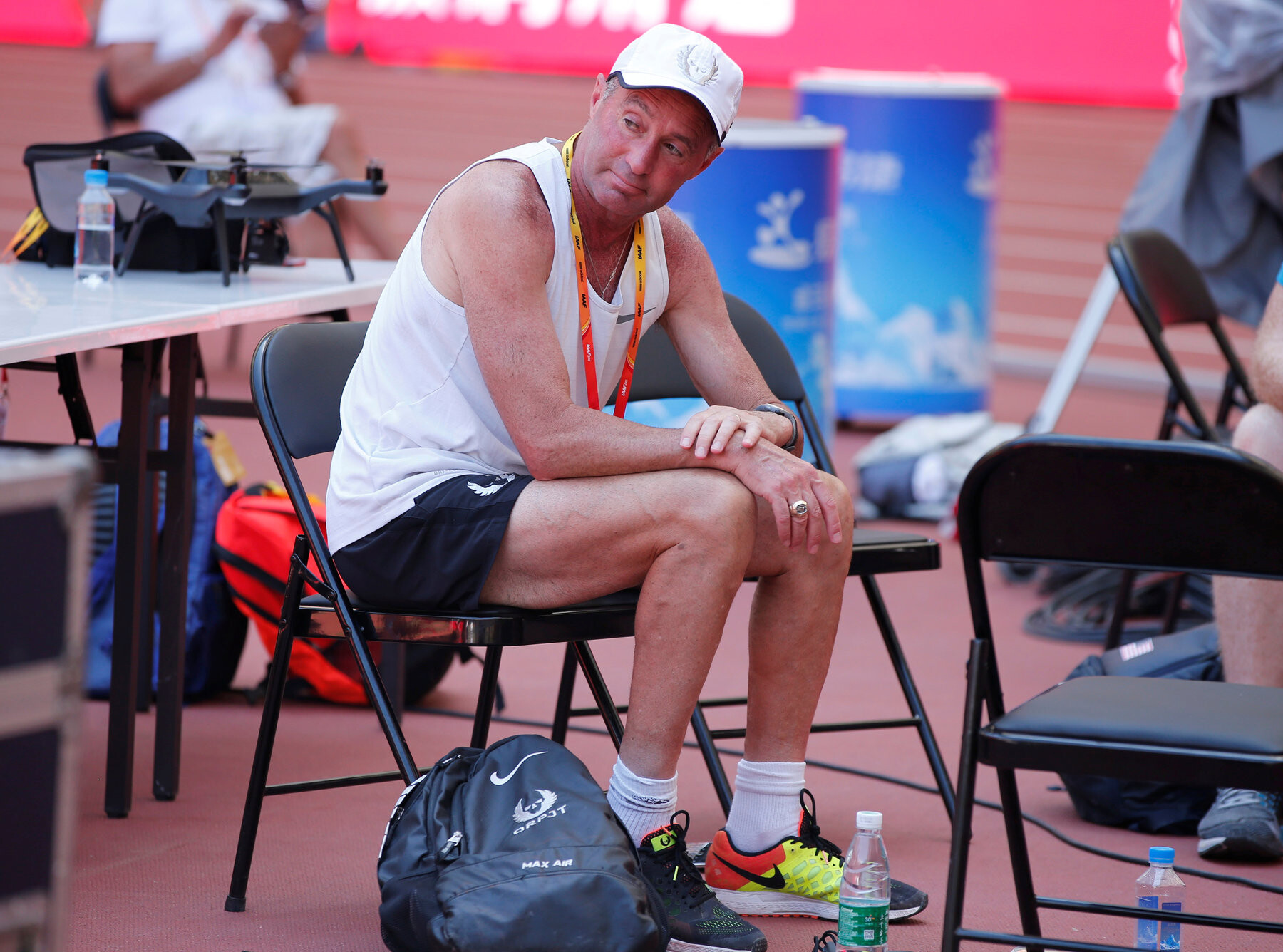
The details of the ruling, which have not been reported until now, shed new light on why Salazar, a powerful figure within elite running, was specifically barred from his sport. A number of runners have publicly accused him of bullying and behavior that was verbally and emotionally abusive, but the accusations of physical assault had not been publicly revealed. Salazar has never been criminally charged in connection with these allegations.
SafeSport, an independent nonprofit organization in Denver that responds to reports of misconduct within the U.S. Olympic and Paralympic sports, pursued action against Salazar and ruled him permanently ineligible in July 2021.
They currently list Salazar’s misconduct on their database as “sexual misconduct,” though the specific allegations against the coach were not known because they do not release details of its rulings. The report from The Times reveals new details on why the famed running coach Salazar was banned. Until now, the details were unknown.
Salazar has been accused of making comments about teammates’ bodies and weight in the past, but accusations of physical assault had not been publicly revealed. He has not been criminally charged with these allegations.
Numerous athletes have spoken out against Salazar for conduct against women. In November 2019, former high school star Mary Cain, who trained under Salazar from 2013 to 2015, spoke out about years of emotional abuse as a member of the Nike Oregon Project.
After Cain’s public comments, several other members of the project spoke out and shared their own experiences under Salazar.
Salazar, 63, has denied all allegations. In an email to The Times, he said he “never engaged in any sort of inappropriate sexual contact or sexual misconduct.”
Salazar also told The Times that the SafeSports process was “unfair” and “lacked due process protections.”
The United States Anti-Doping Agency also banned Salazar, along with Dr. Jeffrey Brown in September 2019 for four years. Although no athlete training under Salazar tested positive for a banned substance, the USADA determined Salazar tampered with the doping control process and trafficked banned performance-enhancing substances.
Salazar also denied those allegations and appealed that ban. His appeal was denied in September.
(01/31/2022) ⚡AMPby NY Times and OregonLive
National record-holder Tonatiu Lopez, on track and making history for Mexico
For all its strength across the sporting spectrum, Mexico has had scant success of late on the track when it comes to major championships. At the Tokyo Olympics, the nation of 128 million fielded full teams across the marathons and race walks, but had just one male competitor on the track.
That athlete was Jesus Tonatiu Lopez, a 24-year-old whose Games came to an end in the semifinals of the 800m, a tactical mistake costing him precious fractions of a second and leaving him wondering what might have been. Lopez finished third, just 0.03 behind Emmanuel Korir of Kenya and 0.17 behind Patryk Dobek of Poland – who went on to win gold and bronze respectively.
“I cried,” says Lopez, who made his 2022 debut at the Millrose Games, a World Athletics Indoor Tour Gold meeting, on Saturday (29). “I felt very frustrated. I knew maybe I could be in that race.”
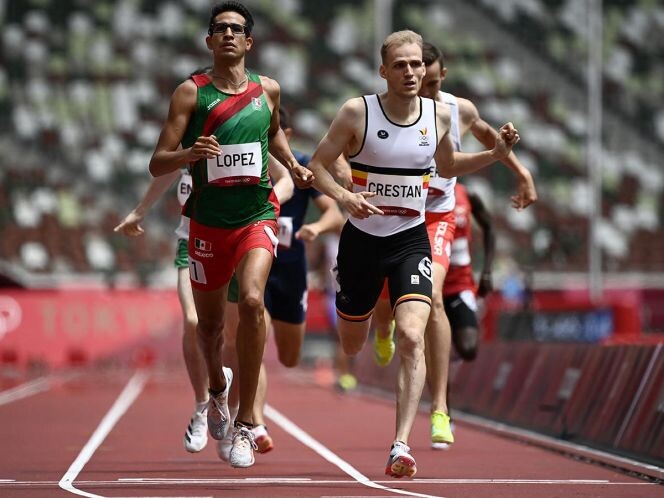
Over the coming months, he’ll have ample opportunity to make amends, with Lopez targeting the World Athletics Indoor Championships Belgrade 22 in March and the World Athletics Championships Eugene 22 in July.
“I’m not looking for a big achievement,” he says of Belgrade. “To compete with the best in the world is going to be helpful; I’ll get a lot of experience. In Eugene, I want to make the final. Obviously I want a medal, but I try to not stress myself with (such a) specific objective.”
On the build-up to Tokyo, the medal question was often put to him by Mexican journalists, and Lopez did his best to play down expectations.
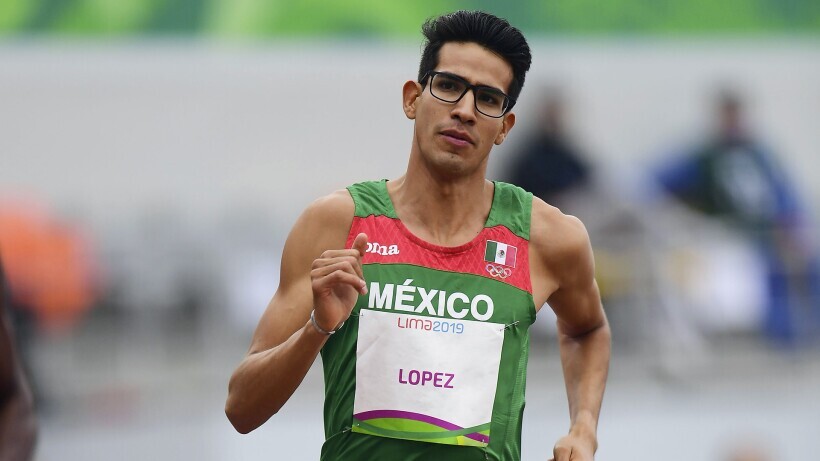
“I don’t like to talk like that,” he says. “I just want to run the best I can. I’m going to do my best, but of course with my best race I can get a medal.”
The past 12 months have taught him as much.
Through 2020 and 2021 Lopez has taken many small steps that, ultimately, led to one giant leap into world-class territory. In May last year he lowered his national record to 1:44.40 and then two months later, he hacked almost a full second off that mark, clocking 1:43.44 in Marietta, USA.
It sounds strange, but Lopez was actually happier after the first race. The reason?
“When I ran 1:43, that same day was (the) Monaco (Diamond League meeting), and (Nijel) Amos ran 1:42.91,” he says. “I wanted to be there, so I was frustrated. I thought I could run faster.”
What led to his breakthrough? Lopez’s story is similar to many other athletes who had their worlds turned upside down in 2020, forced to reassess his approach, rebuild his fitness and return better than ever once racing resumed.
“I think the pandemic helped me,” he says.
In 2019 he set a Mexican record of 1:45.03 shortly before the Pan American Games in Lima, Peru, but he was struck down with injury in the heats at that championships and failed to finish.
“In 2020 our philosophy was to get better in the things we do well and fix the things we don’t do well,” he says. “It was to get better in our weaknesses. I was not giving it everything I had (before) and I felt I needed to give a little more to get better.”
Lopez is a full-time athlete these days and trains in Hermosillo, a city of 800,000 people, located in the state of Sonora in northwest Mexico. It’s also where he grew up, first finding athletics at the age of seven, brought to it by his parents, Claudia Alvarez and Ramon Enrique.
At the time, he was playing American football, putting his speed to good use as a running back, and in those early years he “didn’t really care so much” about athletics. His parents, though, made sure he stayed the course.
“They obligated me to train,” he says. “When I was a boy I wanted to (play) American football, soccer, but they were like, ‘no, you’re going to be a track and field athlete.’”
There was no athletics background in his family, but his coach knew talent when he saw it. In 2013 Lopez – then 15 – competed at the World U18 Championships in Donetsk, Ukraine, and it left an indelible mark.
“I realized: I want to do this all my life,” he says.
At 16 he lowered his best to 1:50.33, and competed at the World U20 Championships in Eugene, USA. At 17 he was running 1:48.13. At 18: 1:46.57.
In 2017 he made his first World Championships at senior level, competing in London before going on to win the World University Games title in Taipei. By then he was a student at the University of Sonora, studying physical culture and sports and training under Conrado Soto, who still coaches him today.
Lopez would rise early, training at 6am before his classes, steadily progressing each month, each year. The sporting and academic demands meant he wasn’t able to work on the side, but support from his parents – who started him out on this path – has never wavered.
“Even with not much money, they gave me what I needed to put me in the city where I need to compete,” he says. “The first years were very difficult but thanks to them I was able to be consistent from year to year. They were also always there for me for emotional support. All this, I owe to my parents.”
As he told his story, Lopez was sitting trackside in the Armory, New York City, ahead of the Millrose Games. He’d never raced on a 200m indoor track before but Lopez ran well to finish sixth in 1:48.60.
“It was a very fierce competition but I’m satisfied,” he said. “I can get better and I know what I need to do to be better next time.”
Given his pedigree as a teenager, he had a range of options available to study in the US but Lopez overlooked them in favor of staying at home. “My coach was great, I had my family, my home,” he says. “I don’t need to go to other places when I have everything in Hermosillo.”
Growing up, he had few compatriots to look up to who were mixing it at the top level in middle-distance events, but Lopez is hoping his presence on that stage – both now and in the future – will inspire many others to follow.
“I always wanted that,” he says. “Every competition, I want to have people by my side. It took me a long time to believe I could compete with the (world’s best), but one year ago I really believed. I can compete with them.”
(01/31/2022) ⚡AMPby World Athletics
Kenyan Sebastian Kimaru crashes the Sevilla Half Marathon course record
Kenya’s Sebastian Kimaru made his Internationa debut memorable when he ran the fastest time ever at the 27th edition of the EDP Sevilla Half Marathon that was held on Sunday (30) in Sevilla, Spain.
Kimaru was the surprise winner as he was tasked to pace the race but after the 10km mark he decided to forge ahead and fight for the title as he crashed the previous record of 1:00.44 that was set in 2020 by Eyob Faniel from Italy.

Kimaru cut the tape in a personal best of 59:02 which is the sixth fastest time in history at the flattest half marathon in Europe as he led 1-2 Kenyan podium finish. David Ngure came home in second place 1:00.22 with Gebrie Erkihuna from Ethiopia closing the first three podium finishes in 1:00.27.
All the first three runners ran under the previous course record.

LEADING RESULTS
21KM MEN
Sebastian Kimaru (KEN) 59:02
David Ngure (KEN) 1:00.22
Gebrie Erkihuna (ETH) 1:00.27
(01/31/2022) ⚡AMPby John Vaselyne
EDP Seville Half Marathon
The EDP Marathon Half of Seville is one of greater participation of the south of Spain. AD Athletics San Pablo, with the collaboration of the Municipal Sports Institute of Seville and the sponsorship of EDP and Ibercaja, proposes to celebrate with us. The 27th edition will present improvements, such as the inclusion of the RFEA calendar test. A measure that...
more...Ethiopian runner Yalemzerf Yehualaw plans to defend her title at Northern Ireland event in August
Ethiopian runner plans to defend her title at Northern Ireland event in August on a course which organizers promise will be accurate this time after the 2021 short-course issue.
Yalemzerf Yehualaw has not enjoyed much luck in road races lately. In the Antrim Coast Half-Marathon last September she set what appeared to be a world record of 63:43 before it transpired the course was 54 meters short. Then, in the Great Ethiopian Run this month, she seemingly clocked an African all-comers’ record of 30:14 at high altitude in Addis Ababa, only to see the time adjusted to 31:17 due to a timing error.

The 22-year-old hopes things will start going in her favor this year and on August 28 she competes again in the ‘Mid & East Antrim’ Antrim Coast Half-Marathon, a World Athletics Elite Label race which organizers this time are sure will see performances properly ratified.
Elite race director James McIlroy said: ‘The one name we wanted back after last year’s unratified world record was Yalemzerf – and to get this news at the beginning of the season means so much. She loves the course, the people and the support she got last year along the route really spurred her on, so to have her confirm that she’s returning to the province is very special.

“As it stands, she has run four of the seven fastest all-time half marathons and just last week she ran the fastest ever 10km at altitude in winning the Great Ethiopian Run against some of the best distance runners in the world. At 22 years old she’s got so much more to come.”
Yehualaw’s ratified half-marathon best is 63:51 set in Valencia last year and she has also won bronze at the World Half-Marathon Championships. Only one athlete has run quicker over the 13.1-mile distance – world record-holder Letesenbet Gidey with 62:52, which was also set in Valencia last year.
When asked about the course being found to be 54 meters short, he said: “It was very disappointing for everyone concerned; the event, the course measurers, who are two of the most experienced in the UK, but most of all the athlete. But we did follow the protocol to the letter, and the main issue was around not having both measurements done at the same time.
“This unfortunately wasn’t possible due to the travel restrictions in place at that time because of Covid. Moving forward in 2022, we will have the course measured, verified and a racing line put down ahead of the race in August.”
McIlroy, a former AW cover star himself during his 800m racing days, added he has a big announcement coming soon in the men’s race, even going as far as to say that it’s as exciting news as you can get when it comes to global distance running.
Also already set to race on August 28 are Great North Run winner Marc Scott and last year’s Antrim Coast runner-up Tesfahun Akalnew.
(01/31/2022) ⚡AMPby Jason Henderson
MEA ANTRIM COAST HALF MARATHON
The MEA Antrim Coast Half Marathon 2022 has been approved by World Athletics as an Elite Event. The World Athletics certified course takes in some of the most stunning scenery in Europe, combined with some famous landmarks along the route. With it's flat and fast course, the race is one of the fastest half marathons in the world. Starting...
more...Try this Tabata HIIT workout for runners, combine speedwork with strength training in one fun, challenging workout
As runners, we know we need to strength train if we want to prevent injuries and see our times come down, but fitting it into our weekly schedule isn’t always easy. This workout combines some speedwork and strength training into one fun session to help you get fitter, faster and stronger, and is a great alternative to traditional speedwork during the off-season.
The workout
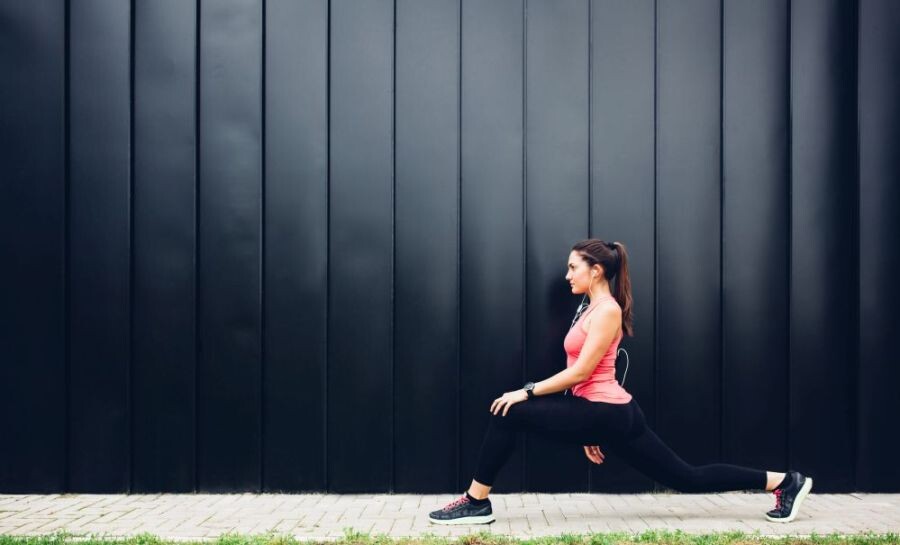
This session alternates between sprinting and explosive, plyometric-style exercises for a varied and intense workout. The ideal location for a workout like this is at your local track, but you can easily convert the running distances to times to do this on the road, or you could do it indoors on a treadmill as well. The strength portion does not require any equipment, making it easy to take to a variety of locations, and is all done Tabata-style, which means eight rounds of 20 seconds of work and 10 seconds of rest.
Warm-up: 10-15 minute easy jog, followed by mobility drills.
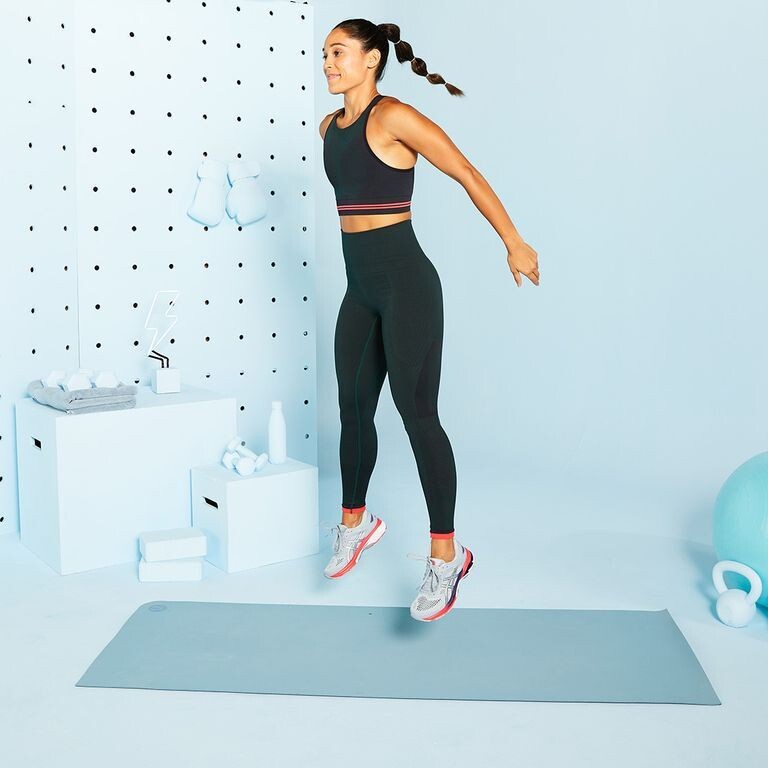
Workout:
2 x 200m/1 minute rest
Tabata: Alternate between Jumping squats (modify with regular squats) and pulsing squats
2 x 200m/1 minute rest
Tabata: Alternate between jumping lunges (modify with walking lunges) and pulsing lunges (switch legs each time)
2 x 200m/1 minute rest
Tabata: Alternate between plank (modify by dropping your knees to the ground) and mountain climbers
2 x 200m/1 minute rest
Cooldown: 10-15 minute jog, followed by light stretching
(01/31/2022) ⚡AMPby Brittany Hambleton
Study: watch out for these predictors of multiple injuries
Despite how common injuries are among runners, we still know relatively little about what specific factors cause them, or how to prevent them. We know even less about why some runners suffer multiple injuries in a season, while others seem to be able to run forever with next to no issues. Recently, researchers in South Africa tried to understand what causes some runners to experience multiple injuries, and their findings may surprise you.
The study
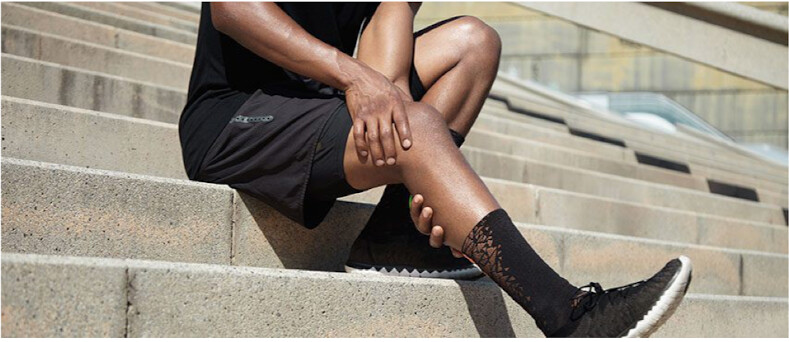
The study, which was published in the Journal of Sport and Health Science, collected running-related injury data from 75,401 race entrants across four years (2012-2015) at the annual Two Oceans 21.1 km and 56.0 km races in South Africa. The average number of injuries for each runner every year was calculated by taking a runner’s race entry history and injury history into account and categorizing entrants into four multiple injury risk (MIR) categories — high, intermediate, low and very low.
The researchers used odds ratios (multiple logistic regression modeling) to determine which factors predicted a high risk of multiple injuries. The factors they considered included demographics, training and racing, chronic-disease history and history of allergies.
The results
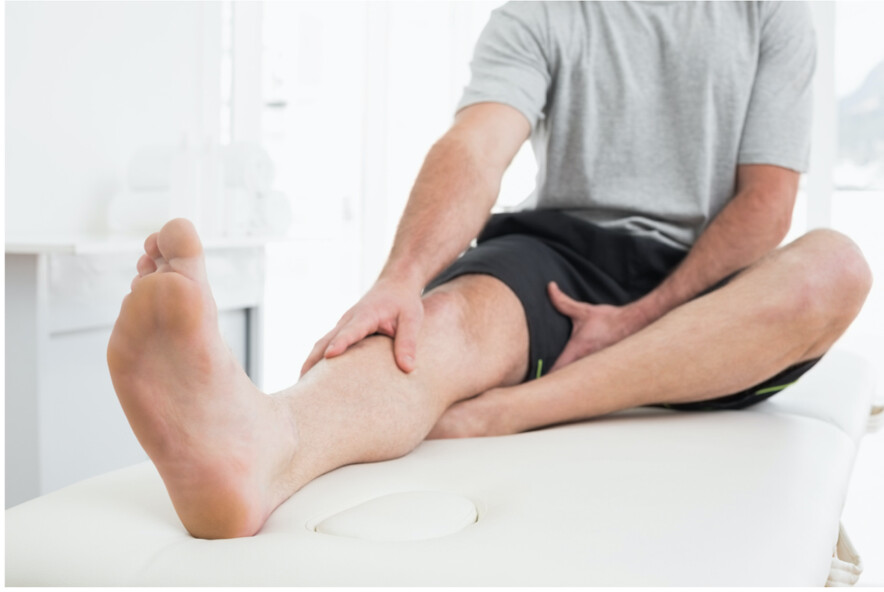
Interestingly, the results showed that less than 10 per cent of the runners surveyed experienced an injury over the four years, and only 0.4 per cent of them experienced multiple injuries during that time. This, the researchers admitted, is relatively low compared to other studies, which have previously reported between 19.4 per cent and 79.3 per cent of runners experiencing at least one injury every year, and warrants further investigation.
The study determined three independent risk factors that seemed to predict a higher instance of multiple injuries. These included older age (more than 40 years old), a longer history of recreational running (more than 20 years) and running longer distances, like ultramarathons. Counter to what you may think, neither weekly running mileage nor any other training-related risk factors were predictors of a high rate of multiple injuries.
Chronic disease and injuries
The researchers also identified two novel risk factors for multiple injuries: a history of chronic disease or a history of allergies. Nearly 19 per cent of all runners involved in the study reported at least one chronic disease, and these people accounted for 26 per cent of runners with multiple injuries. If the number of chronic diseases in a runner increased from one to two, their odds for having multiple injuries increased by a factor of 2.2 per cent. If they went from two to three, those odds went up another by a factor of 4.7.
The authors of the study note previous studies have shown that chronic diseases are common among endurance runners. They also point out that other studies have reported a link between chronic diseases like diabetes mellitus and hypercholesterolemia are associated with injury. They believe that one reason for this association is that runners with chronic diseases are likely on a number of medications, which could influence their risk for injuries. “There is also evidence that medications used to treat chronic diseases can be associated with increased risk of tendinopathies, ligament injuries and bone-stress injuries,” the researchers say.
Allergies and injuries
The study also found that runners with a history of any form of allergies had significantly higher odds of experiencing multiple injuries than those who didn’t. “Runners with allergies are likely to be taking antihistamines, especially because endurance running is an outdoor activity,” the researchers concluded. “One of the oral sedating H1 antihistamines, Promethazine, has been associated with severe tissue injury.”
The bottom line
Injuries are complicated and often multi-faceted, and scientists are still learning what causes some people to become injured more than others. This study has a few specific limitations, including the self-reported nature of the data, and the fact that none of the injuries were confirmed by healthcare professionals.
The results of this study were also correlations, not causations, and cause-effect relationships between the risk factors couldn’t be confirmed due to the cross-sectional design of the study. The researchers also didn’t address risk factors that could potentially play roles in multiple injuries among runners, like body mass index, specific medications, type of training/surface or biomechanics, among others, and they did not account for recurrent injuries in their data.
Still, runners with allergies or chronic diseases should take note of this study, and take extra precautions with their training. Particularly if you’re taking medications for your condition, you should talk to your doctor about the potential side effects and how you can lower your risk for injuries and train safely.
(01/30/2022) ⚡AMPby Running Magazine
Joan Benoit Samuelson teaches a MasterClass on running
Your mind is just as important as your body when you’re running, but developing a healthy, strong mindset is not always easy. Just like it takes time, dedication and practice to train your body for a race, it requires equal amounts of effort to train your mind, and who better to coach you through that process than America’s running sweetheart, Joan Benoit-Samuelson?
Her class, Joan Benoit Samuelson Teaches the Runner’s Mindset, is available now as part of the popular MasterClass series, and will no doubt help you crush your goals in 2022.

“After 50+ years of running, I’m delighted to partner with @masterclass to share my lifelong passion for running,” Samuelson said on her Instagram. “I invite you to join me in this class and make your miles count, on the road and in life. Run on in good health and with fire in your belly.”
For the uninitiated, Benoit Samuelson is one of the most accomplished runners in history. She won the Boston Marathon twice, in 1979 and 1983, and was the winner of the first-ever Olympic women’s marathon in 1984.
Now in her mid-60s, she is also the only woman in the world to have run sub-3 hour marathons in five consecutive decades, her first in 1979 and her most recent in 2010. At the 2019 Berlin Marathon, she ran 3:02, nearly becoming the first woman to clock a sub-3 in six consecutive decades.
Her new MasterClass will cover a range of topics, including goal setting, balancing the runner’s mind, stretches and strength training, running your first marathon and navigating injury. She also shares interesting anecdotes about her early days of running. “When I first started to run, I ran inside the confines of an old abandoned Army post,” she says in the opening remarks. “And there wasn’t any vehicular traffic allowed in that area at the time, so I would walk from our house to the fort and I would run to my heart’s desire. And then I’d walk home, because I was embarrassed to be seen running on the roads.”
She talks about being the underdog at that first Olympic marathon, the pressure of being an Olympic champion, how running has shaped her life and her desire to give back to the sport. This MasterClass is a unique opportunity for runners to level up their training. For more information, visit the Masterclass website.
(01/30/2022) ⚡AMPby Running Magazine
Inaugural world 50km records ratified
Women’s world 50km record (mixed race)2:59:54 Desiree Linden (USA) Dorena Lake USA 13 April 2021Men’s world 50km record 2:42:07 Ketema Negasa (ETH) Port Elizabeth RSA 23 May 2021Women’s world 50km record (women-only race)3:04:24 Irvette van Zyl (RSA) Port Elizabeth RSA 23 May 2021The 50km performances achieved by Desiree Linden, Ketema Negasa and Irvette van Zyl in 2021 have been ratified as inaugural world 50km records.
Given the increasing popularity of 50km road races, the decision to add the distance to the list of events for which world records are recognised was made at the 225th World Athletics Council meeting in Tokyo in July.
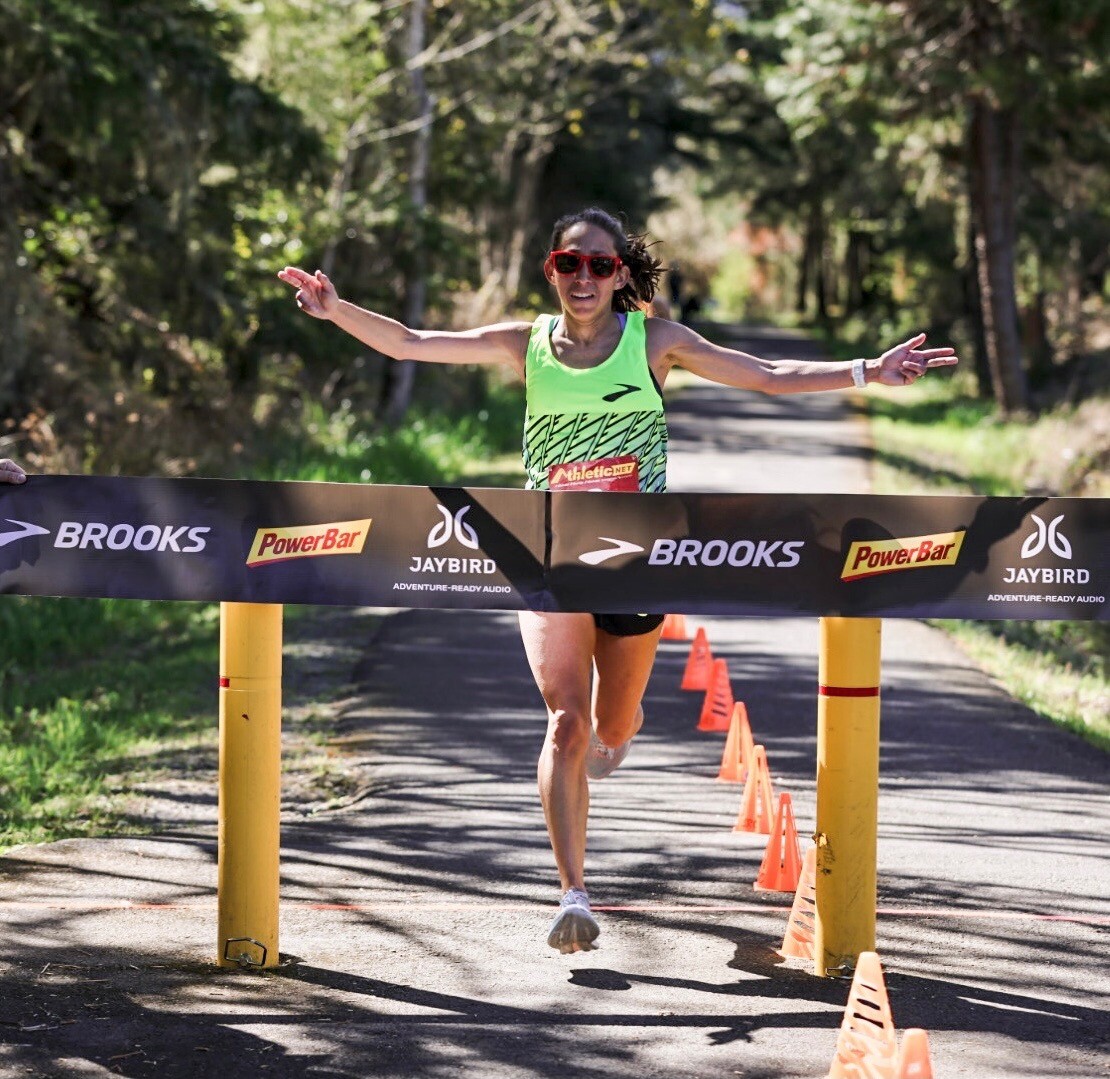
The best legitimate performances as at 1 January 2022 – provided they met the minimum standards of 2:43:38 for men, 2:59:54 for women in a mixed race and 3:07:20 for a woman in a women-only race – were eligible for record ratification.
As a result, the 2:42:07 recorded by Ethiopia’s Negasa and the 3:04:24 run by South Africa’s Van Zyl, both in Port Elizabeth in May, plus the 2:59:54 achieved by the USA’s Linden in a mixed race in Oregon in April, have been ratified as world 50km records.
Linden’s performance came at the Brooks Running 50km & Marathon on 13 April 2021, when she became the first woman to run 50km in under three hours. To achieve it, the 2018 Boston Marathon champion averaged at a pace of 3:35 per kilometre, clocking 1:15:47 at the half-marathon mark.
The following month, on 23 May 2021, Negasa and Van Zyl both lined up for the Nedbank Runified Breaking Barriers 50K. Negasa went on to race at an average pace of 3:15 per kilometre to achieve his winning time of 2:42:07, while Van Zyl clocked 3:04:24 after averaging at a kilometre pace of 3:41.
(01/30/2022) ⚡AMPby World Athletics
Matsuda runs 2:20:52 to break Osaka Women's Marathon record
Mizuki Matsuda broke the race record at the Osaka Women’s Marathon on Sunday (30), improving her PB to 2:20:52 to win the World Athletics Elite Label event.
Her time beats the 2:21:11 event record which had been set by Mao Ichiyama last year and moves her to fifth on the Japanese all-time list. It is also the second-fastest time by a Japanese athlete in Japan, behind Ichiyama’s 2:20:29 set in Nagoya in 2020.

Matsuda was followed over the finish line by Mao Uesugi, Natsumi Matsushita and Mizuki Tanimoto, as the top four all dipped under 2:24.
Before the race, Matsuda had explained how her goal was to win the race with a performance that would help her to secure a spot on the team for the World Athletics Championships in Oregon later this year. After winning in Osaka in 2020 with 2:21:47, Matsuda had later missed out on a place at the Tokyo Olympics when Ichiyama ran faster in Nagoya.
“I could not attain my goal today,” she said after the race, with beating Ichiyama’s 2:20:29 a likely aim. “I am happy that my hard training paid off well.
“I think the result was good because I ran aggressively from the start. I just hope that I will be selected for the World Championships team. During the race, I was imagining myself running in Eugene, thinking: ‘How would the world-class runner run at this stage of the race?’”
Despite the pandemic, the event in Osaka was able to go ahead as planned, under good conditions with little of the expected wind.
Matsuda and Uesugi had run together behind the three male pacemakers until just after 25km, passing 10km in 33:02 and half way in 1:09:57 – a half marathon PB for Uesugi.
At 25km the clock read 1:22:47, but Uesugi started to drift back a short while later and by 30km – passed in 1:39:15 – Matsuda had built a 31-second lead.
She went through 35km in 1:56:04 and 40km in 2:13:23, with the pacemakers leaving the race as they entered Nagai Stadium park at around 41km.
Matsuda went on to cross the finish line in 2:20:52 to achieve her third Osaka Women’s Marathon win after her victories in 2018 and 2020, maintaining her unbeaten record in the event.
Although Uesugi’s pace began to slow as she was dropped, she held on to run a big PB of 2:22:29, while Matsushita was third in 2:23:05 and Tanimoto fourth in 2:23:11. Yukari Abe was fifth in 2:24:02 as the top five all set PBs, with Sayaka Sato sixth in 2:24:47. The top six all qualified for the Marathon Grand Championship, the 2024 Olympic trial race.
(01/30/2022) ⚡AMP
Osaka International Womens Marathon
The Osaka International Ladies Marathon is an annual marathon road race for women over the classic distance of 42.195 kilometres which is held on the 4th or 5th Sunday of January in the city of Osaka, Japan, and hosted by Japan Association of Athletics Federations, Kansai Telecasting Corporation, the Sankei Shimbun, Sankei Sports, Radio Osaka and Osaka City. The first...
more...Nick Willis runs sub-four minute mile for 20th consecutive year
Nick Willis ran a sub-four minute mile at the Millrose Games in New York- 20 seasons after first breaking the barrier in 2003.
New Zealand track and field great Nick Willis has earned $25,000 for an athletics charity after completing 20 years of sub-four minute miles.
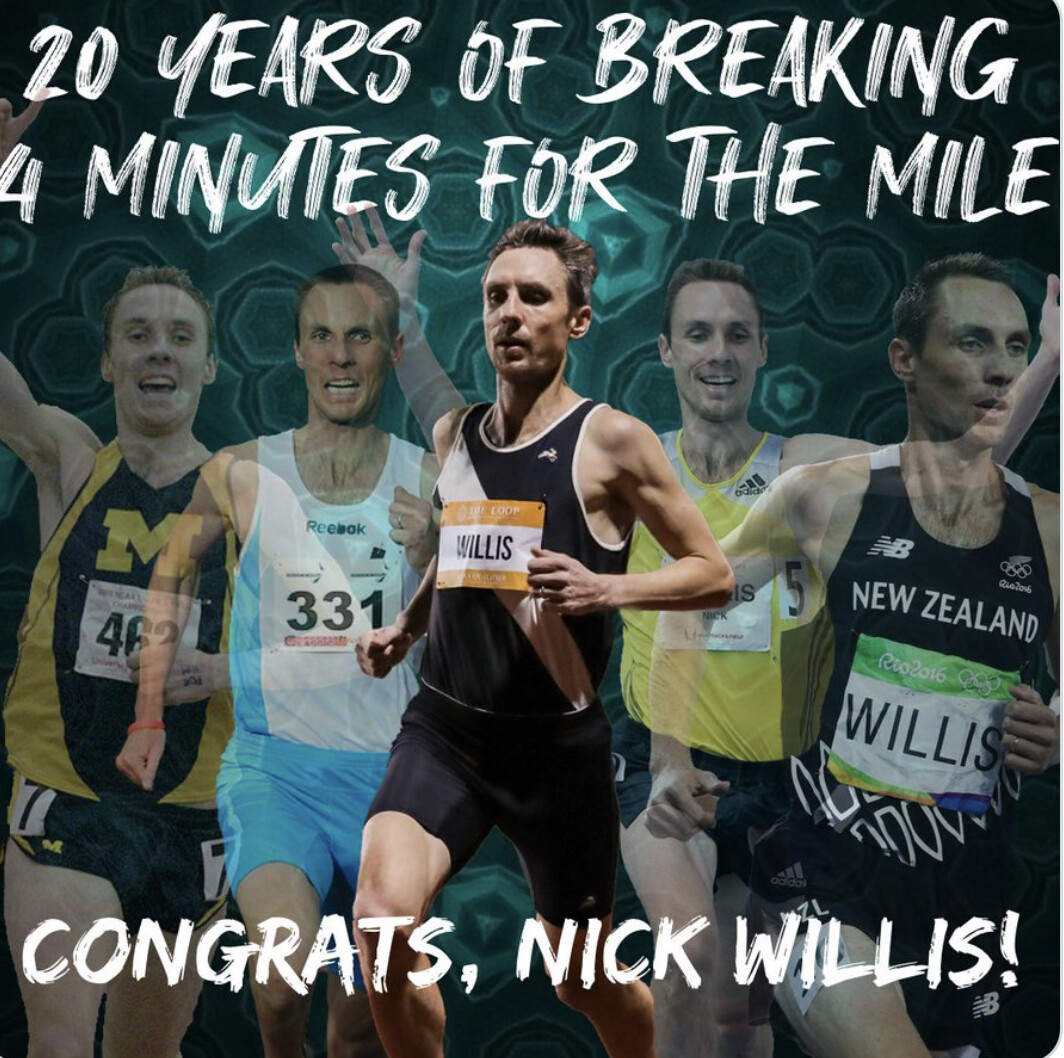
The 38-year-old finished ninth in the Wanamaker men’s mile at the Millrose Games indoor meet in New York City on Saturday January 29 in 3min 59.7sec.
It was in 2006 that Willis experienced international success for the first time, claiming 1500m gold at the Commonwealth Games in 3:38.49 ahead of Canada’s Nathan Brannen and Australia’s Mark Fountain. That same year, he lowered his mile personal best to 3:52.75.
In 2007, Willis made his first world 1500m final, placing 10th in Osaka in 3:36.13.

The following year, Willis ran what he considers one of his best races to improve his mile personal best to 3:50.66, finishing second behind Kenya’s Shadrack Korir at the Prefontaine Classic in Eugene, Oregon. Two months after that, he went on to claim 1500m silver at the Beijing Olympics in China.
At the following 2012 Olympic Games, Willis had the privilege of being his country’s flag bearer during the opening ceremony held at the London Stadium. He finished ninth in the Olympic 1500m final and had a season's best of 3:51.77 for the mile.
In 2014 at the Glasgow Commonwealth Games, Willis earned 1500m bronze, his third straight Commonwealth medal after the one he had taken in Delhi four years prior. It was also in 2014 that he set his lifetime best of 3:49.83 in the mile, which stood as the Oceanian record until July 2021.
In 2015, Willis clocked a still-standing Oceanian record of 3:51.46 for the indoor mile, and a national 1500m record of 3:29.66 at the Herculis Diamond League meeting in Monaco. That same year he finished sixth with 3:35.46 in the 1500m final at the World Championships in Beijing, his best placing in the competition.
The following year, Willis added two global medals to his tally with a 1500m bronze at the World Indoor Championships in Portland and an Olympic 1500m bronze in Rio.
At 38, Willis was the oldest athlete in the 1500m field at the Tokyo Olympics, where he placed ninth in his semifinal in a season’s best of 3:35.41.
Earlier in 2021, he had already broken the record of 19 consecutive years of sub-four-minute miles. And he finally went on to improve that record to 20 on 29 January 2022 with his 3:59.71 run.
(01/29/2022) ⚡AMPby World Athletics
NYRR Millrose Games
The NYRR Millrose Games,which began in 1908 as a small event sponsored by a local track club, has grown to become the most prestigious indoor track and field event in the United States. The NYRR Millrose Games meet is held in Manhattan’s Washington Heights at the New Balance Track & Field Center at the Armony, which boasts a state-of-the-art six-lane,...
more...The mental side of running injuries a new research examines how injury-related psychological distress can impact recovery
While the physical pain that comes with a running injury can be tough to deal with, the emotional and mental anguish of having your training interrupted is often the hardest part. We are now realizing that working on your mental condition while injured doesn’t just make your time on the sidelines easier to handle, it can actually speed up recovery. In a recent study, researchers explored how psychological distress can actually make your injury worse, and delay your return to the roads.
Injury and fear
The “psychological distress” of runners is another way of saying fear. When you have a running injury preventing you from training, a significant part of your stress comes from fear of all the unknowns. Questions like “how severe is the injury?” “How long will it take to heal?” and “How much fitness will I lose?” keep you up at night, distract you from other priorities and consume a lot of your mental energy.

In this new study published in the Physical Therapy in Sport, researchers wanted to determine how much this psychological distress affected runners’ perceived running abilities. To do this, they collected data from runners at their first physiotherapy appointment, which included having them fill out an Athlete Fear Avoidance Questionnaire (AFAQ) for injury-related psychological distress and the University of Wisconsin Running and Recovery Index (UWRI) for perceived running ability.
The researchers found that most athletes experienced significant injury-related psychological distress at the beginning of their treatment, but this generally improved over time. Despite this, they found that athletic fear-avoidance may persist, and athletes with higher athletic fear-avoidance had a lower perceived running ability.

Mental condition and physical condition
While the main job of a physiotherapist is to help athletes improve their physical condition, the authors of the study conclude that therapists should also spend time working on their patient’s mental condition throughout the injury recovery process as well.
Runners should also do some of this work themselves. Injuries can seem like catastrophes when they happen, especially when they prevent you from running your goal race, but it’s important to keep things in perspective. Most injuries aren’t career-ending. You will get back to running again and while it may take a bit of time to re-build your fitness, you will achieve more of your running goals.
In the meantime, focus on doing whatever you can do, whether that’s some form of cross-training or simply staying on top of your physio exercises every day. Just as you’ve gotten through hard blocks of training and rough patches in races, you’ll get through this, too.
(01/29/2022) ⚡AMPby Brittany Hambleton
This weekend's Osaka International Women's Marathon will go ahead despide omicron wave
Despite Osaka being named to a preliminary state of emergency as Japan goes deeper into its omicron wave, this weekend's Osaka International Women's Marathon and Osaka Half Marathon are going ahead on their traditional public road courses. Osaka Women's is Japan's last remaining purely elite marathon, and with the mass-participation Osaka Marathon moving to the last weekend of February this year and targeting WA platinum label status the writing has to be on the wall for its future.
It just doesn't seem sustainable to have this race four weeks before the start of a three-week run of platinum label races, one in the same city, one in Tokyo and one in Nagoya.
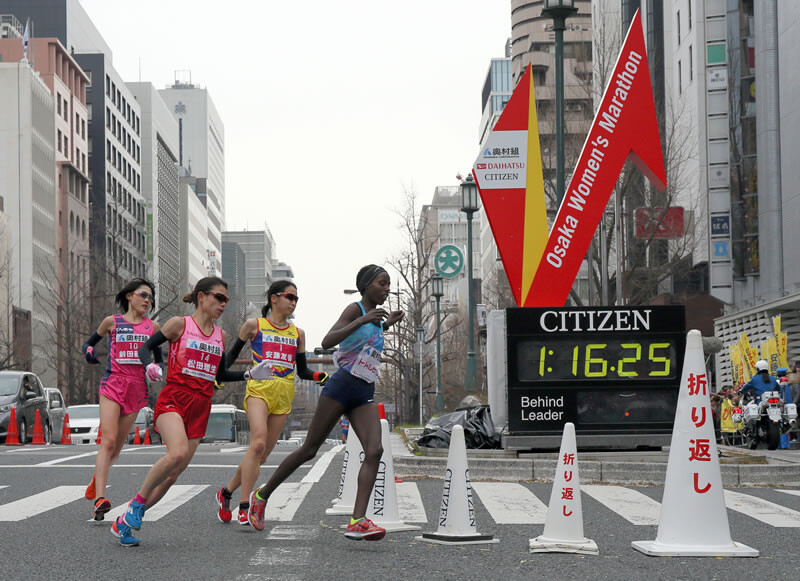
But for this year, at least, Osaka Women's clearly has the support up top in the local government to keep moving, and that counts for something. Like the 2021 race, despite its name it's a Japanese-only field with male pacers, kind of inevitably on the first point given Japan's ongoing border fortification but a bit regrettably on the second. Take out the "International" and "Women's" and what have you got left?
The win looks almost definitely to be between Mizuki Matsuda (Daihatsu) and Sayaka Sato (Sekisui Kagaku). Matsuda has one of the best records in the sport, with three wins and a 5th-place in Berlin out of five marathon starts, all between 2:21:47 and 2:22:44. The only misfire she's had was a 2:29:51 for 4th in Japan's Olympic marathon trials that left her as alternate. How she would have done if she'd replaced one of the less-than-100% women who ran the Olympics is one of last year's biggest what-ifs. Sato was the 4th-fastest Japanese woman in 2020 and 2021 and set the 25 km NR en route in her marathon debut, a mark that Matsuda broke while winning Nagoya last year. Sato will need a big step up and/or another miss from Matsuda to compete, but it should be a good race.
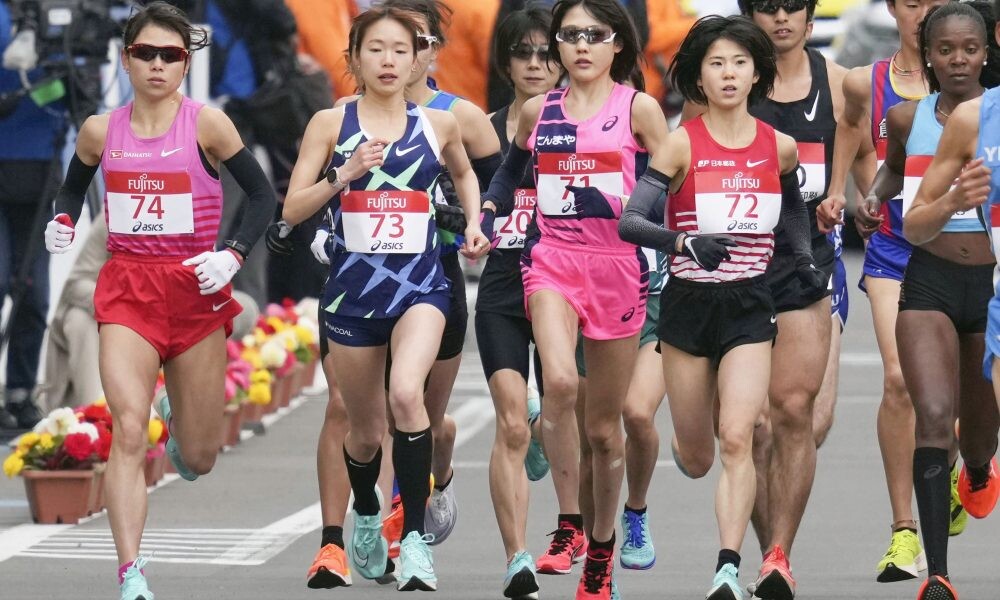
The supporting cast includes 2019's fastest Japanese woman Reia Iwade (Adidas), and 2021's 3rd and 4th-placers Yukari Abe (Shimamura) and Mao Uesugi (Starts). Osaka Women's factors into the complex algorithms for making the Oregon World Championships team and Paris Olympics marathon trials, and with six other women in the field having run under the 2:27:00 B-standard for qualification for the Olympic trials the race to finish in the 4th-6th place B-standard bracket should be just as good as the one to make the 1st-3rd place A-standard bracket.
Alongside the marathon, the Osaka Half Marathon will also feature two-time Osaka International winner Kayoko Fukushi (Wacoal) in her final race. Fukushi's marathon debut in Osaka in 2008 was possibly the wildest elite-level marathon debut in history, and while she might not have another marathon in her it's great to see her bring her career to a close back where she had one of its most unforgettable highlights. Sub-61 half marathoner Kenta Murayama (Asahi Kasei) leads the men's field in the half in a tune-up for one of the big marathons a month away whose future is still up in the air.
Fuji TV is handling TV broadcasting duties starting at noon Sunday Japan time. Official streaming looks to be through the TVer subscription service, so get your VPNs now. You might have luck with mov3.co too, but use a popup blocker. JRN will also be covering the race on @JRNlive.
(01/29/2022) ⚡AMPby Brett Larner
Osaka International Womens Marathon
The Osaka International Ladies Marathon is an annual marathon road race for women over the classic distance of 42.195 kilometres which is held on the 4th or 5th Sunday of January in the city of Osaka, Japan, and hosted by Japan Association of Athletics Federations, Kansai Telecasting Corporation, the Sankei Shimbun, Sankei Sports, Radio Osaka and Osaka City. The first...
more...Olympic medalist and champion marathoner Meb Keflezighi thought about dropping out of every marathon he ran—even the three he won.
So if you’ve had those thoughts, it’s certainly not just you. All runners have rough patches when pushing themselves, whether in a race, during a hard workout, or on a long run. Experts use the phrase “psychological crisis” to describe when your body’s signals dominate your attention and you think about slowing or stopping.
These moments often occur two-thirds to three-quarters of the way through a workout or race. Speaking about the Ursuline Academy runners she coaches in Dallas, elite runner Becky Wade says:

“They’re deep enough into the race that they’re hurting, but not close enough to the finish line yet to get excited or start kicking. It’s easy to doubt whether they’ll be able to hang on, and they back off a bit as a protective mechanism.”
What separates Keflezighi, Wade, and other successful runners from some of us is that they know these rough patches will come, and they have mental strength techniques for dealing with them.
These techniques are quite simple. Even better, they can be learned, and then honed, so that you persevere despite the internal voice telling you to back off or drop out. Here are six elite-endorsed ways to build mental strength when the going gets tough.
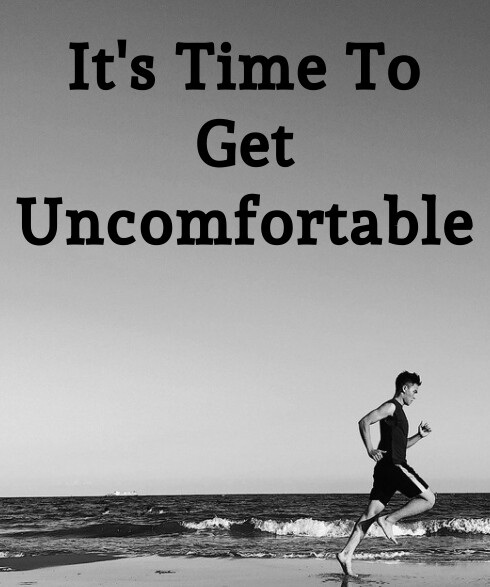
1. Know Why You’re Doing This
Good goals not only guide your training. They can also fortify you during difficult stretches.
Know the purpose of a given workout or race, and how it will help you meet a personally meaningful goal, says Olympian Roisin McGettigan, a sport psychology coach who holds the Irish record in the steeplechase.
For example, “if it was a long workout, I would remind myself that this is the time to work on my strength and endurance,” McGettigan says. “If it was an early-season race, the purpose might be ‘to see where I’m at’ or ‘blow off the cobwebs.’”
These why-am-I-doing-this thoughts can occur not just when you’re acutely suffering, but also when you’re bored or apathetic. McGettigan says to remind yourself why you’re out there in those situations as well. Think of how easy running will help you recover for your next key workout, or how an hour alone on the roads provides a calming antidote to the message-a-minute pace of modern life.
If thoughts alone don’t do the job for you, McGettigan recommends using visual cues. “I often drew a smiley face or heart on my hand to remind me that I really loved what I was doing and I was saying ‘yes’ to this experience,” she says.
2. Enlist Family and Friends
Telling a few key people about your race or hard workout adds accountability. When a moment of crisis occurs, picture yourself recounting the run to them. Will you be proud to tell them how you handled the challenge?
Meb Keflezighi was in 21st place halfway through the 2012 Olympic Marathon. Bothered by stomach and foot pain, he pondered dropping out. Then he thought about his family, who were waiting for him at the finish line. What kind of example would dropping out set for his daughters, he asked himself. He committed to finishing no matter what, and wound up crossing the line in fourth place.
You can also enlist others in practical terms. As McGettigan notes, most elite runners train with others, in part to be pulled through hard efforts when they’re struggling and might otherwise slack off. Wade tells the high schoolers she coaches to latch on to a teammate or competitor if their resolve falters during a race. Doing so can shift your attention from how much you’re hurting to the more straightforward task of maintaining contact.
3. Visualize Success
To reiterate: Successful racers know one or more psychological crises are likely to occur when they’re pushing themselves. One way they prepare for the challenge is to play the race through their head before they get to the starting line. As Wade, a 2:30 marathoner, puts it, “I envision myself in a race atmosphere, down to the course, competition, and atmosphere.”
A key benefit of doing so is that, when the urge to slow or stop strikes, you have a counter-narrative ready—that vision you implanted and watched several times of yourself rising to the challenge and continuing to run strong.
“I think having visualized the race going well in my head many times allowed me to stay engaged, because I had already told myself I was going to have a good race,” says Mark Coogan, whose long elite career was highlighted by a spot on the 1996 Olympic marathon team. “Knowing what I was going to do in the race allowed me to be more aware of how I was running physically, so I could stay loose and smooth.”
Coogan is now the coach of New Balance Boston, which includes on its roster Olympians Elle Purrier St. Pierre and Heather MacLean. He encourages his athletes to spend 10 to 15 minutes a day visualizing in the week leading up to a big race.
“I tell them to visualize seeing themselves running well,” Coogan says. “Visualize the race you want to happen.”
4. Focus on Your Body—But Not Excessively
Experts used to believe that experienced runners focus on bodily sensations (known as associating) and that less experienced runners focus on anything but their body (known as dissociating). Thanks in part to research by Noel Brick, Ph.D., a psychology professor at the University of Ulster and co-author of The Genius of Athletes, it’s now known that that old dichotomy is too simplistic.
Brick has shown that a Goldilocks-level of bodily awareness leads to lower perceived exertion. “Focusing excessively on bodily sensations, like breathing or feelings of discomfort, can be harmful to our performance,” Brick says.
Focusing solely on these sensations can negatively affect performance by increasing how hard the work feels and making the run feel more unpleasant. This then leads to slowing down.
(01/29/2022) ⚡AMPby Runner’s World
Craig Engels, Running’s Most Committed Party Animal, Returns to Nike—and Running Fast
Craig Engels explains what he can about his new four-year deal and heads to Millrose Games in good shape.
Craig Engels, the fun-loving 1500-meter runner who never misses a party, inked a new deal with Nike in the early days of 2022. It’s a four-year agreement, taking him through 2026.

But he went through a lot of soul-searching before he decided to return to running at a high level.
Engels, 27, finished fourth by half a second in the 1500 meters last June at the U.S. Olympic Track and Field Trials, just missing the team bound for Tokyo.
In the days afterward, he was adrift. “Everything I worked towards [was] over,” he told Runner’s World during one of several recent interviews. “I didn’t know what to do with myself. Which—I don’t know what emotion that is. It wasn’t sadness. More like, what do I do?”
He spent the rest of the summer racing on the track and road circuit in the U.S. He helped pace men who were trying to break 4:00 in the mile, and he encouraged facial hair growth. And still, he raced at a high level, although neither Engels nor his coach, Pete Julian, would say that his training resembled what it was before the Trials.
“We had to change things up,” Julian told Runner’s World last September, “had to piece together workouts in between to keep him so he could at least finish a mile. That’s what Craig needed at the moment.”
On August 14, he finished second at a mile in Falmouth, Massachusetts, clocking 3:53.97. Six days later he finished second again in the international mile at the Prefontaine Classic in Eugene, Oregon, in 3:55.41.
That runner-up finish at Pre came as a result of a premature celebration. He waved to the crowd at the top of the home stretch, but Geordie Beamish of New Zealand sailed by him with a few meters to go.
They hugged it out on the track and then took a victory lap.
“That’s Craig,” Julian said. “He makes mistakes along the way, it’s why he’s so damn popular. I’ve never seen anybody do something as dumb as wave to the crowd and then get beat and still get to take a victory lap. Pretty classic, right? There’s one guy in the world who can do that, and that’s Craig.”
After Pre, Engels shut down his season. In the fall, he returned to the University of Mississippi to finish the final semester of classes he needed to complete his MBA.
While Engels was in Oxford, Mississippi, he trained with Ole Miss cross-country coach Ryan Vanhoy, who had coached him in college, and the Ole Miss team. They logged high mileage and did a lot of long strength-based workouts. Meanwhile, Engels pondered his future.
Engels flirted with retirement, and Julian said Engels was sincere in his questioning, asking himself: “Is this something that I want to do?”
Running the Numbers
As Engels got back into shape and finished his classes, he began the process of negotiating a new contract. Initially, he tried to do it alone. He said he parted ways with his first agent, Ray Flynn, via email between rounds of the 1500 at the Olympic Trials.
Reached by text message, Flynn said, “It’s all good with Craig and I. Happy to see him doing well.”
Engels said he had long struggled with the role of agents in pro running and the fee they charge—15 percent of everything, including sponsorship deals, appearance fees, and prize money—for negotiating what often turns out to be a single contract with a shoe company.
“A lot of these agents were athletes,” Engels said. “I don’t know how they possibly sleep at night, taking 15 percent. NFL agents are capped out at three [percent].”
But as Engels talked to shoe company executives and weighed various offers and training situations, he realized he needed someone to review the contracts—“the lawyer jargon,” he calls it. “I was getting a little stressed,” he said.
So he hired Mark Wetmore as his agent, who also represents Engels’s teammate Donavan Brazier, among others. Wetmore immediately increased the value of the offers Engels had started negotiating on his own behalf.
Engels signed with Nike again. At the end of the four-year deal, he’ll have run professionally for 9 years, and he said it will be his last contract.
The terms of the deal are private—Engels had to sign a nondisclosure agreement, as most athletes do, which also limits the knowledge athletes have about their value in the market.
All he could say about it? “I definitely had some great offers on the table, which led to a very good contract for myself.”
Engels said if it were up to him, he’d post the details of his contract on Instagram to his 97,000 followers. Such knowledge would only help other runners, he says, while the current system benefits agents.
The Athlete Changes the Coach
Engels also returned to train with Julian and his team, recently named the Union Athletics Club (UAC). The club is headquartered in Portland, Oregon, but between altitude stints, training camps, and races, they’re rarely there for long.
He is now doing the bulk of his workouts with Charlie Hunter, who is on the UAC, and Craig Nowak, who trains with the group but isn’t officially on the roster. The group has been training in San Luis Obispo, California—team member Jordan Hasay’s hometown—and enjoying sunny skies and warm weather, and preparing to race the Millrose Games. Engels is entered in the mile.
“I’m in pretty good shape, yeah,” he said. “I don’t want to talk too much before it happens. I’m in pretty good shape.”
After Millrose, UAC hosts an indoor meet in Spokane, Washington, the Lilac Grand Prix, on February 11. The U.S. indoor championships are back in Spokane two weeks after that.
Julian, for one, is glad to count Engels on the roster. He told Runner’s World that Engels has “completely changed” the way he coaches.
“He’s made me realize that making [something] enjoyable and working hard don’t have to be separated, don’t have to be mutually exclusive,” Julian said. “The two things can exist. And we can be really great. But by being able to enjoy ourselves and being able to have some fun. To not take ourselves as seriously, but at the same time, take what we’re doing very seriously. You can do both.”
That’s a startling admission from Julian, who was a longtime assistant coach to Alberto Salazar. He was viewed as in relentless pursuit of every advantage for his athletes. Salazar is now banned from coaching Olympians permanently by SafeSport and serving a four-year ban for anti-doping offenses.
“[Engels has] made me realize that, hey, we can add some color to our lives,” Julian continued. “We’re not curing pediatric cancer here. We’re running around in half tights on a 400-meter circle. Coming from my own background, I’ve had to realize that, too, [with] my own coaching the last four or five years. You know what? Everyone needs to chill out a little bit. Let’s quit trying to eat our own and actually try to promote the sport and race really, really fast.”
One small way that Engels has changed the team? He prefers FaceTime to phone calls. Julian said Engels likes to see people, likes to smile at them. The FaceTime habit has spread throughout the group, so now, anytime anybody communicates on the team, it’s always by FaceTime. “That started from Craig,” he said.
Critics of Engels—who is an unabashed beer drinker, hot-tub soaker, RV driver, and mullet wearer—don’t see the work that he does, his coach says. And they don’t see how hard he tries.
“He did everything he could to make that Olympic team,” Julian said. “He’s done everything he can to make the sport better. He puts forth an amazing effort and he tries to win. But he’s not a robot, either.”
(01/29/2022) ⚡AMP
by Runner’s World
Florida dad breaks stroller mile world record
On Jan. 23, a Florida dad and his baby daughter set a new Guinness World record for the fastest mile while pushing a child in a stroller. Rob Holcomb covered four laps of a 400m track at Tampa’s Coleman Middle School in four minutes and 53 seconds, which broke the previous world mark of 4:57.
This was his third attempt at the stroller record, which he recently found out about in the fall of 2021. On his first two attempts, he came up just short running 4:58 and 5:03 but mentioned in an interview with Tampa’s local FOX59 that the weather was windy for stroller running.

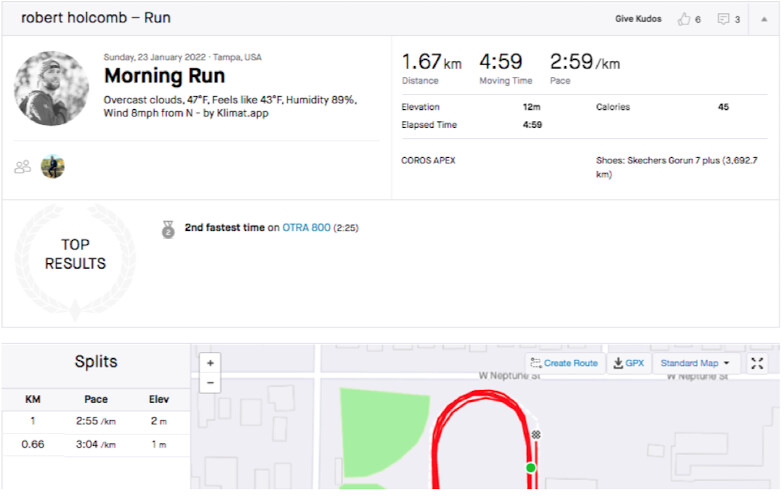
The morning of Jan. 23 proved to be ideal racing conditions for him as he set the record surrounded by his family and friends cheering him on.
For a Guinness World Record like this, some rules have to be followed for it to count. There has to be a human inside the stroller and all four wheels must remain on the ground throughout the entire race.
The world’s fastest stroller dad, Holcomb holds personal bests of 15:23 for 5K and 34:26 for 10K, of which he both set in 2019. Now that record is out in the media, he anticipates another fast father will come along and shatter it.
Next for Holcomb is Tampa’s Publix Gasparilla Distance Classic Half Marathon on Feb. 26.
(01/29/2022) ⚡AMPby Running Magazine
What type of Strava runs get the most kudos?
We all love that Strava notification of appreciation after completing a long run or workout. Strava is about much more than kudos – it’s about the community that motivates us to upload our runs. But we all want to know: which run activities stand out the most?
If you are looking to collect more kudos on your uploads, here are the run activities that stand out on your Strava feed.
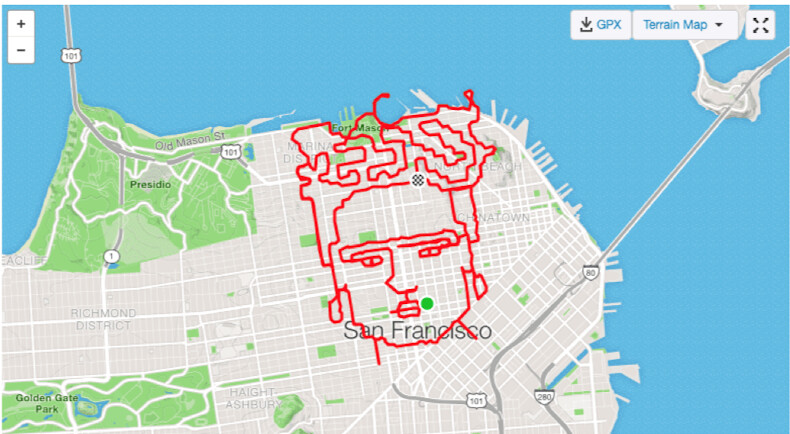
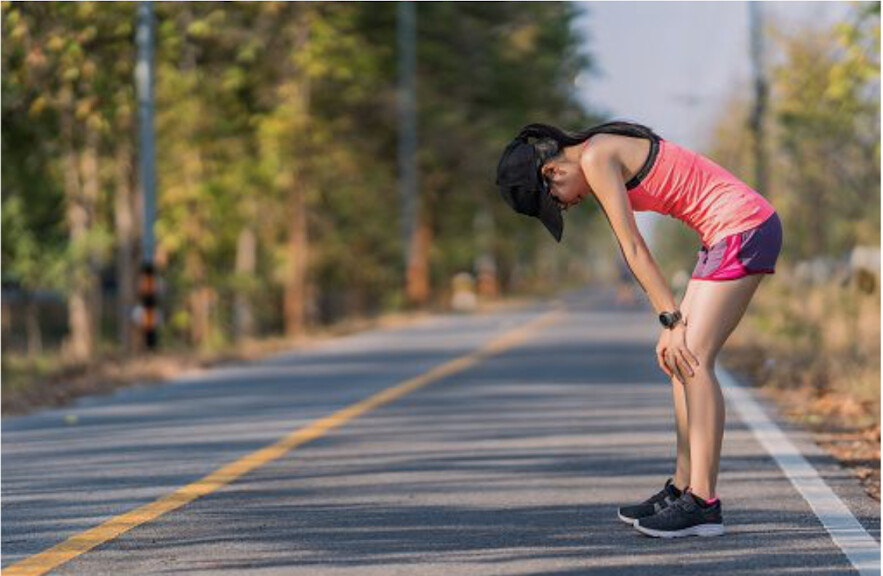
Personal bests and CR’s
This explains itself. There is nothing more rewarding for you and your followers than seeing a personal best on your feed. These uploads deserve thousands of kudos, as everything the athlete has trained for has paid off!
Course records are set by reaching the fastest time on a Strava segment (a specific part of a road or trail created by members, where athletes can compare times). For a segment to be created it must have three things: a start point, an endpoint, and a series of locations in between. The first key to segment creation is that the data has to already exist within one of your Strava activities. Each segment made will compute the fastest GPS times run on the segment, with the leader holding the crown. Crowns or (CR’s) are extremely hard to get, and are always kudos magnets for users.
Marathons or long runs
Running a marathon is hard, and runners deserve all the encouragement and glory after they cross the finish line. Similar to personal bests, any marathon finish deserves 1,000’s of kudos.
With 40,000 kudos, Molly Seidel’s Tokyo 2020 bronze medal-winning run is the most kudo’d run activity on Strava to date.
Ice beards
It’s the most wonderful time of the year for gnarly ice beards. Even though your face might feel frozen, it will generate many laughs and kudos on your Strava feed.
Breathtaking photos
It’s never too late to turn your Strava page into your Instagram. Give your followers a grasp of the conditions or environment that you running in. It’s difficult not to give kudos to beautiful mountain shots, beach pictures or sunsets.
Strava art
How can you not give these modern Pablo Picassos a thumbs up? The planning that goes into their route is sensational, and one wrong turn can screw up everything.
(01/29/2022) ⚡AMPby Running Magazine
How to stay safe if you are a morning runner
Running is, as we all know, the best form of exercise. Not only is it good for your physical health, but it’s clearly good for your mental health, too – when you’re running, you can focus on your next step and the next one and not have to worry about anything else.
Or rather, you don’t have to worry about almost anything else. You do need to think about your safety. If you choose to go out running first thing in the morning when there are very few people around, you could be making yourself a target for unsavory characters who mean to do you harm. With that in mind, here are some ways to help keep yourself safe.

Tell Someone Where You’re Going
Because most runners go alone, especially when it’s early morning, it’s crucial that you tell someone when you are leaving the house, where you are running, how long you expect to be, and let them know when you get back home too. When you do this, they’ll know to watch out for you checking in with them, and if you don’t, they can quickly get in touch to ensure that you’re okay.

Although the majority of people are perfectly safe when they’re running, sometimes an accident can happen, or you might come across someone unpleasant. If this delays you and you’re unable to check-in, when your friend or family member calls, you can get the help you need. This is why it’s crucial to not only give them timings to follow but a route too. Help will find you more easily that way.
Don’t Be Predictable
If you stick to a routine, you might be making yourself a target without even realizing it. Leaving the house at the same time each day, wearing the same clothes, running the same route, and so on will all be something that someone wanting to steal from or attack you will be looking for. They might also be watching to see you post your running times and route on social media.
Therefore, mix up your routine as much as you can. Try not to run the same route two days in a row, and do it at different times if possible. It’s a shame that this has to be the case, but in the interests of your own personal safety, it’s wise to take precautions, just in case.
It’s also important not to make yourself a target by wearing expensive things such as your phone, earbuds, or even jewelry. Hide these items or leave them at home – even if you used a The Styled Collection coupon to buy the items, they’d still look tempting.
Greet Other Runners
Assuming you meet any other runners when you’re on your morning run, it’s important to greet them as you go by. Why is this important? It’s because you’re more likely to be remembered if you engage with someone.
Although this won’t stop something bad from happening, it would make it easier to deal with the situation if it did – other runners are likely to remember seeing you, and that could help catch the perpetrator or find you if you are missing.
(01/28/2022) ⚡AMPby Colorado Runner
Olympic 100m champion Marcell Jacobs hits back at doping accusations
Olympic 100m champion Marcell Jacobs has furiously denied doping allegations and claimed his gold medal was won with "blood, sweat, tears and injuries."
Jacobs, 27, shocked the world in Tokyo last summer when he took the title from America's Fred Kerley by clocking 9.80 seconds.
His time represented a new Italian record and the third occasion during the Games where he had broken the 10-second barrier, having only done so once previously.
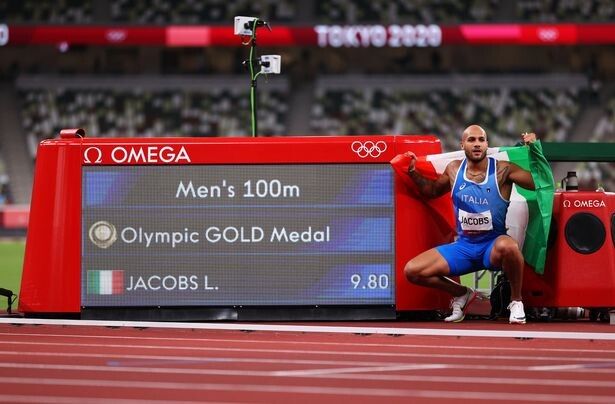
He later notched an historic double by helping the Italian team to gold in the 4x100m relay and was duly chosen to carry his country's flag at the closing ceremony.
But adulation from his homeland was negated by scepticism elsewhere, especially when Jacobs announced he would be ending his season immediately after Tokyo.
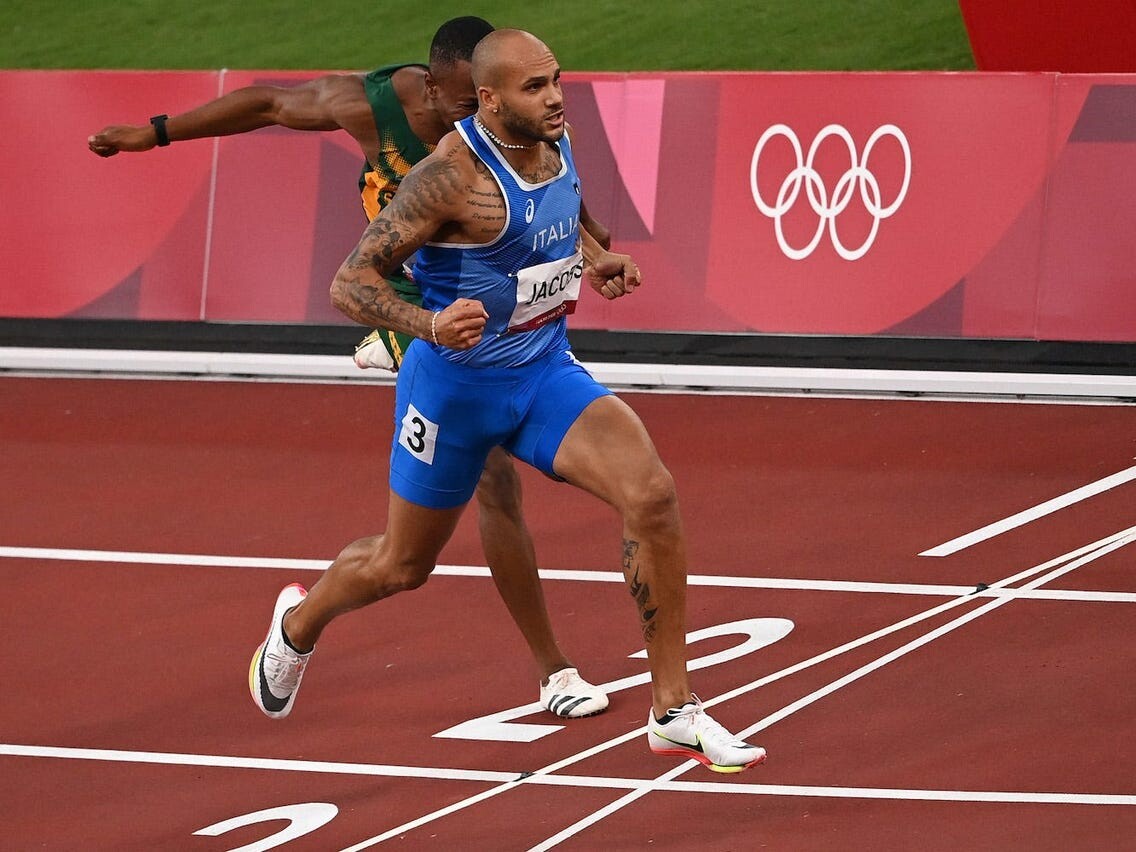
Japan wasn't the only time that the sprinter had been perceived to have over-performed last year, also taking the European indoor title in Torun in a personal best of 6.47 seconds.
Perception was further plagued following the Olympics when Jacobs’ former nutritional advisor, Giacomo Spazzini, was held in a police investigation dubbed ‘Operation Muscle Bound’ over the illegal distribution of anabolic steroids.
However, Jacobs himself continues to vehemently deny any personal wrongdoing, and when asked in an interview with the Daily Telegraph if he had taken performance enhancing drugs, emphatically answered "Absolutely not, and I would not.
"People think they can say whatever they want about you without understanding that sometimes what they say can be hurtful.
"The negative pieces hurt me a bit because what they did was put doubt over my victories. My victories represent extreme hard work. Hard work that nobody saw, hard work that was blood, sweat, tears and injuries."
On his dubiously timed break from the sport, Jacobs insisted it was down to physical exhaustion, and not a ploy to avoid scrutiny, claiming he “needed to regenerate my mind and body.”
(01/28/2022) ⚡AMPby Fraser Watson
American Jim Walmsley will be taking another stab at UTMB
The 2022 edition of the Ultra-Trail du Mont-Blanc (UTMB) is seven months away, but the elite fields have been made official. Although he has never done better than fifth (and that was back in 2017), American Jim Walmsley will be gunning for a podium finish again on Aug. 28, along with seven of Canada’s top ultrarunners, including last year’s third-place finisher, Mathieu Blanchard. Check out the top athletes who will be racing this year.
UTMB — men

Blanchard, who is from France but lives and trains in Montreal, is among the top men who will be competing this year. Going into the race, Blanchard says his goal is to win the race, and he’ll have two main focuses for his training: “the first will be to prepare myself mentally, to visualize, to accept this possibility of a big goal because I still have trouble believing it today,” he says. “The second will be to build a logical race path to prepare for this race, choices of reason rather than choices of the heart.”
Last year’s second-place finisher, Aurélien Dunand-Pallaz of France will be returning, along with 2019 UTMB winner, Pau Capell of Spain. Walmsley, whose top finish was fifth in 2017 but who has won the Western States 100 for three consecutive years (2021, 2019, 2018) will also be challenging for a podium spot, as will France’s Xavier Thévenard, who has won UTMB three times (2018, 2015, 2013) and placed second in 2019. Nine other recent top-five finishers will also be joining them on the start line.

Notably absent from the start list is last year’s winner, François D’Haene and three-time UTMB champion, Kilian Jornet.
UTMB – women
Canadian ultrarunning fans will have plenty to cheer about in the women’s race in August. Three top Canadians will be on the start line, including Montreal’s Marianne Hogan, who won the 2022 Bandera 100K and placed second at the Ultra-Trail Cape Town 100k. Toronto’s Claire Heslop, Canada’s top finisher in 2021, will be joining Hogan, along with Alissa St. Laurent of Moutain View, Alta., who placed fifth in the 2018 UTMB TDS 145K in 2018 and sixth at UTMB in 2017.
“My dream result would be a top 10 at UTMB,” says Hogan, “so I will definitely shoot for that. A lot can happen come race day, so I will make sure to show up to the start line as ready as possible.”
Other top contenders on the women’s side include Camille Herron, who won the 2021 Javelina Jundred Mile (and broke the course record) in 2021 and set the 24-hour world record in 2019, Anna Troup, who won the 2021 Lakeland 100 Mile and the 2021 Spine Race Summer Edition 268 Mile, Sabrina Stanley, two-time winner of the Hardrock 100 and Beth Pascal, winner of last year’s Western States and two-time top-five finisher at UTMB.
There will be five other recent top-five finishers on the start line as well, but running fans will be disappointed to hear the two-time winner Courtney Dauwalter, 2019 third-place finisher Maite Maiora, among several other past winners, will not be in Chamonix on August 28.
CCC — women
There will be three elite Canadian women in the 100K CCC, including Victoria’s Catrin Jones, who placed in the top-10 at the 2019 Comrades Marathon 90k and holds the Canadian 50-mile and six-hour records. She will be joined by Ailsa MacDonald of St. Albert, Alta., who won the 2020 Tarawera 100 Mile and the Hoka One One Bandera 100K, and placed sixth in the CCC in 2019. Rounding out the Canadian squad will be Vancouver’s Kat Drew, who was third at the 2019 Bandera 100K, first at the Canyons 100K and eighth at Western States in 2019.
Other notable runners in the CCC include New Zealand’s Ruth Croft, who won the 2021 Grand Trail des Templiers 80k, placed second at the 2021 Western States 100 and won the UTMB 55K OCC in 2018 and 2019. France’s Blandine L’hirondel will also be looking to land on the podium after winning the OCC last year.
(01/28/2022) ⚡AMPby Brittany Hambleton
North Face Ultra Trail du Tour du Mont-Blanc
Mountain race, with numerous passages in high altitude (>2500m), in difficult weather conditions (night, wind, cold, rain or snow), that needs a very good training, adapted equipment and a real capacity of personal autonomy. It is 6:00pm and we are more or less 2300 people sharing the same dream carefully prepared over many months. Despite the incredible difficulty, we feel...
more...Eight tips for a successful treadmill run, Follow this advice for an effective and enjoyable indoor ruf
If you’re like the majority of Canadians across the country, your usual running routes are currently covered in snow and ice. The winter weather conditions might have you taking at least some of your runs inside to log your miles on a treadmill, either in your home or at your local gym. If this is the case, keep these eight tips in mind before you begin to make sure your run is safe, effective and (dare we say it) fun.
Don’t skip the warm-up and cool-down
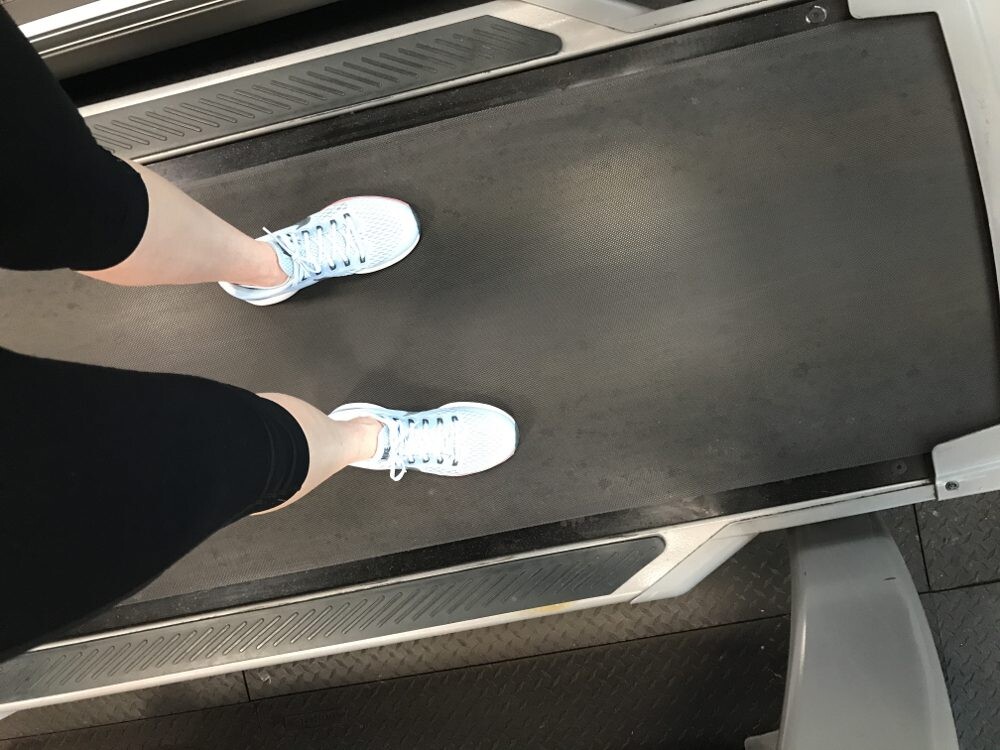
When you run outside, you usually start off a bit slower and spend the first few minutes gradually working your way up to whatever speed you’re planning on running that day. Many runners forget this when hopping on the treadmill, and attempt to crank it up as soon as they start. Don’t forget to take the first five or 10 minutes of your run to increase your speed gradually, and to do the same thing in reverse at the end. Cooling down properly will help bring your heart rate back down to normal so you can avoid that dizzy, still-moving feeling that comes with getting off the treadmill too fast.
Know your pace ahead of time
Most treadmills record your speed in either miles per hour or kilometers per hour, rather than an actual running pace. Make sure you know what those numbers are for you before you go to start your workout, to avoid doing mental math on the fly. For example, 7.5 miles per hour is equivalent to an eight-minute mile or a five-minute kilometer. Click here for a handy conversion chart to know your treadmill speed.
Always run on an incline
When you have the treadmill set to zero, it’s actually the equivalent of running on a slight downhill outdoors. To better simulate a flat road, set the incline to 1-2 per cent. At the same time, be careful not to overdo it and crank up the incline too much (more than seven per cent) for your entire run because it puts a lot of strain on your back, hips and ankles.

You’re better off increasing the incline for brief amounts of time periodically throughout your run, to simulate a hill workout or a run with rolling terrain. After all, it’s rare you’d find yourself in a situation when your entire run is up a steep hill.
Don’t hold the handrail
The handrail is there for safety, not for you to clutch onto for dear life while you’re running. Holding on to the treadmill compromises your running form and can lead to neck, shoulder and back pain. It also reduces your load and actually makes running easier, which may feel good now, but will come back to haunt you when you go running outdoors later.
Handrails on a treadmill are there to help you get on and off safely. If you feel you need to hold onto them when you’re running because you’re afraid of falling off, you’re probably going too fast. Slow your speed down and get comfortable before cranking it up again.
Don’t jump off while it’s moving
On that note, if you need to get off the treadmill in the middle of your run for some reason, don’t try to jump off it while the belt is still whirring away at your running speed. This is one of the main ways people injure themselves when using a treadmill. If you need to pause your workout, slow down the speed to a very reduced pace and bring down the incline before stepping off. If it’s a real emergency, most treadmills have an emergency stop button right in the center that will slow the belt down for you so you can get off safely.
Don’t stare at your feet
Many runners are tempted to look down at their feet when they’re on the treadmill, but trust us — your feet know what they’re doing just the same as when you’re running outside. It’s OK to do a quick feet-check every so often if you feel you’re getting a little too close to the front of the treadmill, but otherwise, look up as you normally would to maintain good running form.
Bring entertainment
There’s a reason why they call it the dreadmill. Running in one place indoors can get boring, so come prepared with a good podcast, your favorite pump-up playlist, or throw on a movie if you’re at home. Whatever you need to pass the time is fair game when you’re taking your run inside.
Try a workout
Treadmill running doesn’t just have to be for your easy days. In fact, when the running conditions aren’t great outside, you’ll probably get more benefit from moving your workout indoors. Without having to deal with slippery, treacherous roads, you’ll actually be able to hit the paces you’re trying to run during a speed work session, but those same conditions will force you to slow down on your easy days, so you can actually recover.
(01/27/2022) ⚡AMPby Brittany Hambleton
The best nutrition for competitive runners
Competitive runners like to set personal bests, if not win races. Many factors impact how well you can run. Some factors are out of your control, such as heat, humidity, wind, altitude, water conditions, as well as the time of the event, amount of time between events, and perhaps jet lag. But nutritional factors are in your control, including what, when, and how much you eat. Simply put, to run at your best, you need to know how to eat well enough to fight fatigue and be strong to the finish.
To address the how to eat to run at your best issue, I looked to the highly respected sports nutritionist Louise Burke PhD. researcher at Australian Catholic University in Melbourne. Here are some key points from her journal article on Nutritional approaches to counter performance constraints in high-level sports competition. This information might inspire you to consult with a registered dietitian/ board-certified specialist in sports dietetics (RD CSSD) who can help you optimize your sports diet.

Eating
• Carbohydrate is a fundamental source of energy for both your muscles and your brain. Carbohydrate in the blood, known as blood glucose, fuels the brain so it can focus on—and respond quickly to—the task at hand. To optimize athletic performance, you want to maintain adequate blood glucose levels during exercise.

• Blood glucose gets supplied from your liver as well as from the banana, toast or other form of sugar or starch (carb) you eat before and/or during exercise. Some runners avoid pre- and during-exercise fuel, fearing it will create intestinal distress. The better path is to train your gut to tolerate foods and fluids. During training sessions, experiment with a variety of carbs (dried pineapple, granola bar, diluted juice) and/or a variety of flavors and brands of commercial products (sports drinks, gels, chomps in), so you can learn what settles best. Choosing a variety of carbohydrates can increase the rate they are absorbed and might reduce the risk of GI distress. Having a well-tested fueling plan is helpful.
• Training enhances your ability to burn fat. Given fat stores are essentially limitless, a fat-adapted endurance runner (theoretically) should be able to perform very well without having to eat much. Less food could reduce intestinal upset. Sounds good, but this theory doesn’t always work. Research shows that athletes on a high fat, very low carb keto diet can maintain their baseline performance, but during real-life high intensity competitive endurance events, abundant evidence indicates their performance declines. That’s in part because burning fat, as compared to burning carb, requires more oxygen. When keto athletes attempt, let’s say, a high intensity sprint to the finish, the lack of adequate oxygen leads to reduced power.
Brain function
• As a runner, you need a well-fed brain, to help you concentrate, focus, and make wise decisions. A well-fed brain can also help keep you motivated to run at a hard pace. To feed your brain, you want to embark upon exercise being well fed, with blood sugar in a normal range (blood glucose drops overnight) and not be fasted and running on empty.
• Caffeine is known to reduce the brain’s perception of pain, effort, and fatigue (even in runners who regularly consume coffee). The recommended dose is 1.5-3 mg per pound of body weight (3-6 mg/kg) but one size does not fit all. Experiment to find the dose that’s best for your body!
• Runners consume caffeine via gels, caffeinated energy bars, pre-workout supplements, caffeine pills, and coffee. The problem with coffee is the variability of the caffeine content, which makes it hard to identify a specific dose.
• Some energy enhancers do not need to be absorbed into the body to offer beneficial effects. For example, simply rinsing the mouth with a sugar solution/sports drink (and spitting it out) stimulates reward centers in the brain, allowing you to run harder.
• With some substances, the mouth does not have enough sensors, so you need to ingest the substance to get performance benefits. For example, drinking a small amount of a bitter substance such as quinine can trigger a beneficial “flight or fight” when taken immediately before a short, intense effort, such as a 30-second sprint.
• Rinsing the mouth every 5 to 10 minutes with a menthol-containing solution creates a perceived cooling effect that can help to increase power or speed during prolonged exercise in the heat. But be careful. If you feel cooler—but actually are not cooler, you might over-extend yourself and end up slowing down prematurely.
• Anti-cramping agents such as pickle juice or spicy tastes might be helpful for runners who experience muscle cramps. These pungent tastes are thought to “distract” the nerves involved with the cramping muscle and reduce the severity of the cramp. (More research is needed.)
Fluids
• You want to be sure you are optimally hydrated before you start running. Your first morning urine should be light-colored, not dark and concentrated.
• Whether programmed drinking (according to a plan) is better than drinking as desired, according to your thirst, depends on your sport. For example, a marathoner, as compared to a 10K runner, can develop a larger mismatch between sweat losses and fluid intake.
• The suggested goal is to lose <2% of your body weight during exercise (3 lbs for a 150-lb runner). In lab-based research, a loss of >3% of body weight (4.5 lbs) is linked to reduced performance. In real life, many runners’ motivation to win over-rides the negative effects of being under-hydrated. Questions remain unanswered: Could underhydrated runners have performed better If they were better hydrated? Or does being lighter due to dehydration offer an advantage? Stay tuned. Sports nutrition is an evolving science.
(01/27/2022) ⚡AMPby Colorado Runner
2022 Registration is now open for the TCS Toronto Waterfront Marathon
After two years of virtual editions, the Toronto Waterfront Marathon is back with in-person 42.2K, 21.1K and 5K options and a new global sponsor in TCS. The in-person races at the TCS TWM will take place the weekend after Canadian Thanksgiving, on Oct. 16, 2022.
The TCS Toronto Waterfront Marathon is Canada’s premier running event and the grand finale of the Canada Running Series. The race also serves annually as the Athletics Canada National Marathon Championships and has doubled as the Olympic Trials leading up to the games.

In the past, the Toronto Waterfront Marathon has set the stage for outstanding performances from Canadian Olympians to competitive, recreational and charity runners.

Runners can choose to compete in the TCS Toronto Waterfront Marathon in-person race on October 16 or virtually anytime between Sept. 16 and Oct. 16. Registration for the in-person marathon starts at $130 and $100 for the half. Take advantage of the early bird pricing before prices increase.
All participants who register will receive a finisher medal, Asics souvenir shirt, race bib, nutrition products and a free download of the TCS Toronto Waterfront Marathon app. On the new race app, runners and spectators will be able to enjoy live runner tracking, course maps, augmented reality features and digital cheer cards.
(01/27/2022) ⚡AMPby Marley Dickinson
TCS Toronto Waterfront Marathon
The Scotiabank Toronto Waterfront Marathon, Half-Marathon & 5k Run / Walk is organized by Canada Running Series Inc., organizers of the Canada Running Series, "A selection of Canada's best runs!" Canada Running Series annually organizes eight events in Montreal, Toronto and Vancouver that vary in distance from the 5k to the marathon. The Scotiabank Toronto Waterfront Marathon and Half-Marathon are...
more...Jamaica´s olympic champion Thompson-Herah headlines Birmingham 60m
Jamaica's five-time Olympic gold medalist Elaine Thompson-Herah is to star in the 60m at the Müller Indoor Grand Prix – a World Athletics Indoor Tour Gold meeting – at the Utilita Arena in Birmingham on Saturday February 19.
Champion in the 100m, 200m and 4x100m in Tokyo, Thompson-Herah is the Jamaican record-holder and second-fastest woman of all time over 100m (10.54) and 200m (21.53). Her incredible CV also includes an Olympic silver, in addition to a World Championships relay title and 200m silver in 2015. A World Indoor Championships bronze medalist over 60m, she has a personal best of 6.98.
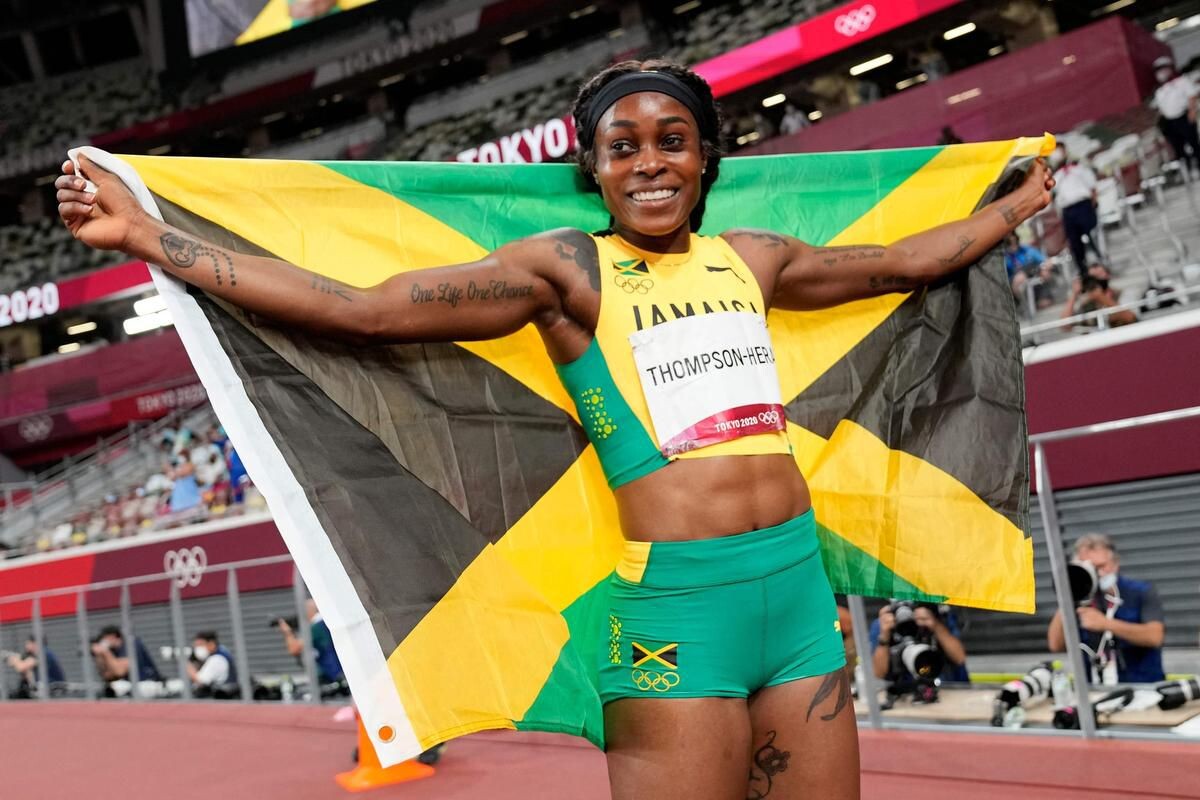
“I’m so excited to race in Birmingham to start my 2022 campaign,” said the 29-year-old. “I have enjoyed competing in the UK over the years and there is always a special atmosphere at this venue. I ran my PB at this arena in 2017, so competing here means a lot to me.
“This year is a huge one. I have big goals for the World Athletics Championships later this summer, but first I’d like to give fans something to cheer about in Birmingham.”
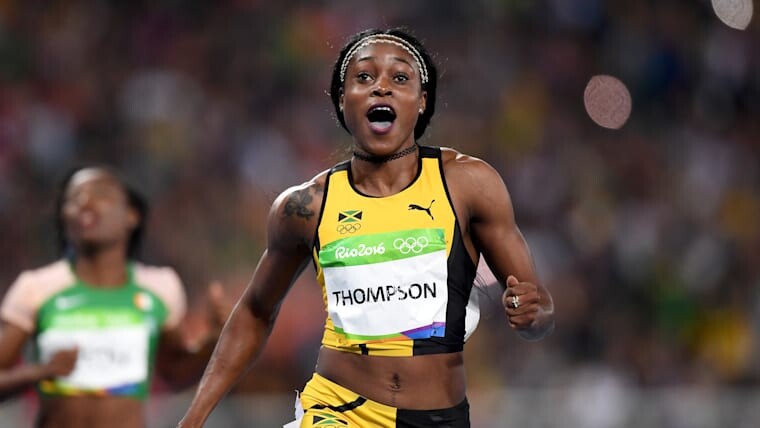
There she will be joined by Britain's two-time Olympic bronze medalist DaryllNeita, who also had a strong year in 2021. Last year she recorded lifetime best performances over 100m (10.93) and 200m (22.81) and finished eighth in the Olympic 100m final in Tokyo. Her 60m best is 7.21 from February 2021.
“I’ve matured a lot as an athlete over the last couple of years and my mindset has really developed,” she said. “In training I would imagine having the top girls in the world next to me and now I’m racing against them, so I know I belong here.
“The last time I raced Elaine indoors was in Birmingham in 2017 when she won, and I was fifth. Although she remains faster than me, I have to believe that the gap has closed since then and that with the backing of our brilliant British supporters, I can be more competitive this time around.”
The Müller Indoor Grand Prix is the fifth World Athletics Indoor Tour Gold meeting of 2022. There are seven Gold level meetings across the series, starting with Karlsruhe on January 28 and culminating in Madrid on March 2.
Other athletes set to compete in Birmingham include Olympic pole vault champion MondoDuplantis, world indoor 60m hurdles record-holder Grant Holloway, Olympic 1500m silver medalist Laura Muir and Olympic 800m silver medalist KeelyHodgkinson.
(01/27/2022) ⚡AMPby World Athletics
Muller Indoor Grand Prix Birmingham
The Müller Indoor Grand Prix Birmingham is one of the leading indoor meetings in the world with world-class athletics as part of the World Indoor Tour Gold series. The event will be staged at its traditional home at Utilita Arena Birmingham setting the tone for what is set to be an incredible year of track & field. ...
more...Dublin Marathon set for return to the streets with record 25,000 field
It’s back, and barring any major bumps in the road between now and October, it’s set to be bigger than ever.
For Dublin Marathon race director Jim Aughney, being able to plan with confidence for 25,000 runners taking to the streets has him expressing a sentiment felt by many this week.
“Good times are back again,” he says.

His statement is partly based on the backing of Irish Life, which announced a three-year title sponsorship of the race, but also on a feeling among organisers that their best-laid plans will no longer have to go awry.
That’s been the case for the past two years, the plug pulled on the 2020 edition in May that year, while the 2021 race was cancelled last July, the logistical nightmare of a mass-participation event proving a bridge too far given the restrictions in place. In the end, it would actually have been possible to stage, but four months out there was no way to guarantee social distancing among up to 250,000 spectators.

“When we were making the decision, the requirement was to have people socially distanced in pods,” says Aughney. “There were a massive amount of barriers required and it’d have taken us the best part of a month to put them out and take them away. We’d have had to install barriers going across different driveways. Logistically, it wasn’t possible.
“The goalposts changed after but we wanted to make the decision early to be fair to the competitors so everybody wasn’t hanging on whether it was on or off. We wanted to give people time to train. It was a very difficult decision.”
All those with an entry last year had the option to carry their place forward and Aughney says the “vast majority” chose that over a refund, a sign of the race’s enduring popularity.
Back in 2020, a whopping 35,000 applied for a place but the field was capped at 25,000 due to logistics, and Aughney is again planning for a field of that size, the biggest in the event’s history.
“We want to put everything in place to make sure it goes ahead safely and securely,” he says.
Nine months out, there’s little point predicting what restrictions, if any, might be required, but Aughney says there’ll be a runner’s charter whereby competitors self-declare “they’re fit and healthy to run the event and not to show up if they’re not.”
“Everybody is expecting Covid to be here for quite a while, and (the EU digital certificate) might become a requirement again when the event comes around. But it’s very hard to predict.”
Bereft of a real-life race for the past two years – a virtual event did take place, with competitors logging 26.2 miles in their local areas – the event’s management company took a colossal hit in finances, along with many others: the race generates an estimated €9 million for charity and €26.5 million for the city of Dublin.
As such, the backing of Irish Life is a “tremendous boost” that allows Aughney to make “ambitious plans” for its future.
“Let’s hope we can get it back on for 2022 and beyond and that we don’t have to repeat what we had in 2020 and 2021 ever again.”
Aughney has been race director for 25 years and while the headaches and heartbreaks of recent years might have forced many to walk away, he was adamant he’d only call time when the event was back at its brilliant best.
“It’s like the soccer players or rugby players: you want to go out on a high,” he says. “After the difficult times we’ve had, this will give us that opportunity.”
(01/26/2022) ⚡AMPby Cathal Dennehy
KBC Dublin Marathon
The KBC Dublin Marathon, which is run through the historic Georgian streets of Dublin, Ireland's largest and capital city.The course is largely flat and is a single lap, starting and finishing close to the City Centre. Conditions formarathon running are ideal....
more...New research says, massage beats ice bath for improving recovery
Massage and ice baths are two popular recovery tools runners like to use between workouts so they can prepare their bodies for the next day’s training. Recently, a group of researchers decided to find out which method is more effective and came to the conclusion that runners who want to recover faster should skip the cold water and head to the massage table.
The study

The study, which was published in the Journal of Strength and Conditioning Research, included 48 well-trained male runners to perform three workouts. First, they did an exhaustive interval workout followed by an incremental treadmill test 24 hours later at three speeds: 12, 14, and 16 km/h. They then received either a massage, cold water immersion (i.e. ice bath) or passive rest as a control. 48 hours later, they repeated the treadmill test.
The researchers found that the runners who received massage had recovered significantly better than the control group, and had greater stride height and angle changes as they sped up. The runners who received an ice bath, on the other hand, did not appear to experience any noticeable changes compared to the control group. “These results suggest that massage intervention promotes faster recovery of RE (running economy) and running biomechanics than CWI (cold water therapy) or passive rest,” the researcher concluded.

The bottom line
If you’re looking to speed up your recovery after a hard workout, this study shows ice baths may not be as helpful as you think. You’re better off booking an appointment with a sports massage therapist instead. For those of you who aren’t able to get a massage after every hard workout (which is likely most of the running population), foam rolling is another good option that has also been proven to be effective.
Of course, it’s important to remember that neither massage or any other recovery tool will be valuable if you’re not also covering the basics of proper recovery, like stretching and mobility work, proper hydration and good post-workout nutrition. When you nail the basics, you give your body the best chance at staying healthy and injury-free.
(01/26/2022) ⚡AMPby Brittany Hambleton
Why comfort is key when it comes to runners and footwear
The importance of wearing comfortable shoes cannot be overstated.Research shows that we use less energy, are less likely to sustain an injury or fall and we perform better in sports and fitness activities when wearing comfortable shoes. Comfortable footwear is also important in helping us recover from strenuous activity, foot pain or injuries.The concept of comfort is very complex, and there is no single aspect of fit that is more important than others. In fact, individuals tend to prioritize comfort features differently. For example, some people prefer cushioning and don’t notice arch support. Others may say that if the shoe or sandal supports their arch well, they will like it. Fashion of course also influences how we select shoes — some people are willing to sacrifice comfort for style.
Because comfort is highly subjective and thus can’t be measured, I tell my patients to try on several pairs of shoes, make comparisons and then to trust their instinct on which shoes or insoles have the fit, feel and overall comfort they prefer, instead of relying on someone else to tell them what to wear.
I also emphasize that comfort decreases from standing to walking to running so you should move in the shoes or sandals to accurately assess how they feel.
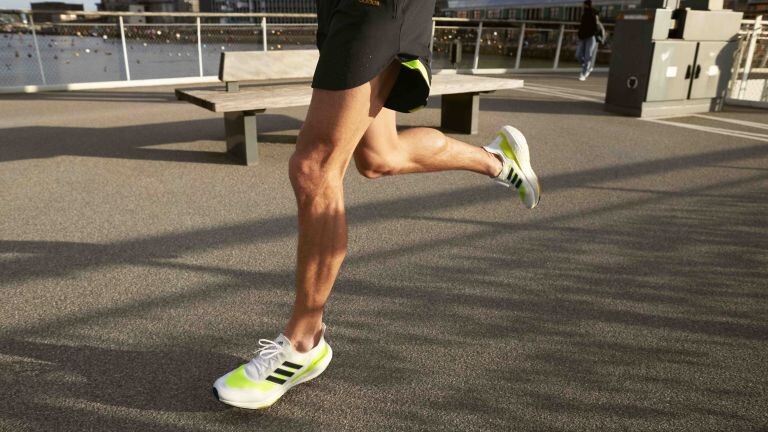
Research suggests that part of how we perceive comfort in footwear has to do with how efficiently we move with the shoes on. If the shoe works with our body’s preferred movement pattern, we will move more efficiently and will perceive it to be more comfortable. Conversely, if the shoe works against our preferred movement pattern, we will move less efficiently and will perceive the shoe to be less comfortable.
Again, this comfort measurement is highly subjective and personal. I encourage people to trust their instincts on comfort after making comparisons.
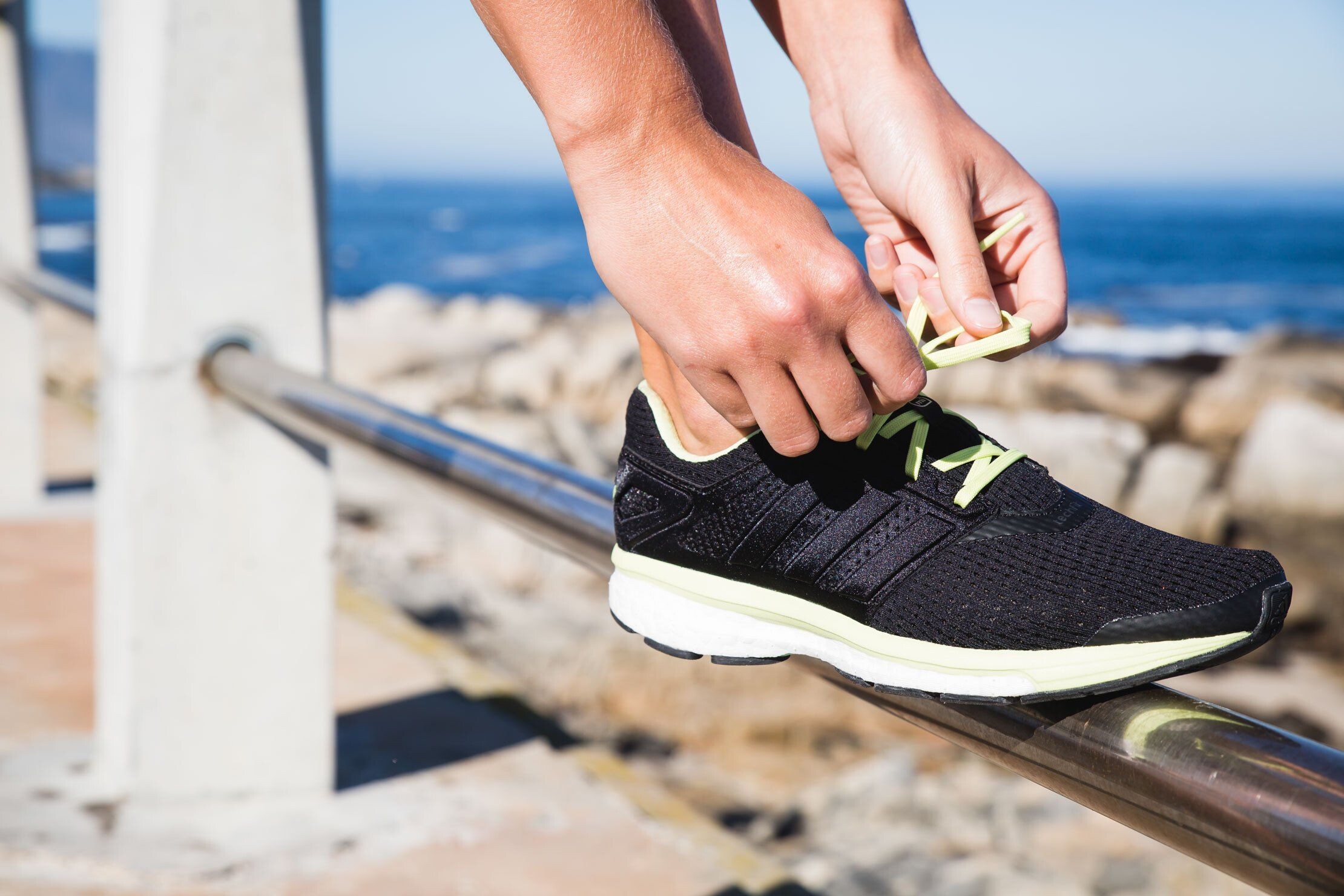
FACTORS THAT AFFECT COMFORT IN FOOTWEAR
Some of the factors that affect comfort in footwear include fit, cushioning, support, stiffness and climate.
FIT
Matching the shape of the shoe to the shape of the foot in terms of length, width and volume, is an important starting point. Keep in mind that shoe size is inconsistent across brands, so focus more on how the shoe feels, instead of the size number. A recent study found that up to 72% of people are wearing shoes that do not fit them properly. The same study showed that improperly fitting shoes are associated with foot pain. For runners, I emphasize a fit that is snug in the heel and midfoot but allows room for the toes -- the back 2/3 of the shoe should be snug and the toe box should feel roomy.
CUSHIONING
There is probably an ideal amount of cushioning for each individual but we do not have a method of measuring for it. Some people like a lot and some like a little — the “right” amount is whatever you prefer. One concept to keep in mind however is that there is such a thing as too much cushioning. Excessively soft shoes are rarely the answer to address foot pain or injuries.
SUPPORT
This term means different things to different people but often refers to how it feels in the arch and midfoot. As with cushioning, the “right” amount is based on your personal preference.
STIFFNESS
Some shoes are very flexible and some are stiff, the way the shoe flexes under the foot is dependent on the structure of the midsole and outsole as well as the size of the person and the speed at which they run. There is no single ideal amount of stiffness in footwear so the best method is to run in the shoe and and select the style that feels most comfortable to you.
CLIMATE
The shoe’s upper must allow proper dissipation of heat and moisture to help maintain comfort and protection from the environment. Running shoes tend to be very breathable while hiking boots tend to be more weather resistant and less breathable. A quality pair of socks with wicking properties definitely help maximize footwear comfort in combination with the shoe.
In summary, comfort isn’t just about feeling good. There are many health benefits to wearing comfortable shoes. In order to find the best shoe for you, make comparisons, run in the shoes and trust your instincts to determine your personal preferences.
(01/26/2022) ⚡AMPby Paul Langer, DPM
Kenyan Hellen Obiri to move up to the marathon with On
Over the weekend in Northern Ireland, two-time Olympic silver medalist from Kenya, Hellen Obiri, surprised the running world by winning the World Athletics Cross Country Tour Silver event, but not while wearing a Nike singlet. She was instead representing On – a brand that has recently been taking the world of athletics by storm, growing their team of elite-level sponsored athletes, including Canada’s Ben Flanagan.
A year and a half ago, On launched its first professional team, called On Athletics Club, coached by American distance runner Dathan Ritzenhein. “You need world-class athletes to build world-class products,” says Steve DeKoker, On’s head of global sports marketing. “Our goal is to build On as a global brand, and we need world-class athletes to help us develop.” Obiri’s signing is a huge acquisition for the Swiss sporting brand – she is the only athlete ever to win a world indoor, world outdoor and world XC title.

Ben Flanagan signs with On
“We want people that will fit the brand’s competitive values,” says DeKoker. “Both Obiri and Flanagan checked those boxes.” In her debut race wearing On product, the defending world cross country champion won the 8K easily in 26:44.
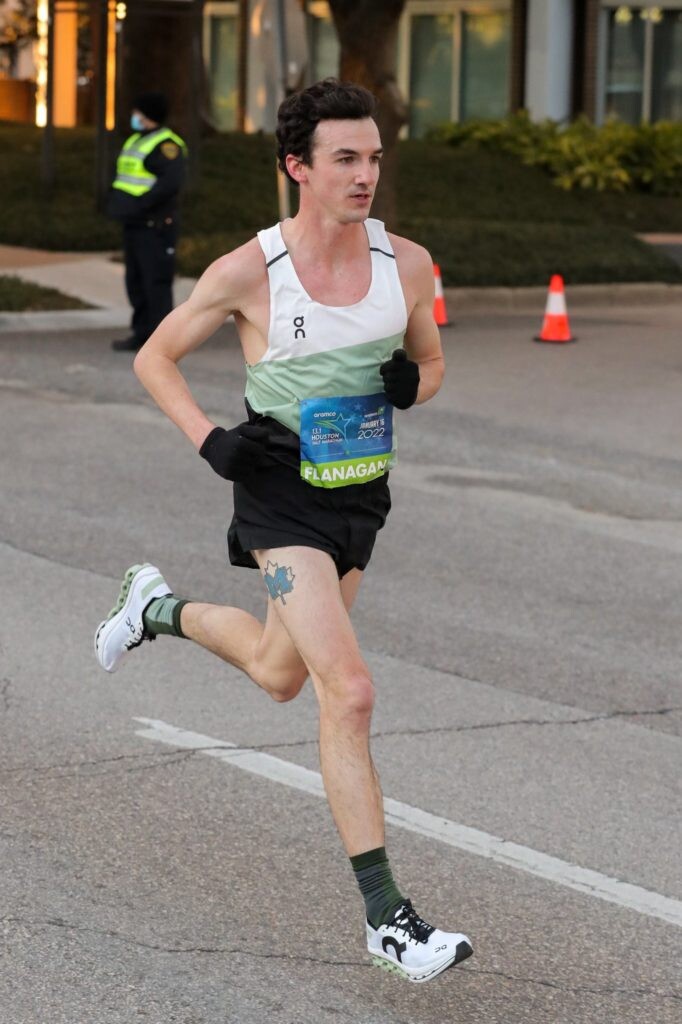
Obiri will head to the World Athletics Memorial Agnes Tirop XC race in Eldoret, Kenya on Feb. 12, before taking a shot at another 5,000m medal this summer at the 2022 World Championships in Eugene, Ore. “She will move up to the marathon distance in the fall of 2022,” DeKoker says. “And we will have our new premium-plated racing shoe on display for her debut.”
“The full expectation is to develop and supply our athletes with the top-of-the-line product to enhance their performance,” says DeKoker. “There are multiple On super-spikes scheduled to be released this year, with Alicia Monson racing in a pair this weekend at the NYC Millrose Games.”
Both Monson and Flanagan are two recent NCAA champions that DeKoker had his eyes on since they won their titles in 2018 and 2019. “When we found out Flanagan’s contract was up with Reebok, we knew we wanted to support him,” DeKoker says. “We feel he will have the Canadian half-marathon or marathon record in no time.”
For now, the brand plans to go all in to be competitive with the top distance brands on the roads and track, then dipping their feet in the sprint distances for the 2028 LA Olympics.
(01/26/2022) ⚡AMPby Marley Dickinson
Siberia's Marathon set the official Guinness World Record for the world's coldest marathon
The world’s coldest marathon took place January 22 in Yakutia, Siberia and it was -53C.
The winner was Russia’s Vasily Lukin, who crossed the finish line in 3:22. It was his second straight victory at the extreme race after it was postponed in 2021 due to the pandemic.


The best result among the women was Yakutia local Marina Sedalischeva, who finished in 4:09.
Sixty five runners from the U.A.E., U.S. and Belarus came to Yakutia to brave the frozen conditions. Organizers were forced to start the race early in the morning as temperatures hit -60 C later in the day in Oymyakon, Yakutia’s Pole of Cold.
(01/25/2022) ⚡AMPTry these stair workouts for improved strength and power, stairs are a great addition to any running plan
Whether you’re sick of hills, the weather is forcing you inside or you’re just trying to change up your workout routine, stairs are a great addition to any running regime. These two workouts will challenge your fitness and help you build strength as you prepare for the spring racing season ahead.
The benefits of stairs
Running or jumping up stairs is a type of plyometric or neuromuscular training. Stairs help strengthen your legs, heart and lungs, promote skill development and technique and improve your power and force. Doing plyometrics has been shown to decrease injury rates and improve speed, agility and ground contact time, all of which help you become a better runner.
If you live in an apartment building, stair workouts are a great training option when the weather gets nasty, and if you don’t, the Stairmaster at the gym is also a good option. A stadium with bleachers is great for training stairs outdoors if you have one nearby, but really, any sizeable set of stairs will do.
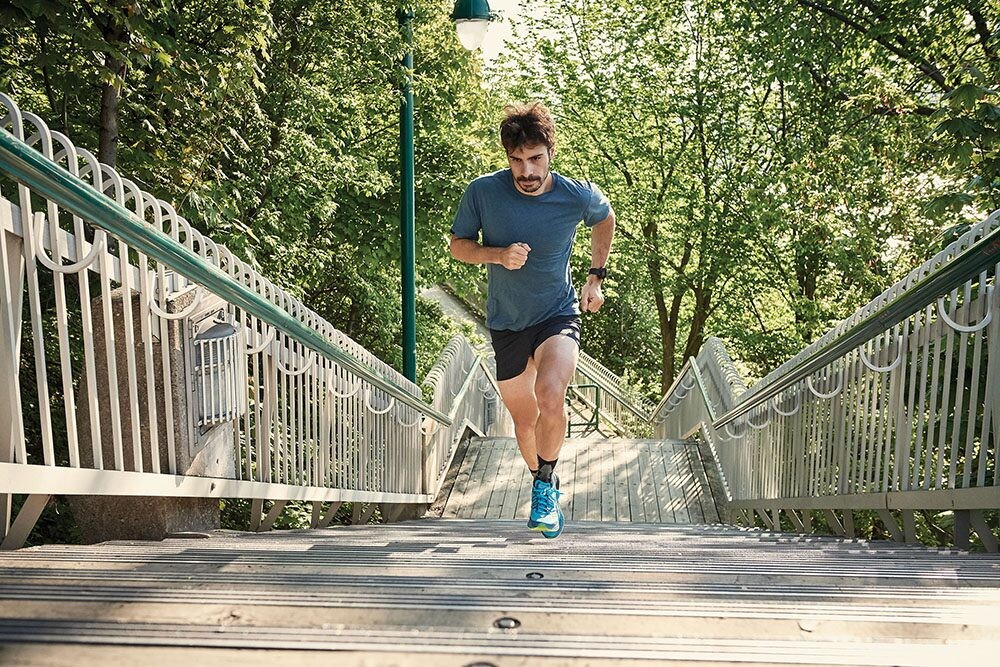
The other benefit to stair workouts is that because they are such an explosive, high-energy movement, they don’t have to be very long. This is perfect for busy runners who are trying to squeeze a quality workout in between other commitments. They can also be done as a part of a run, but if you’re going to do this, make sure you do the stairs near the beginning of your run for safety reasons.
The workouts
Workout 1

Warmup: 15-20 minute easy jog, or walk up and down the stairs for 5-10 minutes.
Workout: Run up and down the stairs for two minutes, followed by 60 seconds of rest.Hop up the stairs on one leg for 15 steps, walk back down, repeat on the other side.Hop up the stairs on both legs for 20 steps, walk back down, take 60 seconds rest.Run up and down the stairs for two minutes.
Cooldown: 10-15 minute easy jog, or walk up and down the stairs for 5-10 minutes.
Workout 2
Warmup: 15-20 minute easy jog, or walk up and down the stairs for 5-10 minutes.
Workout: 10-12 x 30 seconds up the stairs, jog back down to the bottom and take 20 seconds rest between each interval.
Cooldown: 10-15 minute easy jog, or walk up and down the stairs for 5-10 minutes.
(01/25/2022) ⚡AMPby Brittany Hambleton
Ethiopian Senbere Teferi set for Agnes Tirop Memorial race
Ethiopia's Senbere Teferi has become the latest international athlete to confirm her participation to next month's Agnes Tirop Memorial World Cross Country Tour.
She joins compatriot world 5,000m and 10,000m record holder Letesenbet Gidey, who is currently training Eldoret and Djibouti’s Ayanleh Souleiman.
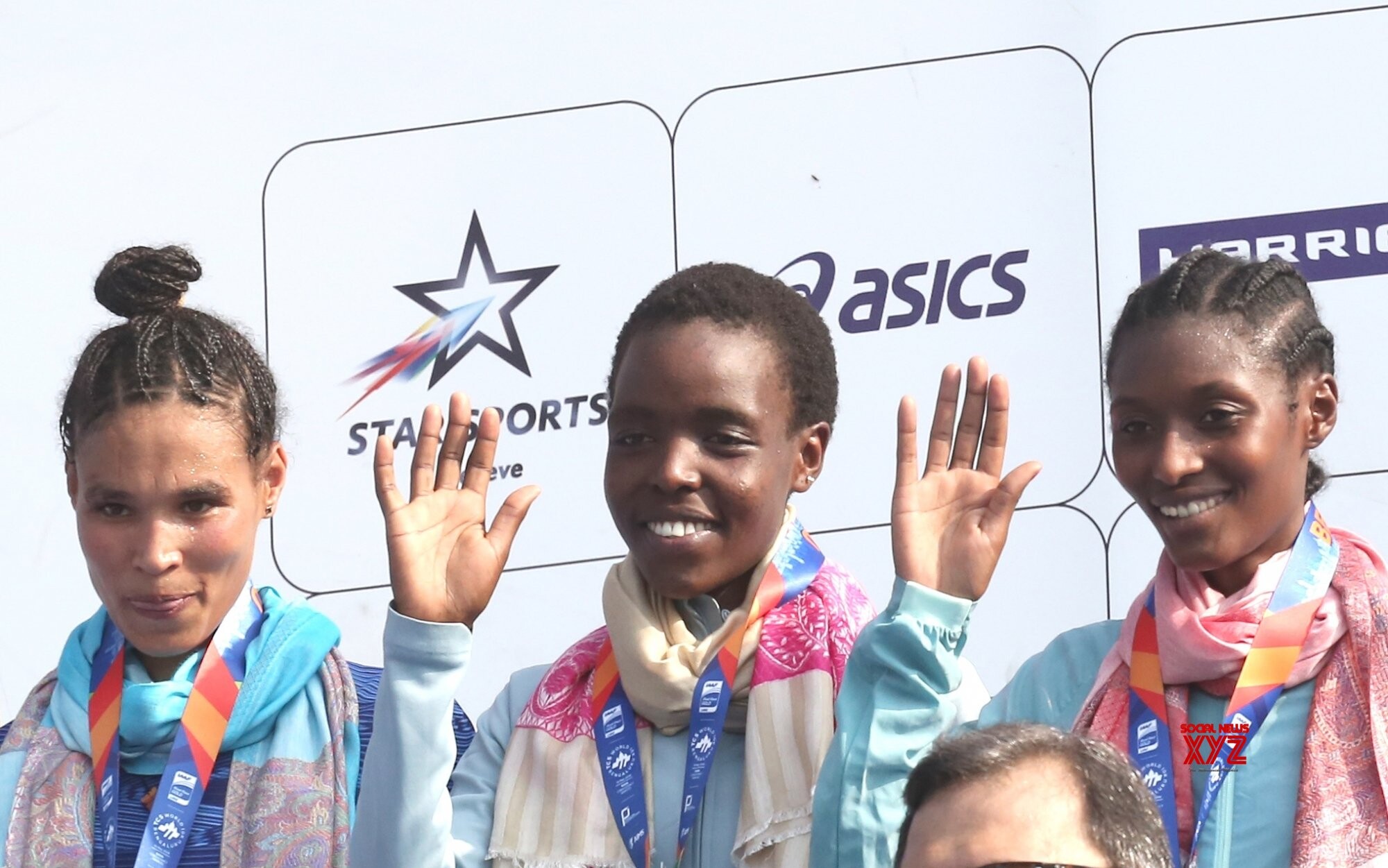
Kenyan Geoffrey Kamworor will also take part in the race set for February 12 at Lobo Village in Eldoret, Uasin Gishu County.
Teferi is keen to compete in honor of her departed best friend Agnes Tirop, who was found murdered in her home in Iten, Elgeyo Marakwet County on October 13 last year.

The estranged lover of the 2015 World Cross Country Championships winner, Ibrahim Rotich, is in police custody after denying murder charges.
In an interview with Nation Sport during the Great Ethiopian Run in Addis Ababa over the weekend, Tefere said she was saddened by Tirop’s cruel murder.
She recalled how they became good friends in 2015 when Tirop beat her during the World Cross Country Championships in China where she bagged silver behind the Kenyan.
Since then and they would always talk over the phone for long periods and were both managed by Gianni Demaonna.
“I was touched by the death of Tirop who was my best friend and shared a lot with in terms of competition. Losing such a nice friend in such a manner was really sad and I hope her family will get justice.
I will be starting my season during the Memorial Agnes Tirop Cross Country Tour in Eldoret, Kenya and running there is special for me because I want to honor my departed sister.
We always had a good relationship when we competed because we came from one continent and when a Kenyans win we celebrate, the same way we would when an Ethiopian wins," said Tefere.
She is looking forward to meet some of her competitors when she lands in Kenya in the next few days.
“I have never been to Kenya but I’m looking forward to meet some of the athletes who train there and get to share their experiences. I hear it is a nice place to train,” she added.
She is hoping to use the race to prepare for the World Championships to be held in USA later this year.
“The race in Kenya will gauge my preparations this season but my target is to compete in the 10,000m race where I’m targeting to be in the podium after emerging in sixth position in 2019 during the World Championships in Doha, Qatar,” said Tefere.
During the 2020 Tokyo Olympic Games, Tefere finished 10th in the 5,000m won by Dutch’s Sifan Hassan with Hellen Obiri settling for silver and Ethiopia’s Gudaf Tsegay winning bronze.
(01/25/2022) ⚡AMPby Bernard Rotich
Five attributes of a good training partner, if your running buddy possesses these qualities, you know you've got a good one
Training partners can have a profound impact on your performance. Having someone who shows up day after day to suffer through mile repeats or help long runs fly by not only makes training more fun, but can help you improve far more than you would have on your own. Not all running partners are created equal, but if your running buddy has these qualities, you’ve got yourself a great partner-in-crime.
1.- They’re on time
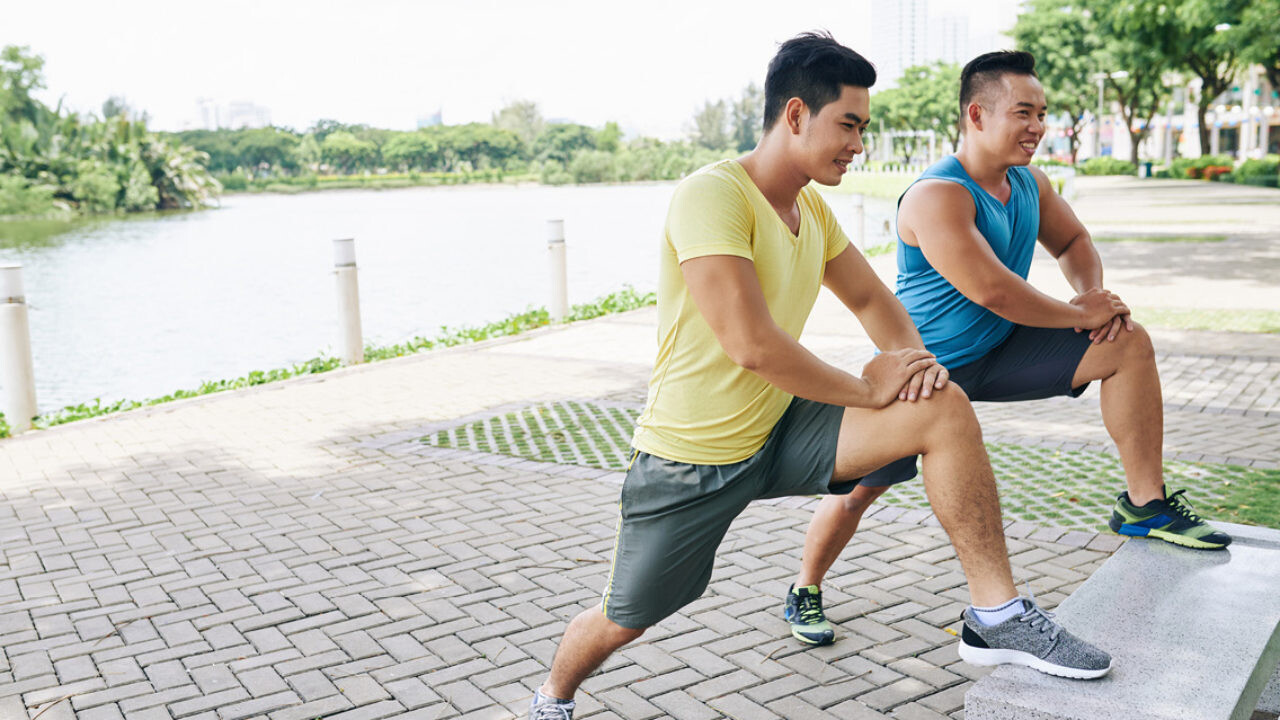
This is a very basic, yet crucial, part of a running buddy arrangement. If your training partner is constantly late to your workouts, forcing you to waste valuable time waiting for them, it’s time to have a hard conversation with them. If, on the other hand, your partner is punctual the majority of the time, it’s a sign that they value you and respect your time.
2.- They aren’t flaky

The point of having a training partner is to have someone to train with — not someone who constantly backs out of workouts and forces you to train on your own. Yes, life happens sometimes and unexpected things pop up, but a good running buddy is someone who shows up every time to put in the work.
3.- They don’t complain
Training partners are there to motivate each other. A good running buddy should always have a positive attitude about even the hardest of workouts to help get you both to the end with smiles on your faces.
4.- They don’t make it a competition
When your training partner is around the same speed as you, it opens the door for competition in workouts. A good running buddy never turns a run or workout into a race, but instead tries to work with you to have the best workout possible. If you end up having a better day and are ahead of them during the workout, they’re happy for you, not jealous.
5.- They keep it fun
Many runners fall into the trap of taking their training too seriously, which sucks the joy out of the sport. A good training partner knows how to keep running fun and lighthearted, so both of you can enjoy your training, rather than stress over it or dread it.
(01/25/2022) ⚡AMPby Brittany Hambleton





